You are using an out of date browser. It may not display this or other websites correctly.
You should upgrade or use an alternative browser.
You should upgrade or use an alternative browser.
Reviews by dosec
Filters
Show only:
Loading…
dosec
New Head-Fier
Pros: - All-rounder.
- Nice tonality.
- Easy to drive.
- Nice body, package and accessories.
- Nice tonality.
- Easy to drive.
- Nice body, package and accessories.
Cons: - None at this price.
Presentation

Hello, friends of AvaliaSom, I'm Marcelo Dosec, and the one I bring you is the Simgot EA1000 Fermat , a unit that was kindly sent to me by Simgot. Thank you very much! As usual, I will only give my personal opinions about the phone, without any obligation to say good or bad.
This IEM costs 220 USD (or around 425 USD with 92% Brazilian taxes in current legislation). As you can see, it's hard to be an audiophile here in Brazil.
It's no news to anyone that I like Simgot. On my list of favorite IEMs throughout my life, I have the EW200 and the EM6L, and I even had them on my 2023 favorites list. And, if you'll allow me a spoiler, I have an EA500LM here, and it's going to be on my list too.
But after all, what about the EA1000? Does it deserve a place in my heart and also on my list? Ok, I will answer this question at the end of this text.
The EA1000 Fermat is just below the EA2000, which is currently the brand's flagship, and I hope to buy it one day. From its more expensive brother, the EA1000 brought the passive radiator (PR), a feature still little explored in IEMs, and the models that use it can be counted on one hand. The PR has a structure similar to that of a dynamic driver (DD), but without voice coils or magnets, working passively according to the air flow displaced by the DD during its operation. In both the EA1000 and EA2000, the function of the PR is to give more depth and body to the bass.
Its unboxing follows Simgot's quality standard, and in the case of the EA1000 it brings a reference to Fermat's last theorem, a mathematical problem that took 358 years to be solved, and has been included in the Guinness Book since 1995 as “the most intricate mathematical problem of history.”

The external purple box is very beautiful, well built and features a reference to the aforementioned theorem on the front, while on one side there is a visual representation of the driver arrangement. On the back of the box, we find graphics for each of the nozzle combinations that the EA1000 offers.





The internal box moves laterally, as in the EA500 and EM6L. After opening it, we highlight the card alluding to Fermat, and just below we have the headphones in their cradle, a small box for the bag and another box that stores the accessories.


The synthetic leather bag is beautiful, and has a magnetic closure. In a light gray color, it has the Simgot logo on the top and the words “Salute do Art and Science”, the phrase that is present on other products from the brand. Very spacious, the bag has a mesh inside its fabric, as well as three elastic spaces to store accessories.



And speaking of accessories, the accessories box comes with a case of tips, which are the usual Simgot silicone tips, of good quality. There are also silicone rings in red, black and white/transparent, which, similar to what occurs on the EA500, are the rings that identify the different nozzles.


Above the nozzles, there is a metal stand that holds two of the interchangeable nozzles, with a pair of them already attached to the IEMs. As stated on the box, the silver nozzle with a red ring adheres to the 2019 Harman curve. The silver nozzle with a black ring adheres to the classic Simgot curve, while the gold nozzle with a white/transparent ring adheres to the Simgot curve. Golden from 2023. Two interesting facts: the golden nozzle is made of copper, while the others are made of steel. And the golden nozzle does not have any acoustic foam inside, just a damper next to the grille.

The IEM comes with a beautiful oxygen-free copper (OFC) cable, silver-plated and litz, with connectors, chin slider and splitter made of metal. Interestingly, the gold chin slider brings a beautiful touch of sophistication. The connections are 0.78 mm 2-pin for the earphone and 3.5 mm for the source.




The IEM itself exudes sophistication, with the entire body made of mirrored metal, with a faceplate that features a kind of resin window, the interior of which features a white background with textures and the Simgot logo in gold. The shape of the internal part is reminiscent of the EA500, with the difference that it has the PR output in the upper section, whose internal grille is gold, and the external grille has the L and R indications according to the sides of the phone. Its two-pin connector is slightly sunken into the metal body, protecting the connector.
The EA1000's sound is generated by a 10 mm dynamic driver (DD) with a diaphragm coated in purple gold, combined with the performance of a 6 mm passive radiator (PR). The DD in question is derived (but not the same) from the EA2000 driver, and is the second generation of DMDC technology belonging to Simgot, which uses a double magnetic circuit and double cavity system.
Comfort

The comfort of an IEM is a personal matter, and for me at least the fit of the EA1000 is excellent. Its body is very ergonomic, with no sharp corners. The nozzle is narrow, 0.6 cm in diameter (the same measurement as a Simgot EM6L , for example), and allows a shallow fit with L tips or a medium fit with S or M tips depending on the ear canal. As it is a ventilated headset, there is no pressure on the ear canal, but the seal is just good, and in noisy environments it isolates you to an average extent.
Musical Sound
I tried the IEM on my sources, which are: Dell Laptop, Apple Dongle, Truthear Shio, Simgot DEW4X , FiiO KA5, Cayin RU6 , Sony NW-A306 , Topping G5 and FiiO K7.
Note that I always listen to the earphones at low volume levels, around 55 to 65 dB according to the measurement made by the Apple AirPods Pro 2 in the “Health” App on the iPhone, so my impressions may differ from those who listen at higher volumes taller.
By the way, I invite you to check out my headphone test playlist on Spotify . This is a dynamic playlist, and the songs can change at any time, but they will always follow the purpose of presenting all the points I mention in my musical evaluation of the headphones.
Regarding sources, the Simgot EA1000 plays easily on any source, and the differences between one source and another are due to the particularities of each one.
NOTE: The following notes serve as a comparison parameter only in the price range in which the IEM falls.
As a result, the beats of “Ambitions Az a Ridah” sound very intense and correct, and the bass feel of “Paranoid” is very appetizing, with a lot of note weight and great presentation. Cellos and double basses are also well presented, and although the EA1000 is not a basshead, it delivers very high quality and refined bass.
In terms of speed, the insane kick drums of “Intra Venus” are presented without any difficulty or mishaps.
I must highlight how competent the tuning of this driver by Simgot was, as its mids sound as pleasant to me as those of the Kinera Freya 2.0, and I would have difficulty deciding which one is better. Listening to “Vilarejo” by Marisa Monte, it is impossible not to delight in the sweetness of her voice and instruments. In the case of more intense voices like Louane, the EA1000 is well controlled with the red nozzle, while male voices bring all the expected weight.
I didn't notice any sibilance in the track “Hello” by Evanescence, and I make a point of highlighting how pleasant Santana's guitar sounds on “Europe”.
There is an excellent level of brightness with the red nozzle, very good airiness and a very natural, very pleasant tone. I didn't identify peaks or valleys in the treble region that could bring any artificiality or strangeness, and the extension of these trebles is enough for anyone who doesn't have superhuman ears.
That being said, it is extremely pleasurable to hear the cymbals of a “September in Montreal” with the EA1000, and even more pleasurable to see how Lindsey Stirling's violin carries a beautiful timbre and extends to the heavens.
The earphone brings a very wide and holographic soundstage for an IEM, with a very interesting layering. The image painted in “Las Perlas de Tu Boca” is worthy of applause, and I direct the same praise to the separation of instruments and the resolution. It's fascinating how much you can notice each particularity of the music with this IEM in your ears.
One point where I think it is fantastic but not impeccable is the level of detail. Ok, it does deliver a great level of detail, but there are some microdetails missing here and there, nothing discrediting to my ears.
Sound in Games
In battle royale games, such as PUBG, the EA1000 is impeccable in delivering the position of opponents across the spectrum, with an excellent sense of distance, something that makes this guy worthy of a 5/5 with any nozzle. Rating 5/5.
In FPS games like CS2 ( without changing the sound settings ), the EA1000 also deserves high scores, especially with the white nozzle. No movement of opponents across the map is possible with this IEM, and it is definitely one of the best I have ever used for FPS games in my life. Rating 5/5.
In casual games, like Gensin Impact, the open world feeling is very evident with red nozzle, and the immersion is excellent. There is a very natural sound and it offers a high level experience. Rating 5/5.
And finally, in simulation games like Forza Horizon 5 , with the red nozzle there is a lot of intensity and depth of engine sounds, even if they are not bass that shakes the eardrums. Furthermore, there is an excellent sound from everything around, and the EA1000 ends up getting another top score. Rating 5/5.
Sound in Films, Series and Productivity
Because it has multiple filters, the EA1000 is very democratic in terms of use for films and series, with the red nozzle being more suitable for action titles, the black nozzle being the best option for more general titles and the black nozzle being ideal for documentaries or titles with lots of dialogue.
And for watching podcasts, the white filter is excellent, bringing voices to the front. The same goes for meetings, and given the comfort of the EA1000, for me it was possible to use it during a 12-hour work and study day without any problems.
Conclusion
Remember the question I asked at the beginning of the text? Well, the answer is a resounding YES. And I'll go further: with the Simgot EA1000 here, I wonder if it's necessary to have any other IEM wired in addition to it. In fact, this Simgot takes the term all-rounder to the maximum level. It definitely suited every use I tried to make of it, and it just wasn't able to replace my Apple AirPods Pro 2 for the obvious reason of having wires.
In short, it is a comfortable IEM, with extremely high-quality bass, very well-defined midrange and high-end treble, while also falling in love with the technicalities. And if the tuning isn't to your liking, just change the filter. Without any doubt I have never heard anything so versatile and enjoyable under 300 USD, and this place on my recommendation list is now his.
I still want to buy an EA2000 just to complete the collection, but thinking logically, the EA1000 replaces the entire Simgot line for me. And it also replaces all the headphones I've ever heard, even though it doesn't have the refinement of an Audiodream or the polish of a 64Audio. Just thinking rationally, this Simgot is everything I need.
Here's my suggestion for Simgot: how about a TWS with the sound of this EA1000?
Big hug!

Hello, friends of AvaliaSom, I'm Marcelo Dosec, and the one I bring you is the Simgot EA1000 Fermat , a unit that was kindly sent to me by Simgot. Thank you very much! As usual, I will only give my personal opinions about the phone, without any obligation to say good or bad.
This IEM costs 220 USD (or around 425 USD with 92% Brazilian taxes in current legislation). As you can see, it's hard to be an audiophile here in Brazil.
It's no news to anyone that I like Simgot. On my list of favorite IEMs throughout my life, I have the EW200 and the EM6L, and I even had them on my 2023 favorites list. And, if you'll allow me a spoiler, I have an EA500LM here, and it's going to be on my list too.
But after all, what about the EA1000? Does it deserve a place in my heart and also on my list? Ok, I will answer this question at the end of this text.
The EA1000 Fermat is just below the EA2000, which is currently the brand's flagship, and I hope to buy it one day. From its more expensive brother, the EA1000 brought the passive radiator (PR), a feature still little explored in IEMs, and the models that use it can be counted on one hand. The PR has a structure similar to that of a dynamic driver (DD), but without voice coils or magnets, working passively according to the air flow displaced by the DD during its operation. In both the EA1000 and EA2000, the function of the PR is to give more depth and body to the bass.
Its unboxing follows Simgot's quality standard, and in the case of the EA1000 it brings a reference to Fermat's last theorem, a mathematical problem that took 358 years to be solved, and has been included in the Guinness Book since 1995 as “the most intricate mathematical problem of history.”

The external purple box is very beautiful, well built and features a reference to the aforementioned theorem on the front, while on one side there is a visual representation of the driver arrangement. On the back of the box, we find graphics for each of the nozzle combinations that the EA1000 offers.





The internal box moves laterally, as in the EA500 and EM6L. After opening it, we highlight the card alluding to Fermat, and just below we have the headphones in their cradle, a small box for the bag and another box that stores the accessories.


The synthetic leather bag is beautiful, and has a magnetic closure. In a light gray color, it has the Simgot logo on the top and the words “Salute do Art and Science”, the phrase that is present on other products from the brand. Very spacious, the bag has a mesh inside its fabric, as well as three elastic spaces to store accessories.



And speaking of accessories, the accessories box comes with a case of tips, which are the usual Simgot silicone tips, of good quality. There are also silicone rings in red, black and white/transparent, which, similar to what occurs on the EA500, are the rings that identify the different nozzles.


Above the nozzles, there is a metal stand that holds two of the interchangeable nozzles, with a pair of them already attached to the IEMs. As stated on the box, the silver nozzle with a red ring adheres to the 2019 Harman curve. The silver nozzle with a black ring adheres to the classic Simgot curve, while the gold nozzle with a white/transparent ring adheres to the Simgot curve. Golden from 2023. Two interesting facts: the golden nozzle is made of copper, while the others are made of steel. And the golden nozzle does not have any acoustic foam inside, just a damper next to the grille.

The IEM comes with a beautiful oxygen-free copper (OFC) cable, silver-plated and litz, with connectors, chin slider and splitter made of metal. Interestingly, the gold chin slider brings a beautiful touch of sophistication. The connections are 0.78 mm 2-pin for the earphone and 3.5 mm for the source.




The IEM itself exudes sophistication, with the entire body made of mirrored metal, with a faceplate that features a kind of resin window, the interior of which features a white background with textures and the Simgot logo in gold. The shape of the internal part is reminiscent of the EA500, with the difference that it has the PR output in the upper section, whose internal grille is gold, and the external grille has the L and R indications according to the sides of the phone. Its two-pin connector is slightly sunken into the metal body, protecting the connector.
The EA1000's sound is generated by a 10 mm dynamic driver (DD) with a diaphragm coated in purple gold, combined with the performance of a 6 mm passive radiator (PR). The DD in question is derived (but not the same) from the EA2000 driver, and is the second generation of DMDC technology belonging to Simgot, which uses a double magnetic circuit and double cavity system.
Comfort

The comfort of an IEM is a personal matter, and for me at least the fit of the EA1000 is excellent. Its body is very ergonomic, with no sharp corners. The nozzle is narrow, 0.6 cm in diameter (the same measurement as a Simgot EM6L , for example), and allows a shallow fit with L tips or a medium fit with S or M tips depending on the ear canal. As it is a ventilated headset, there is no pressure on the ear canal, but the seal is just good, and in noisy environments it isolates you to an average extent.
Musical Sound
I tried the IEM on my sources, which are: Dell Laptop, Apple Dongle, Truthear Shio, Simgot DEW4X , FiiO KA5, Cayin RU6 , Sony NW-A306 , Topping G5 and FiiO K7.
Note that I always listen to the earphones at low volume levels, around 55 to 65 dB according to the measurement made by the Apple AirPods Pro 2 in the “Health” App on the iPhone, so my impressions may differ from those who listen at higher volumes taller.
By the way, I invite you to check out my headphone test playlist on Spotify . This is a dynamic playlist, and the songs can change at any time, but they will always follow the purpose of presenting all the points I mention in my musical evaluation of the headphones.
Regarding sources, the Simgot EA1000 plays easily on any source, and the differences between one source and another are due to the particularities of each one.
- Tone
NOTE: The following notes serve as a comparison parameter only in the price range in which the IEM falls.
- Bass: Level 4/5, Extension 5/5, Speed 5/5, Texture 5/5, Depth 5/5
As a result, the beats of “Ambitions Az a Ridah” sound very intense and correct, and the bass feel of “Paranoid” is very appetizing, with a lot of note weight and great presentation. Cellos and double basses are also well presented, and although the EA1000 is not a basshead, it delivers very high quality and refined bass.
In terms of speed, the insane kick drums of “Intra Venus” are presented without any difficulty or mishaps.
- Midrange: Level 3.5/5, Presence 5/5, Clarity 5/5, Voices 5/5, Transparency 5/5
I must highlight how competent the tuning of this driver by Simgot was, as its mids sound as pleasant to me as those of the Kinera Freya 2.0, and I would have difficulty deciding which one is better. Listening to “Vilarejo” by Marisa Monte, it is impossible not to delight in the sweetness of her voice and instruments. In the case of more intense voices like Louane, the EA1000 is well controlled with the red nozzle, while male voices bring all the expected weight.
I didn't notice any sibilance in the track “Hello” by Evanescence, and I make a point of highlighting how pleasant Santana's guitar sounds on “Europe”.
- Treble: Level 4/5, Brightness 5/5, Airiness 4.5/5, Extension 5/5, Timbre 5/5
There is an excellent level of brightness with the red nozzle, very good airiness and a very natural, very pleasant tone. I didn't identify peaks or valleys in the treble region that could bring any artificiality or strangeness, and the extension of these trebles is enough for anyone who doesn't have superhuman ears.
That being said, it is extremely pleasurable to hear the cymbals of a “September in Montreal” with the EA1000, and even more pleasurable to see how Lindsey Stirling's violin carries a beautiful timbre and extends to the heavens.
- Technicalities: Sound Stage 5/5, Image 5/5, Layering 5/5, Separation 5/5, Details 4/5, Resolution 5/5
The earphone brings a very wide and holographic soundstage for an IEM, with a very interesting layering. The image painted in “Las Perlas de Tu Boca” is worthy of applause, and I direct the same praise to the separation of instruments and the resolution. It's fascinating how much you can notice each particularity of the music with this IEM in your ears.
One point where I think it is fantastic but not impeccable is the level of detail. Ok, it does deliver a great level of detail, but there are some microdetails missing here and there, nothing discrediting to my ears.
Sound in Games
In battle royale games, such as PUBG, the EA1000 is impeccable in delivering the position of opponents across the spectrum, with an excellent sense of distance, something that makes this guy worthy of a 5/5 with any nozzle. Rating 5/5.
In FPS games like CS2 ( without changing the sound settings ), the EA1000 also deserves high scores, especially with the white nozzle. No movement of opponents across the map is possible with this IEM, and it is definitely one of the best I have ever used for FPS games in my life. Rating 5/5.
In casual games, like Gensin Impact, the open world feeling is very evident with red nozzle, and the immersion is excellent. There is a very natural sound and it offers a high level experience. Rating 5/5.
And finally, in simulation games like Forza Horizon 5 , with the red nozzle there is a lot of intensity and depth of engine sounds, even if they are not bass that shakes the eardrums. Furthermore, there is an excellent sound from everything around, and the EA1000 ends up getting another top score. Rating 5/5.
Sound in Films, Series and Productivity
Because it has multiple filters, the EA1000 is very democratic in terms of use for films and series, with the red nozzle being more suitable for action titles, the black nozzle being the best option for more general titles and the black nozzle being ideal for documentaries or titles with lots of dialogue.
And for watching podcasts, the white filter is excellent, bringing voices to the front. The same goes for meetings, and given the comfort of the EA1000, for me it was possible to use it during a 12-hour work and study day without any problems.
Conclusion
Remember the question I asked at the beginning of the text? Well, the answer is a resounding YES. And I'll go further: with the Simgot EA1000 here, I wonder if it's necessary to have any other IEM wired in addition to it. In fact, this Simgot takes the term all-rounder to the maximum level. It definitely suited every use I tried to make of it, and it just wasn't able to replace my Apple AirPods Pro 2 for the obvious reason of having wires.
In short, it is a comfortable IEM, with extremely high-quality bass, very well-defined midrange and high-end treble, while also falling in love with the technicalities. And if the tuning isn't to your liking, just change the filter. Without any doubt I have never heard anything so versatile and enjoyable under 300 USD, and this place on my recommendation list is now his.
I still want to buy an EA2000 just to complete the collection, but thinking logically, the EA1000 replaces the entire Simgot line for me. And it also replaces all the headphones I've ever heard, even though it doesn't have the refinement of an Audiodream or the polish of a 64Audio. Just thinking rationally, this Simgot is everything I need.
Here's my suggestion for Simgot: how about a TWS with the sound of this EA1000?
Big hug!
dosec
New Head-Fier
Pros: - Compact size
- Low battery consumption
- Plug and Play
- Low battery consumption
- Plug and Play
Cons: - No difference on sound from other CS43198 dongles
- Power can be too low for some people
- Power can be too low for some people
Presentation

Hello, friends of AvaliaSom. The one I bring you is the Simgot DEW4X, a DAC/AMP dongle that was kindly sent to me by Simgot herself. 非常感谢 Simgot 的朋友们。
The Simgot DEW4X has a MSRP of 79 USD, and can cost up to 153 USD with the addition of 92% Brazilian taxes.
As soon as the DEW4X arrived in my hands, I was impressed by its compact size. It's just 4.1 cm long, 2.4 cm wide and 1.2 cm high. Its body is entirely made of metal, and although it is petit, it does not give any impression of fragility. Its weight is 24 grams, slightly heavier than a Tempotec Sonata BHD and its 20 g.





I unboxed DEW4X on my Instagram , and I invite you to watch. It comes in a mirrored box with a huge “x” highlighted. This detail even led to jokes among my group of friends, where people asked if that was Elon Musk's dongle, due to the “x” very similar to the new Twitter logo. The box houses a foam cradle that stores, well protected, both the dongle and the USB-C/USB-C cable made up of OFC, which is visually simple, and a USB-A to USB-C adapter, which is very useful.



The compact dongle features an all-aluminum alloy body, with the “x” on the front and back indicating its features. At one end, it has the USB-C port, and at the other end the 3.5 mm output and the balanced 4.4 mm output, the latter gold-plated. The volume controls are on the side, without “+” or “-“ indication. When in operation, a red LED lights up inside the DEW4X.
Specifications
The Simgot DEW4X features two CS43198 DAC chips , and delivers a maximum output power of 70 mW @ 32 ohm on the SE output and 150 mW @ 32 ohm on the balanced output. There are two gain levels, and there is no information about the amplification chip used.
 Source: Simgot
Source: Simgot
It is compatible with Android, iOS and Windows. It can work in UAC 2.0 or UAC 1.0, and the UAC 1.0 mode is used to connect the DEW4X to consoles like Switch and PS5, but on the other hand it is limited to 16Bit audio and 44.1 or 48 kHz.
The DEW4X is capable of decoding PCM at up to 32-bit and 384 kHz, and also handles DSD128 up to DSD256 (native). It does not render MQA.
According to Simgot, it has a dynamic range of 130 dB and a distortion of a measly 0.0002% on the 4.4 mm balanced output, a distortion that is practically zero, something that is reinforced by the brand in the presentation of the DEW4X.
Its balanced output level is 2 Vrms at low gain and 4 Vrms at high gain. At the SE output, it is 1 Vrms at low gain and 2 Vrms at high gain. Its SNR is 130 dB.
Usability
The Simgot DEW4X is the most compact dongle I've ever used, and in terms of versatility of use it rivals only my Apple dongle, with the advantage of delivering more power and also the 4.4 mm output.
Its cable is very flexible and it fits well in your pocket. But if you're looking for a highly refined USB-C cable, I recommend you read Ranko Acoustics' RUF-100 review.
Simgot discloses that the DEW4X has 30 volume steps, with an average difference of 3 to 5 dB per step, in a non-linear way. There is a memory of the last volume used, something very interesting to avoid excessive volume when we connect the device again or when we change devices.
The volume buttons also have other functions:
After a long period of use, I noticed that the DEW4X practically does not heat up its housing during use. Regarding the smartphone's battery consumption, it consumed only 18% of the battery of my Samsung Galaxy A21s in airplane mode after 4 hours of use, dropping from 100% to 82%. This is with a headphone plugged into the 3.5 mm output and low gain. This is the most economical dongle I've ever used. Just for comparison, a Hiby FC4 consumed 50% battery under similar conditions.
Sound
The Simgot DEW4X delivers a neutral musical sound, very similar to the sound of the Tempotec Sonata BHD Pro . Compared to a Cayin RU6 , it's notable how much less heat it delivers, and we can see the same situation when we compare the DEW4X to the Colorfly CDA-M1P that I tested recently.
Simgot does not disclose the output impedance, however I had no problems playing the Hidizs MS5 (5.3 ohm). As for power, at the volume level I listen to, I had no problems playing a somewhat demanding planar IEM like the Moondrop Stellaris, even using the 3.5 mm output. Furthermore, the Stellaris tends to be a little too bright when it is poorly amplified, and this did not happen with the DEW4X.
Because it is practically neutral, this Simgot practically does not color the original tone of the IEMs, so regardless of whether you choose this dongle to listen to a Simgot EM6L or a Kiwi Quartet, your ears will hear exactly what the earphones had to deliver.
Still talking about power, the most demanding headphone I have today is a planar Sivga P-II, and it played reasonably well on the DEW4X, asking for high gain on the 3.5 mm output. In any case, it played better on the 4.4 mm, even at low gain. Remembering that I listen to my headphones at between 55 and 65 dB volume.
And in terms of technicalities, I place the DEW4X on the same level as the Tempotec Sonata BHD Pro , that is, it is a dongle that delivers a good level of technicalities for the 80 USD range.
Conclusion
It's a fact that I have Simgot headphones at a very high level, especially the EA500LM and EA1000 that are here on my desk, waiting for their turn to be evaluated. However, unlike headphones, in the case of a dongle there is not much that Simgot can do to bring its identity to the device, except in its design. The problem is that, except for the mirrored case, nothing about the DEW4X reminds me of Simgot headphones.
And this lack of identity is repeated in the sound, after all the DEW4X is another dongle with a CS43198 chip, and that's not a bad thing, given that this Cirrus chip is extremely competent. As a result, the DEW4X is on par with the best dongles on the market, with the advantage of being extremely compact, something that can make a difference when purchasing.
With this in mind, if you are looking for a compact dongle that consumes little power and does not color the sound of your headphones, the Simgot DEW4X should be considered.

Hello, friends of AvaliaSom. The one I bring you is the Simgot DEW4X, a DAC/AMP dongle that was kindly sent to me by Simgot herself. 非常感谢 Simgot 的朋友们。
The Simgot DEW4X has a MSRP of 79 USD, and can cost up to 153 USD with the addition of 92% Brazilian taxes.
As soon as the DEW4X arrived in my hands, I was impressed by its compact size. It's just 4.1 cm long, 2.4 cm wide and 1.2 cm high. Its body is entirely made of metal, and although it is petit, it does not give any impression of fragility. Its weight is 24 grams, slightly heavier than a Tempotec Sonata BHD and its 20 g.





I unboxed DEW4X on my Instagram , and I invite you to watch. It comes in a mirrored box with a huge “x” highlighted. This detail even led to jokes among my group of friends, where people asked if that was Elon Musk's dongle, due to the “x” very similar to the new Twitter logo. The box houses a foam cradle that stores, well protected, both the dongle and the USB-C/USB-C cable made up of OFC, which is visually simple, and a USB-A to USB-C adapter, which is very useful.



The compact dongle features an all-aluminum alloy body, with the “x” on the front and back indicating its features. At one end, it has the USB-C port, and at the other end the 3.5 mm output and the balanced 4.4 mm output, the latter gold-plated. The volume controls are on the side, without “+” or “-“ indication. When in operation, a red LED lights up inside the DEW4X.
Specifications
The Simgot DEW4X features two CS43198 DAC chips , and delivers a maximum output power of 70 mW @ 32 ohm on the SE output and 150 mW @ 32 ohm on the balanced output. There are two gain levels, and there is no information about the amplification chip used.

It is compatible with Android, iOS and Windows. It can work in UAC 2.0 or UAC 1.0, and the UAC 1.0 mode is used to connect the DEW4X to consoles like Switch and PS5, but on the other hand it is limited to 16Bit audio and 44.1 or 48 kHz.
The DEW4X is capable of decoding PCM at up to 32-bit and 384 kHz, and also handles DSD128 up to DSD256 (native). It does not render MQA.
According to Simgot, it has a dynamic range of 130 dB and a distortion of a measly 0.0002% on the 4.4 mm balanced output, a distortion that is practically zero, something that is reinforced by the brand in the presentation of the DEW4X.
Its balanced output level is 2 Vrms at low gain and 4 Vrms at high gain. At the SE output, it is 1 Vrms at low gain and 2 Vrms at high gain. Its SNR is 130 dB.
Usability
The Simgot DEW4X is the most compact dongle I've ever used, and in terms of versatility of use it rivals only my Apple dongle, with the advantage of delivering more power and also the 4.4 mm output.
Its cable is very flexible and it fits well in your pocket. But if you're looking for a highly refined USB-C cable, I recommend you read Ranko Acoustics' RUF-100 review.
Simgot discloses that the DEW4X has 30 volume steps, with an average difference of 3 to 5 dB per step, in a non-linear way. There is a memory of the last volume used, something very interesting to avoid excessive volume when we connect the device again or when we change devices.
The volume buttons also have other functions:
- Pressing both quickly changes the gain.
- Pressing and holding volume + while turning on the DEW4X switches it to UAC 1.0. By default, the DEW4X operates in UAC 2.0 mode.
After a long period of use, I noticed that the DEW4X practically does not heat up its housing during use. Regarding the smartphone's battery consumption, it consumed only 18% of the battery of my Samsung Galaxy A21s in airplane mode after 4 hours of use, dropping from 100% to 82%. This is with a headphone plugged into the 3.5 mm output and low gain. This is the most economical dongle I've ever used. Just for comparison, a Hiby FC4 consumed 50% battery under similar conditions.
Sound
The Simgot DEW4X delivers a neutral musical sound, very similar to the sound of the Tempotec Sonata BHD Pro . Compared to a Cayin RU6 , it's notable how much less heat it delivers, and we can see the same situation when we compare the DEW4X to the Colorfly CDA-M1P that I tested recently.
Simgot does not disclose the output impedance, however I had no problems playing the Hidizs MS5 (5.3 ohm). As for power, at the volume level I listen to, I had no problems playing a somewhat demanding planar IEM like the Moondrop Stellaris, even using the 3.5 mm output. Furthermore, the Stellaris tends to be a little too bright when it is poorly amplified, and this did not happen with the DEW4X.
Because it is practically neutral, this Simgot practically does not color the original tone of the IEMs, so regardless of whether you choose this dongle to listen to a Simgot EM6L or a Kiwi Quartet, your ears will hear exactly what the earphones had to deliver.
Still talking about power, the most demanding headphone I have today is a planar Sivga P-II, and it played reasonably well on the DEW4X, asking for high gain on the 3.5 mm output. In any case, it played better on the 4.4 mm, even at low gain. Remembering that I listen to my headphones at between 55 and 65 dB volume.
And in terms of technicalities, I place the DEW4X on the same level as the Tempotec Sonata BHD Pro , that is, it is a dongle that delivers a good level of technicalities for the 80 USD range.
Conclusion
It's a fact that I have Simgot headphones at a very high level, especially the EA500LM and EA1000 that are here on my desk, waiting for their turn to be evaluated. However, unlike headphones, in the case of a dongle there is not much that Simgot can do to bring its identity to the device, except in its design. The problem is that, except for the mirrored case, nothing about the DEW4X reminds me of Simgot headphones.
And this lack of identity is repeated in the sound, after all the DEW4X is another dongle with a CS43198 chip, and that's not a bad thing, given that this Cirrus chip is extremely competent. As a result, the DEW4X is on par with the best dongles on the market, with the advantage of being extremely compact, something that can make a difference when purchasing.
With this in mind, if you are looking for a compact dongle that consumes little power and does not color the sound of your headphones, the Simgot DEW4X should be considered.
dosec
New Head-Fier
Pros: - There`s magic in it, and everyone will say the same.
- Unbeliveable bass and treble extension for a single BA.
- Amazing midrange clarity, presence and resolution.
- Great technicalities.
- Very comfortable fit and nice seal.
- Treble is fantastic, especially for a single BA.
- Did I said the resolution is amazing?
- Unbeliveable bass and treble extension for a single BA.
- Amazing midrange clarity, presence and resolution.
- Great technicalities.
- Very comfortable fit and nice seal.
- Treble is fantastic, especially for a single BA.
- Did I said the resolution is amazing?
Cons: - Complicated to drive.
- Not so good on very complex tracks.
- Not so good on very complex tracks.
Originally posted at avaliasom.com
Presentation
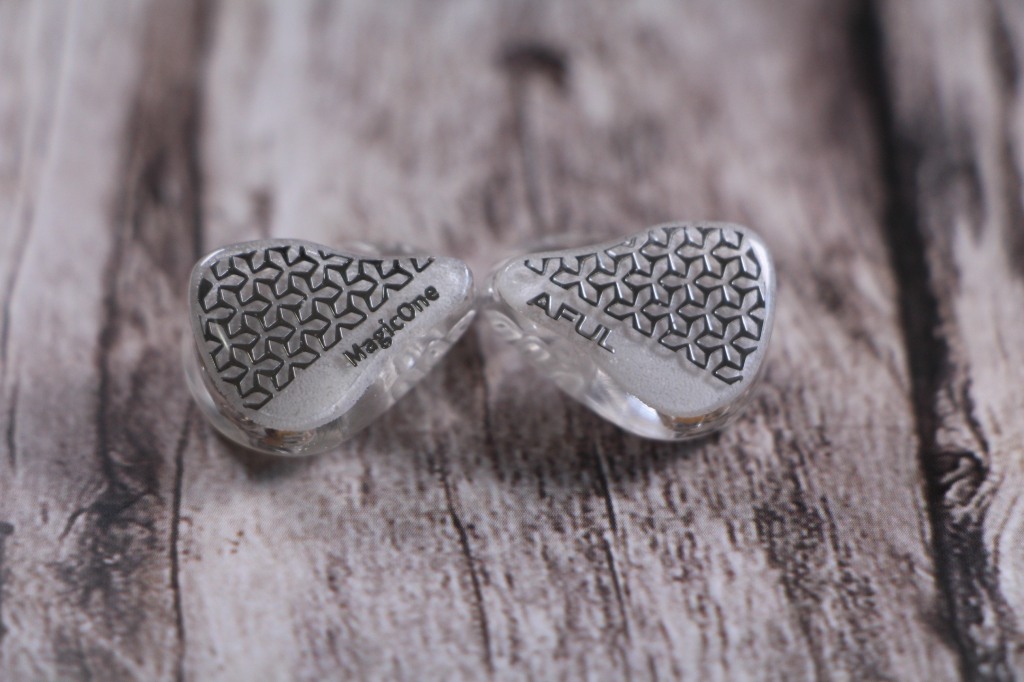
Hello, friends of AvaliaSom, I'm Marcelo Dosec, and this one I bring you is the Aful MagicOne , a unit that was sold to me by HiFiGo with a 20% discount in exchange for this review. Thank you very much, HiFiGo. As usual, I will only give my personal opinions about the phone, without any obligation to say good or bad.
This headphone costs 140 USD (or around 268 USD with 92% Brazilian taxes in current legislation), and if you are interested in adding it to your collection after reading the review, you can choose to buy directly through HiFiGo (no affiliate links). Thanks in advance.
Aful is a recent brand, which arrived kicking the market with the P5, an IEM that I had and really liked. Then they brought the P8, one that I tested and considered the best up to 400 USD for some time (until I discovered the Yanyin Canon II ). Therefore, considering the quality of previous models, and taking into account the “embedded technology” that Aful planned for the MagicOne, as soon as this guy was announced, I was already looking forward to get it.
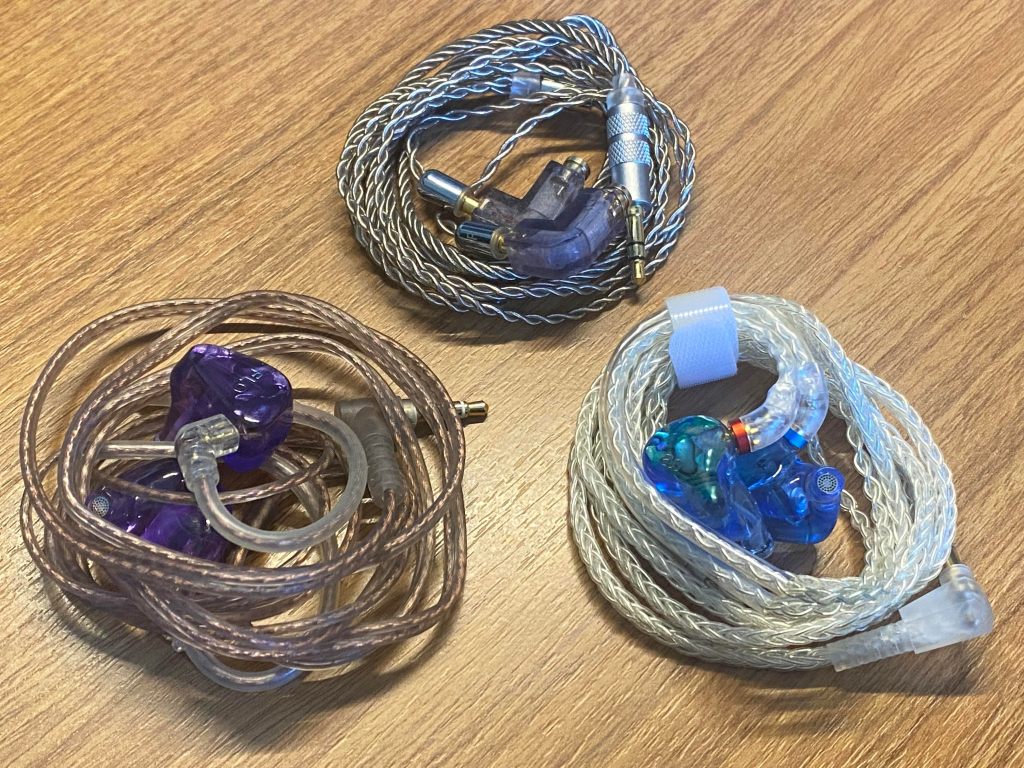
Anyone who knows me knows how much I appreciate single BA earphones. I find it very curious how a driver the size of a grain of rice manages to deliver good music to my ears. On my YouTube channel, I tested the Floaudio Lily , the Audiosense DT100 and the Cutbox Kina. Although these full range BAs can do a lot, there are no miracles, and a particularity among earphones with this configuration is a lack of breath at one end, whether in the bass range or the treble range.
And it was precisely based on this limitation that Aful worked its magic on the MagicOne, pardoning the word used by 10 out of 10 reviewers to talk about this earphone. But we will talk about these details later. First, let's mention the unboxing, whose black glove-shaped box features the beautiful rendering of the earphone on the front, as well as the details about its particularities. On the back, the usual technical details about the earphone.


The bottom box is rigid and only bears the brand name. Inside, we have a foam cradle for the earphones and the case, which is the same metal case common to other Aful units (and some SeeAudio too), very spacious and resistant. I can even attest to its resistance, as unfortunately I let my MagicOne fall and roll down some stairs, and the case didn't even open, although I was slightly injured in the process of keeping the earphone intact.
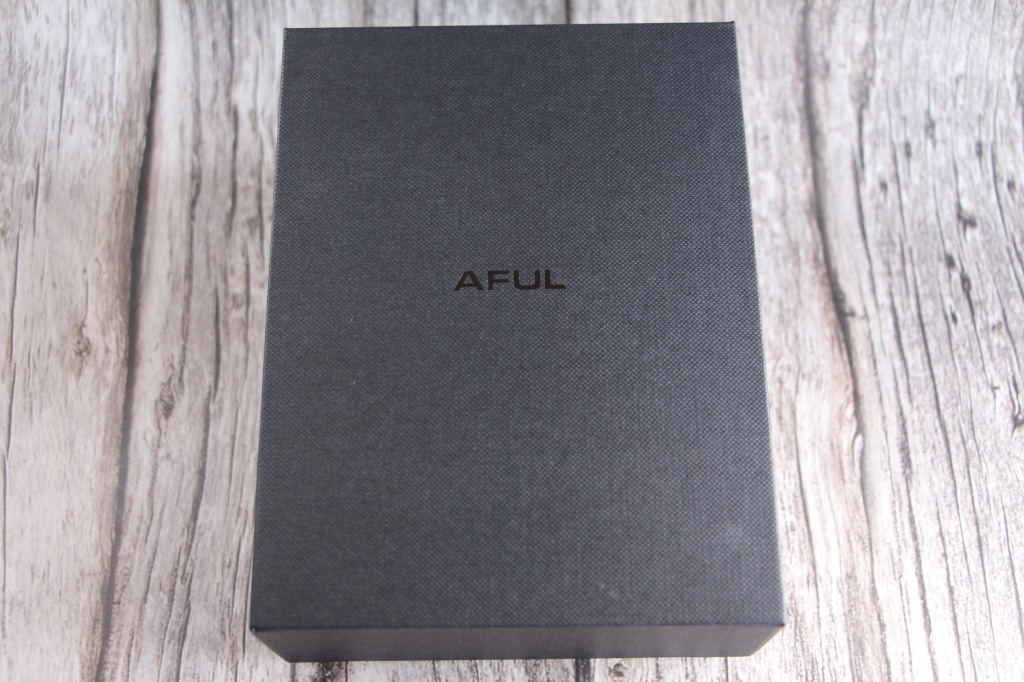
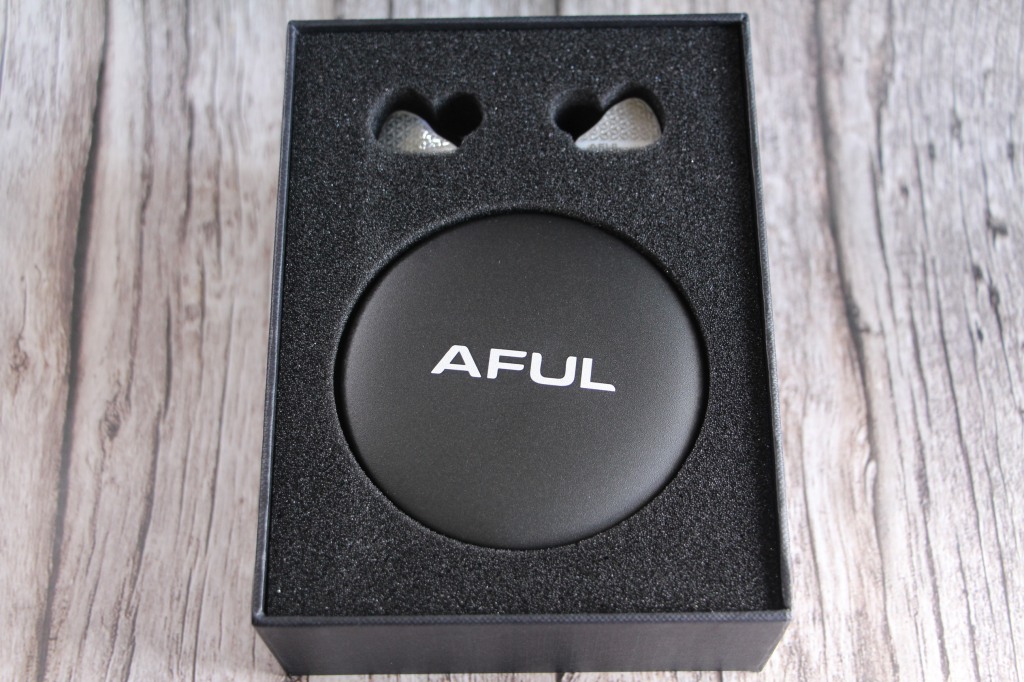


The unit comes with a beautiful silver-plated oxygen-free copper (OFC) cable, with connectors, chin slider and splitter made of metal. On my model, the connections are 0.78 mm 2-pin for the earphone and 3.5 mm for the source, however Aful offers the option of the same cable with a 4.4 mm connector at the time of purchase.

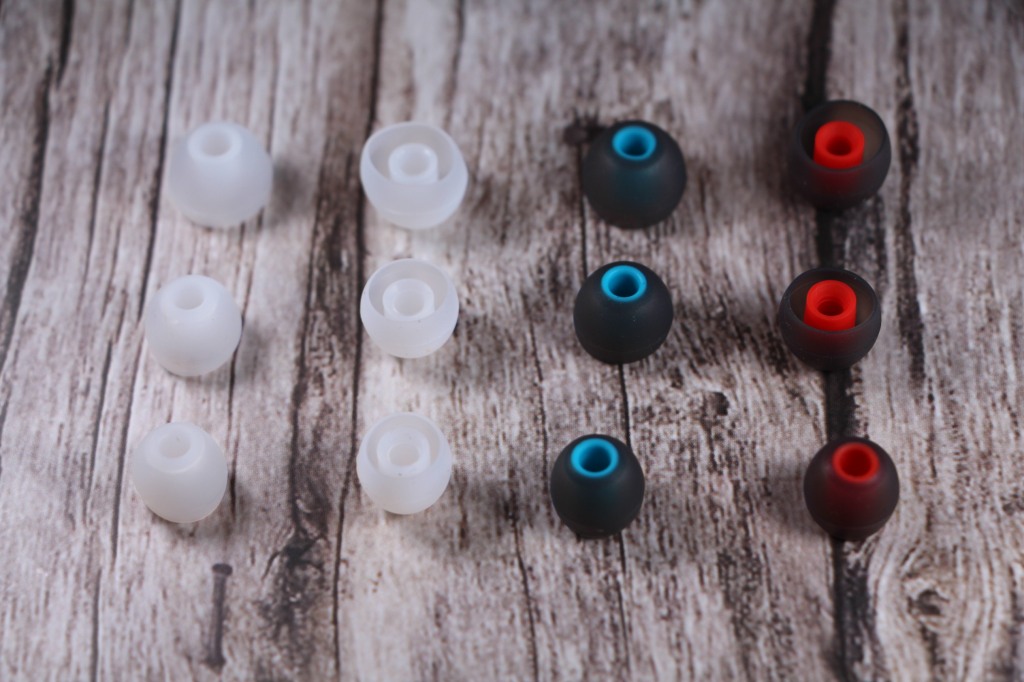
Furthermore, Aful offers two types of silicone tips: a kit of black tips with a blue or red mouthpiece and a kit of white tips. Basically they have the same nozzle diameter, and only differ in firmness, with the white ones being softer. I preferred the black tips with colored mouthpieces, which make it easier to see the earphones on the left or right side.

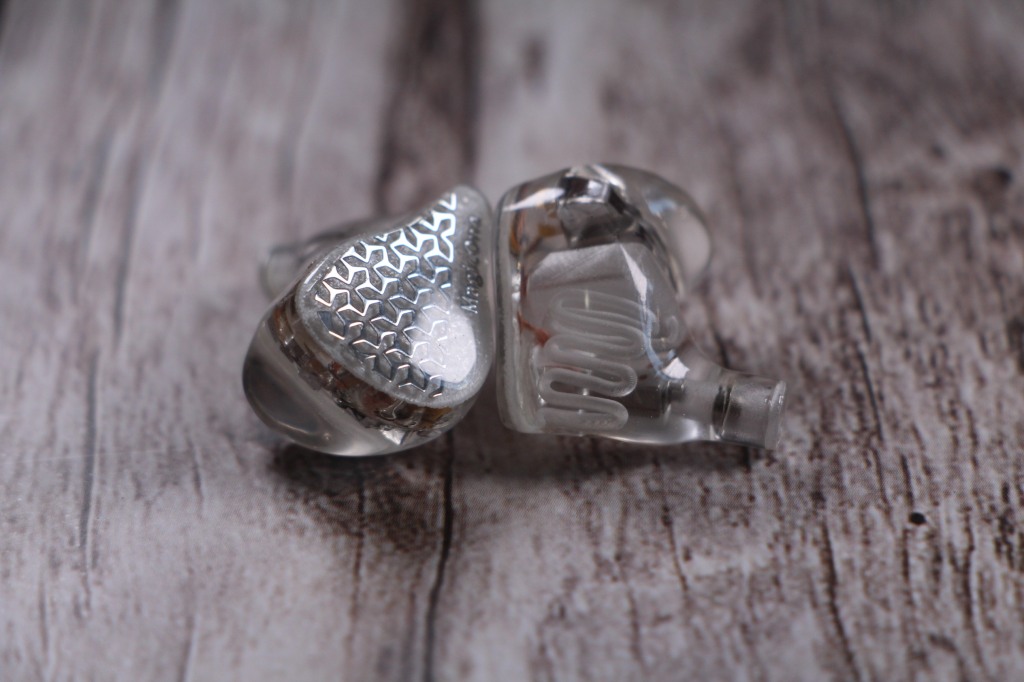
The IEM itself is gorgeous: entirely made of resin, with a faceplate that has a silver mosaic whose design looks like small flowers, with a white background, as well as the name of the unit on one side and the name of the brand on the other. The shell is completely transparent and allows you to see the unusual interior of the earphone, while its nozzle features a very restrictive metal filter. The two-pin connector is flush with the phone.
And speaking of the most intriguing, the sound of the earphone is generated by a single full range balanced armature (BA) (which covers all frequencies), developed by Aful, and we can see that it delivers its sound through an acoustic tube shaped horn (narrower near the driver), which ends in a damper before meeting the nozzle. But it doesn't end there.
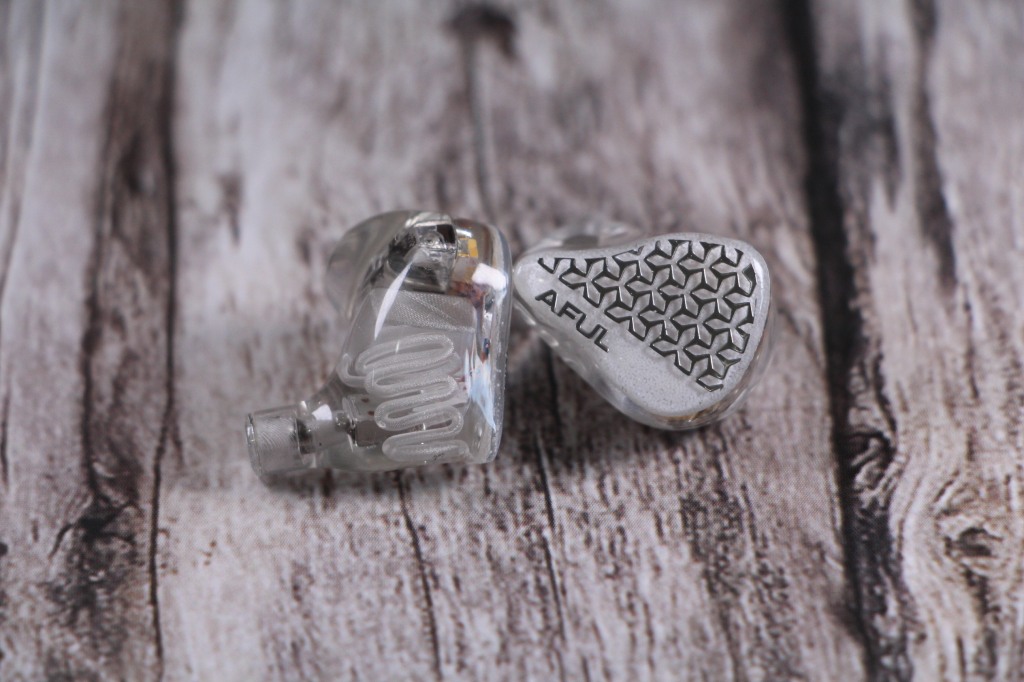
Looking at the IEM closely, just above the BA we see an empty space, with a square window that connects this space to a resonator box. At the bottom of this resonator box comes a 77 mm long tube, which makes eight U-bends before finding an open hole in the phone shell. This system was named by Aful as Nautilus Structure (due to the similarity with the look of the nautilus), and serves to improve the low frequency responses generated by the BA. Remembering that the Aful P8 also uses a very long tube (62.5 mm) for low frequencies.
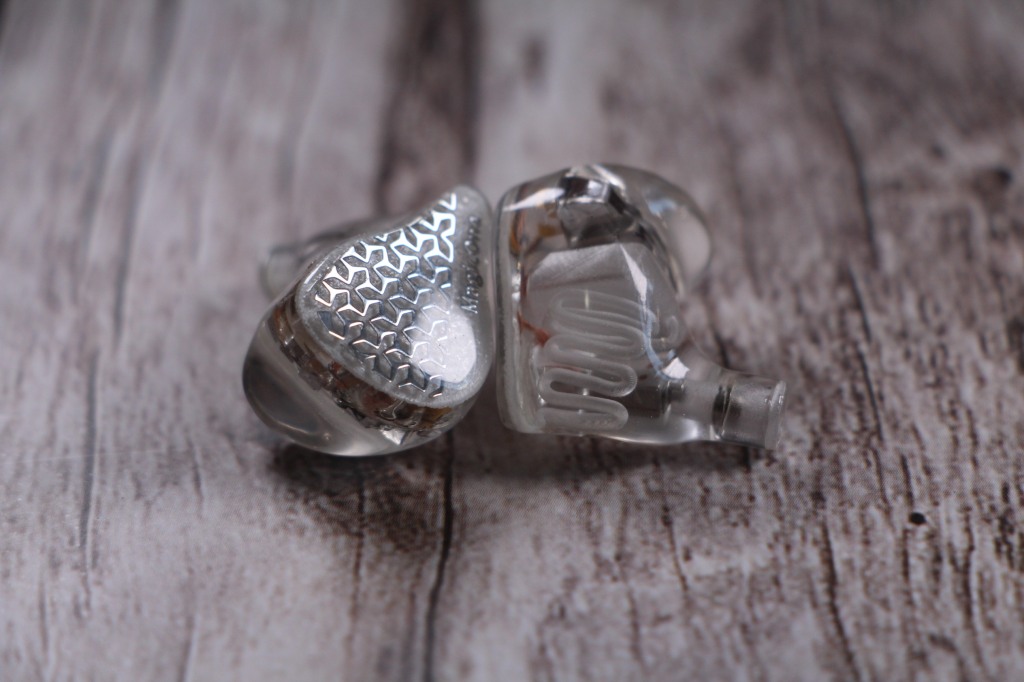
And in the part opposite to the BA location, we see the complex frequency division system (RLC) patented by Aful, also used in the P5 and P8. But unlike its bigger brothers, where the frequency divider helps to better distribute the sound between the multiple drivers, in the case of the MagicOne it works to improve the treble extension. This was possible due to the use of another technology patented by Aful, called “SE-Math”, which consists of the software analysis of the driver's responses in combination with the acoustic structure of the phone, thus allowing the ideal development of the RLC configuration.
Comfort
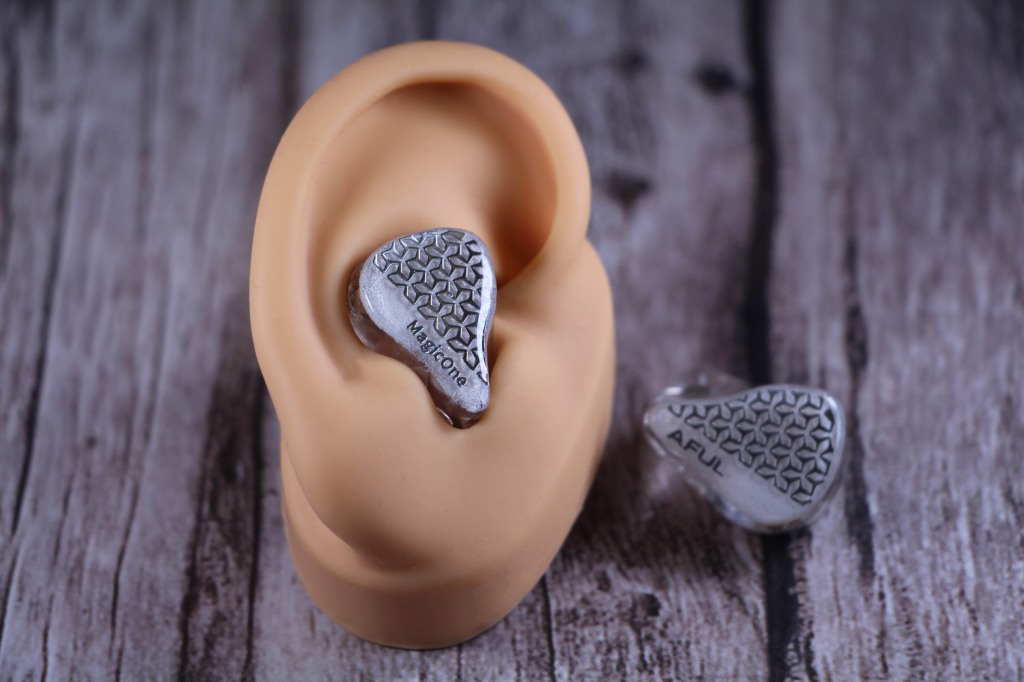
The comfort of an IEM is a personal matter, and for me at least the fit of the MagicOne is perfect. Its body is ergonomic and simulates the inner shape of the ear. The nozzle is narrow, 0.5 cm in diameter (0.1 cm less than a Simgot EM6L, for example), and allows a medium to deep fit, which allowed me to use the black tips in size S. And so Being a closed earphone, the seal is excellent and there is also considerable pressure generated in the ear canal.
Musical Sound
I tried the IEM on my sources, which are: iPhone SE (my “DAP”), Dell Laptop, Apple Dongle, Truthear Shio, iFi Uno, Cayin RU6 and Topping DX3 Pro+.
Additionally, I used the Tempotec Sonata BHD and Tempotec V3 sources that I am currently testing.
Note that I always listen to the earphones at low volume levels, around 55 to 65 dB according to the measurement made by the Apple AirPods Pro 2 in the “Health” App on the iPhone, so my impressions may differ from those who listen at higher volumes.
By the way, I invite you to check out my headphone test playlist on Spotify. This is a dynamic playlist, and the songs can change at any time, but they will always follow the purpose of presenting all the points I mention in my musical evaluation of the headphones.
Regarding sources, the Aful MagicOne did not prove to be an easy earphone to play. On a cell phone, the sound is very weak, lifeless, a bit clumsy. On the Sonata BHD or Truthear Shio, it improves a little, but the ideal is to make more power available for the MagicOne to show what it's capable of. Just for reference, I used volume 39 on the Cayin RU6 (low gain) to hear the MagicOne properly.
NOTE: The following notes serve as a comparison parameter only in the price range in which the phone falls.
This means that the more subterranean beats of “Ambitions Az a Ridah” may be insufficient, on the other hand, the bass line of “Como Tudo Deve Se” sounds tasty and very textured. Cellos and double basses are also well presented, and unless you're passionate about subs, the MagicOne will please you a lot.
In terms of speed, I don't even need to mention that the BA can handle the most insane kickdrums of a “Valhalla”, a characteristic inherent to this type of driver.
And I'll go further, the MagicOne proved to be my favorite earphone up to 200 USD for listening to female vocals, no matter if they are silkier voices like Andrea Grauzas or more powerful like Adele. And it goes well with male voices, especially in the warmth he brings to Charlez Aznavour 's voice in “La Bohème” .
There is also a beautiful presentation of instruments that use the midrange, with honorable mentions to the body of the lowest guitar notes. The piano in “Hello” is also enchanting, and it is worth mentioning that there is no trace of sibilance in this track.
Furthermore, the range of cymbals in “The Well” is excellent, and it impresses me how the MagicOne manages to deliver the highest notes of the violins with so much life. I am obliged to give a standing ovation to the Aful engineers who achieved this level of technical excellence with such a limited driver.
Listening to a forró (brazilian genre), like “Frevo Mulher”, it is very pleasant to notice how the triangle stands out among the other sounds. It's a really great set.
Its level of detail is also pleasing, even bringing out some microdetails, and its resolution is excellent, perhaps the most impressive feature of the MagicOne for me. I would venture to say that the perceived quality of the sound delivered by this IEM is comparable even to that of much more expensive headphones, perhaps even comparable to the Aful P5 and P8 .
The only point where the MagicOne leaves something to be desired is in the separation of instruments, as this is a physical limitation of a simple BA. On complex tracks, congestion is very noticeable, and can be annoying on tracks like “Headbangeeeeerrrrr!!!!!!” , for example.
Sound in Games
In battle royale games, such as PUBG, the MagicOne delivers the position of opponents across the spectrum very well, but lacks in terms of distance, as the sound emitters always seem to be closer than they really are. Rating 3.5/5.
In FPS games like CS2 ( without changing the sound settings), the MagicOne has a sublime performance. Its tuning favors the sound of opponents moving around the map very well, and I just don't place it as the best for CS2 under 200 USD due to its need for amplification. Rating 5/5.
In casual games, like Hogwarts Legacy, the feeling of an open world is somewhat compressed, and the immersion ends up being harmed in this detail. However, indoors the immersion is excellent, including the spectacular naturalness of the surrounding sounds. Rating 4/5.
And finally, in simulation games like Asetto Corsa, the bass is not enough to deliver the necessary strength to the sound of the engines, in compensation there is a beautiful sound of everything around. Immersion may suffer, but it's not bad. Rating 3/5.
Sound in Films, Series and Productivity
The MagicOne's sound definitely doesn't suit action films, on the other hand it is excellent for dialogue and musical parts, and watching “La La Land” again was excellent in the company of this Aful.
And for watching podcasts, the MagicOne is very good, but it can sound a bit congested if there are a lot of people talking at the same time. It is valid for work meetings where there are many voices in parallel. On the other hand, the MagicOne is a fantastic study companion, especially due to its excellent passive isolation.
Aful MagicOne (140 USD) vs Audiosense DT100 (109 USD) vs Floaudio Lily (40 USD) vs Cutbox Kina (300 BRL)
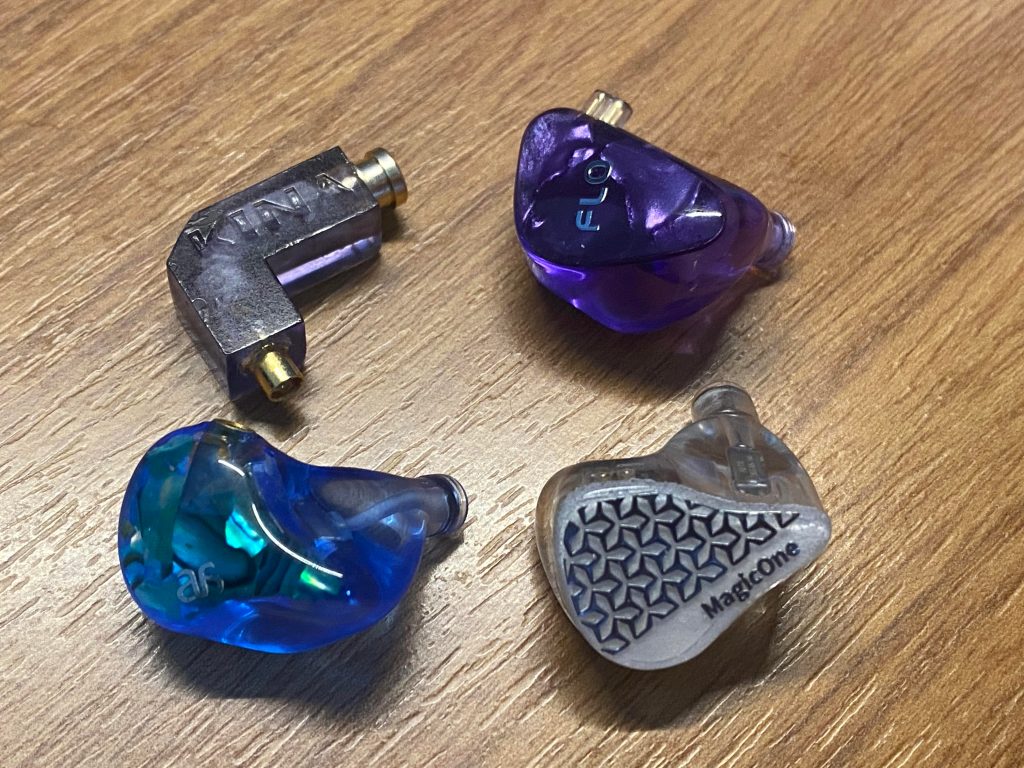
I decided to compare the MagicOne to other Single BAs that I have at home, and I must say that it's cowardly, firstly due to the price: the MagicOne is significantly more expensive than all of them. Next, due to the onboard technology, given that the other Single BAs I have here only have the full-range BA and nothing else. Still, let's talk about them:
The Floaudio Lily is the cheapest and simplest of them, including in terms of sound. Although it has a beautiful resin body, its fit is not perfect like the MagicOne, and the occlusion effect ends up being greater. In terms of sound, the Lily lacks bass and treble extension, but its biggest weakness is in the resolution, which seems to be light years away from what the MagicOne delivers.
The Audiosense DT100 has a very similar fit to the MagicOne, being similar even in the sealing and pressure caused in the ears. Something to highlight is that the DT100 uses a Knowles BA with side output, which I've never seen on other earphones. In terms of sound, the DT100 is far superior to the Lily, and even comes close to the MagicOne in terms of resolution and midrange quality, in addition to delivering good technicalities. However, it lacks a lot in the extension and quality of the treble, given that its tuning seems to have been done to try to deliver a good bass and midrange footprint, including a duct and opening in the shell to improve the BA's bass, but nothing compared to the Aful's Nautilus system.
Finally, the Cutbox Kina is a national project inspired by the Kbear F1, which features a BA Knowles full range in a peculiar body. And Fabrício (Cut Box BR channel) did a great job on this headphone, as it achieves a very interesting extension for a Single BA, both in the bass and treble. And in terms of resolution and technicalities, it is closer to the MagicOne than I could imagine, with a very holographic stage, very good image and a beautiful delivery of details. However, the MagicOne sounds much more refined, mainly due to its fantastic resolution. And as good as the Kina's treble extension is, the MagicOne can go much further.
Conclusion
Come on: there's magic in this phone. Ok, in fact the “magic” is just technology, the result of a lot of investment in R&D. Aful impresses with the refinement and innovations in each of its earphones, with the MagicOne being the most incredible of the projects, as good as the P5 and P8 are. The technological excellence of this unit makes me wonder: what will Aful bring in the future?
Being able to extract what Aful extracted from a Single BA is comparable to a car manufacturer being able to extract 300 hp from a 1.0 production engine. It may even raise doubts about durability, but what matters is doing 0-60 in 5 seconds. And drawing the parallel with what we have in MagicOne, this is a headphone capable of playing at the same level as (or above) some of the best hybrids, planar or single DD in this category.
It's not the best buy up to 200 USD. A Truthear Nova and a Simgot EM6L deliver something more, and in the case of the Simgot, it delivers more and costs less. In other words, if you just want an earphone to listen to good music, there are better options. However, this is a product for enthusiasts. It's a headset for those who have already tried various things in their hobby and are curious about an incredible project like this. So, if you are a collector, a geek or an audiophile at the forefront of technology, this IEM needs to be in your collection.
Big hug!
Presentation

Hello, friends of AvaliaSom, I'm Marcelo Dosec, and this one I bring you is the Aful MagicOne , a unit that was sold to me by HiFiGo with a 20% discount in exchange for this review. Thank you very much, HiFiGo. As usual, I will only give my personal opinions about the phone, without any obligation to say good or bad.
This headphone costs 140 USD (or around 268 USD with 92% Brazilian taxes in current legislation), and if you are interested in adding it to your collection after reading the review, you can choose to buy directly through HiFiGo (no affiliate links). Thanks in advance.
Aful is a recent brand, which arrived kicking the market with the P5, an IEM that I had and really liked. Then they brought the P8, one that I tested and considered the best up to 400 USD for some time (until I discovered the Yanyin Canon II ). Therefore, considering the quality of previous models, and taking into account the “embedded technology” that Aful planned for the MagicOne, as soon as this guy was announced, I was already looking forward to get it.

Anyone who knows me knows how much I appreciate single BA earphones. I find it very curious how a driver the size of a grain of rice manages to deliver good music to my ears. On my YouTube channel, I tested the Floaudio Lily , the Audiosense DT100 and the Cutbox Kina. Although these full range BAs can do a lot, there are no miracles, and a particularity among earphones with this configuration is a lack of breath at one end, whether in the bass range or the treble range.
And it was precisely based on this limitation that Aful worked its magic on the MagicOne, pardoning the word used by 10 out of 10 reviewers to talk about this earphone. But we will talk about these details later. First, let's mention the unboxing, whose black glove-shaped box features the beautiful rendering of the earphone on the front, as well as the details about its particularities. On the back, the usual technical details about the earphone.


The bottom box is rigid and only bears the brand name. Inside, we have a foam cradle for the earphones and the case, which is the same metal case common to other Aful units (and some SeeAudio too), very spacious and resistant. I can even attest to its resistance, as unfortunately I let my MagicOne fall and roll down some stairs, and the case didn't even open, although I was slightly injured in the process of keeping the earphone intact.




The unit comes with a beautiful silver-plated oxygen-free copper (OFC) cable, with connectors, chin slider and splitter made of metal. On my model, the connections are 0.78 mm 2-pin for the earphone and 3.5 mm for the source, however Aful offers the option of the same cable with a 4.4 mm connector at the time of purchase.


Furthermore, Aful offers two types of silicone tips: a kit of black tips with a blue or red mouthpiece and a kit of white tips. Basically they have the same nozzle diameter, and only differ in firmness, with the white ones being softer. I preferred the black tips with colored mouthpieces, which make it easier to see the earphones on the left or right side.


The IEM itself is gorgeous: entirely made of resin, with a faceplate that has a silver mosaic whose design looks like small flowers, with a white background, as well as the name of the unit on one side and the name of the brand on the other. The shell is completely transparent and allows you to see the unusual interior of the earphone, while its nozzle features a very restrictive metal filter. The two-pin connector is flush with the phone.
And speaking of the most intriguing, the sound of the earphone is generated by a single full range balanced armature (BA) (which covers all frequencies), developed by Aful, and we can see that it delivers its sound through an acoustic tube shaped horn (narrower near the driver), which ends in a damper before meeting the nozzle. But it doesn't end there.

Looking at the IEM closely, just above the BA we see an empty space, with a square window that connects this space to a resonator box. At the bottom of this resonator box comes a 77 mm long tube, which makes eight U-bends before finding an open hole in the phone shell. This system was named by Aful as Nautilus Structure (due to the similarity with the look of the nautilus), and serves to improve the low frequency responses generated by the BA. Remembering that the Aful P8 also uses a very long tube (62.5 mm) for low frequencies.

And in the part opposite to the BA location, we see the complex frequency division system (RLC) patented by Aful, also used in the P5 and P8. But unlike its bigger brothers, where the frequency divider helps to better distribute the sound between the multiple drivers, in the case of the MagicOne it works to improve the treble extension. This was possible due to the use of another technology patented by Aful, called “SE-Math”, which consists of the software analysis of the driver's responses in combination with the acoustic structure of the phone, thus allowing the ideal development of the RLC configuration.
Comfort

The comfort of an IEM is a personal matter, and for me at least the fit of the MagicOne is perfect. Its body is ergonomic and simulates the inner shape of the ear. The nozzle is narrow, 0.5 cm in diameter (0.1 cm less than a Simgot EM6L, for example), and allows a medium to deep fit, which allowed me to use the black tips in size S. And so Being a closed earphone, the seal is excellent and there is also considerable pressure generated in the ear canal.
Musical Sound
I tried the IEM on my sources, which are: iPhone SE (my “DAP”), Dell Laptop, Apple Dongle, Truthear Shio, iFi Uno, Cayin RU6 and Topping DX3 Pro+.
Additionally, I used the Tempotec Sonata BHD and Tempotec V3 sources that I am currently testing.
Note that I always listen to the earphones at low volume levels, around 55 to 65 dB according to the measurement made by the Apple AirPods Pro 2 in the “Health” App on the iPhone, so my impressions may differ from those who listen at higher volumes.
By the way, I invite you to check out my headphone test playlist on Spotify. This is a dynamic playlist, and the songs can change at any time, but they will always follow the purpose of presenting all the points I mention in my musical evaluation of the headphones.
Regarding sources, the Aful MagicOne did not prove to be an easy earphone to play. On a cell phone, the sound is very weak, lifeless, a bit clumsy. On the Sonata BHD or Truthear Shio, it improves a little, but the ideal is to make more power available for the MagicOne to show what it's capable of. Just for reference, I used volume 39 on the Cayin RU6 (low gain) to hear the MagicOne properly.
- Tone
NOTE: The following notes serve as a comparison parameter only in the price range in which the phone falls.
- Bass: Level 4/5, Extension 3/5, Speed 5/5, Texture 5/5, Depth 3.5/5
This means that the more subterranean beats of “Ambitions Az a Ridah” may be insufficient, on the other hand, the bass line of “Como Tudo Deve Se” sounds tasty and very textured. Cellos and double basses are also well presented, and unless you're passionate about subs, the MagicOne will please you a lot.
In terms of speed, I don't even need to mention that the BA can handle the most insane kickdrums of a “Valhalla”, a characteristic inherent to this type of driver.
- Midrange: Level 3.5/5, Presence 5/5, Clarity 5/5, Voices 5/5, Transparency 5/5
And I'll go further, the MagicOne proved to be my favorite earphone up to 200 USD for listening to female vocals, no matter if they are silkier voices like Andrea Grauzas or more powerful like Adele. And it goes well with male voices, especially in the warmth he brings to Charlez Aznavour 's voice in “La Bohème” .
There is also a beautiful presentation of instruments that use the midrange, with honorable mentions to the body of the lowest guitar notes. The piano in “Hello” is also enchanting, and it is worth mentioning that there is no trace of sibilance in this track.
- Treble: Level 4/5, Brightness 4/5, Airiness 4.5/5, Extension 5/5, Timbre 4/5
Furthermore, the range of cymbals in “The Well” is excellent, and it impresses me how the MagicOne manages to deliver the highest notes of the violins with so much life. I am obliged to give a standing ovation to the Aful engineers who achieved this level of technical excellence with such a limited driver.
Listening to a forró (brazilian genre), like “Frevo Mulher”, it is very pleasant to notice how the triangle stands out among the other sounds. It's a really great set.
- Technicalities: Sound Stage 3/5, Image 5/5, Layering 3.5/5, Separation 2.5/5, Details 4/5, Resolution 5/5
Its level of detail is also pleasing, even bringing out some microdetails, and its resolution is excellent, perhaps the most impressive feature of the MagicOne for me. I would venture to say that the perceived quality of the sound delivered by this IEM is comparable even to that of much more expensive headphones, perhaps even comparable to the Aful P5 and P8 .
The only point where the MagicOne leaves something to be desired is in the separation of instruments, as this is a physical limitation of a simple BA. On complex tracks, congestion is very noticeable, and can be annoying on tracks like “Headbangeeeeerrrrr!!!!!!” , for example.
Sound in Games
In battle royale games, such as PUBG, the MagicOne delivers the position of opponents across the spectrum very well, but lacks in terms of distance, as the sound emitters always seem to be closer than they really are. Rating 3.5/5.
In FPS games like CS2 ( without changing the sound settings), the MagicOne has a sublime performance. Its tuning favors the sound of opponents moving around the map very well, and I just don't place it as the best for CS2 under 200 USD due to its need for amplification. Rating 5/5.
In casual games, like Hogwarts Legacy, the feeling of an open world is somewhat compressed, and the immersion ends up being harmed in this detail. However, indoors the immersion is excellent, including the spectacular naturalness of the surrounding sounds. Rating 4/5.
And finally, in simulation games like Asetto Corsa, the bass is not enough to deliver the necessary strength to the sound of the engines, in compensation there is a beautiful sound of everything around. Immersion may suffer, but it's not bad. Rating 3/5.
Sound in Films, Series and Productivity
The MagicOne's sound definitely doesn't suit action films, on the other hand it is excellent for dialogue and musical parts, and watching “La La Land” again was excellent in the company of this Aful.
And for watching podcasts, the MagicOne is very good, but it can sound a bit congested if there are a lot of people talking at the same time. It is valid for work meetings where there are many voices in parallel. On the other hand, the MagicOne is a fantastic study companion, especially due to its excellent passive isolation.
Aful MagicOne (140 USD) vs Audiosense DT100 (109 USD) vs Floaudio Lily (40 USD) vs Cutbox Kina (300 BRL)

I decided to compare the MagicOne to other Single BAs that I have at home, and I must say that it's cowardly, firstly due to the price: the MagicOne is significantly more expensive than all of them. Next, due to the onboard technology, given that the other Single BAs I have here only have the full-range BA and nothing else. Still, let's talk about them:
The Floaudio Lily is the cheapest and simplest of them, including in terms of sound. Although it has a beautiful resin body, its fit is not perfect like the MagicOne, and the occlusion effect ends up being greater. In terms of sound, the Lily lacks bass and treble extension, but its biggest weakness is in the resolution, which seems to be light years away from what the MagicOne delivers.
The Audiosense DT100 has a very similar fit to the MagicOne, being similar even in the sealing and pressure caused in the ears. Something to highlight is that the DT100 uses a Knowles BA with side output, which I've never seen on other earphones. In terms of sound, the DT100 is far superior to the Lily, and even comes close to the MagicOne in terms of resolution and midrange quality, in addition to delivering good technicalities. However, it lacks a lot in the extension and quality of the treble, given that its tuning seems to have been done to try to deliver a good bass and midrange footprint, including a duct and opening in the shell to improve the BA's bass, but nothing compared to the Aful's Nautilus system.
Finally, the Cutbox Kina is a national project inspired by the Kbear F1, which features a BA Knowles full range in a peculiar body. And Fabrício (Cut Box BR channel) did a great job on this headphone, as it achieves a very interesting extension for a Single BA, both in the bass and treble. And in terms of resolution and technicalities, it is closer to the MagicOne than I could imagine, with a very holographic stage, very good image and a beautiful delivery of details. However, the MagicOne sounds much more refined, mainly due to its fantastic resolution. And as good as the Kina's treble extension is, the MagicOne can go much further.
Conclusion
Come on: there's magic in this phone. Ok, in fact the “magic” is just technology, the result of a lot of investment in R&D. Aful impresses with the refinement and innovations in each of its earphones, with the MagicOne being the most incredible of the projects, as good as the P5 and P8 are. The technological excellence of this unit makes me wonder: what will Aful bring in the future?
Being able to extract what Aful extracted from a Single BA is comparable to a car manufacturer being able to extract 300 hp from a 1.0 production engine. It may even raise doubts about durability, but what matters is doing 0-60 in 5 seconds. And drawing the parallel with what we have in MagicOne, this is a headphone capable of playing at the same level as (or above) some of the best hybrids, planar or single DD in this category.
It's not the best buy up to 200 USD. A Truthear Nova and a Simgot EM6L deliver something more, and in the case of the Simgot, it delivers more and costs less. In other words, if you just want an earphone to listen to good music, there are better options. However, this is a product for enthusiasts. It's a headset for those who have already tried various things in their hobby and are curious about an incredible project like this. So, if you are a collector, a geek or an audiophile at the forefront of technology, this IEM needs to be in your collection.
Big hug!
Ceeluh7
Hey, nice review! Not just because I agree whole heartedly with you either. Lol. Really nice job. I quite literally had the MagicOne in my ears as I read your review..ha. Anyways, it is a fantastic set. Give it some power and listen to the Magic.
dosec
Thank you very much! 

dosec
New Head-Fier
Pros: - Nice unboxing
- Good bass, with amazing depth and nice texture
- Mids are state-of-the-art for my ears
- Treble extension is a treblehead delight
- Great technicalities
- Good bass, with amazing depth and nice texture
- Mids are state-of-the-art for my ears
- Treble extension is a treblehead delight
- Great technicalities
Cons: - None at this price
This was originally posted at avaliasom.com
Presentation
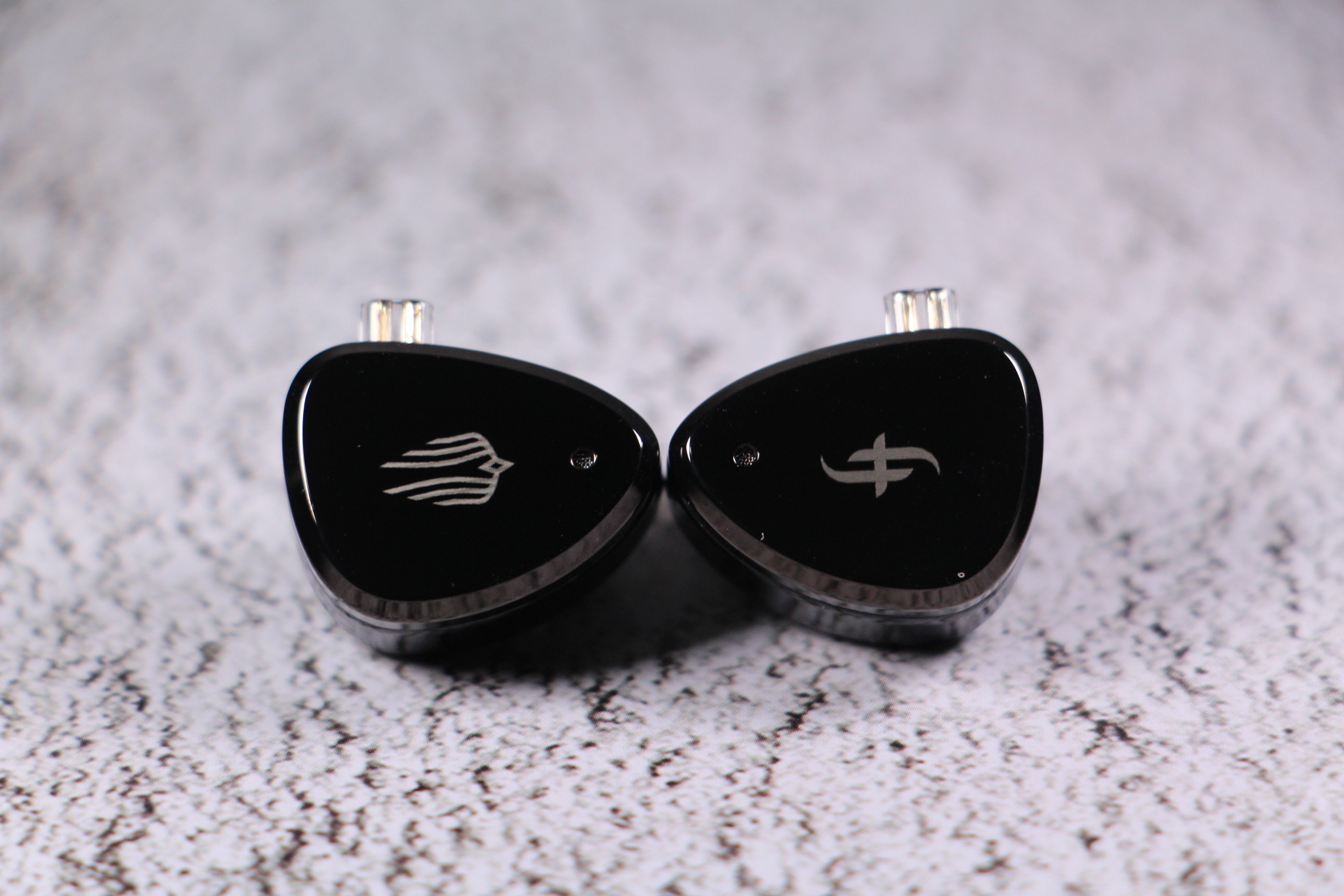
Hello, friends of AvaliaSom, I'm Marcelo Dosec, and this one I bring you is the Simgot EM6L Phoenix, a unit that I was kindly sent by Simgot. Xiè xiè, Simgot. As usual, I will only give my personal opinions about the IEM, without any obligation to say good or bad.
It's not new to anyone that Simgot is one of the brands that stood out the most in 2023. Considering the quality of the brand's IEMs that I've heard (EW100P, EW200, EA500 and now EM6L), at least for me it was the great sensation of this year, which by the way was a year of delight for audiophiles, given the almost weekly launches of new products .

“Salute to Art and Science”, is the phrase that Simgot uses in practically all of its IEMs, and in fact it is well suited to high definition pieces. After all, they bring art to their formats and the sound generated, as well as bringing a beautiful dose of science by transforming electrical impulses and air displacement into music for our ears.
According to Simgot, the EM6L is the successor to the EM5, an IEM launched in 2019 that also featured a hybrid 1 dynamic driver (DD) and 4 balanced armatures (BA), but which was nowhere near as publicized and accepted as the brand's most recent models.
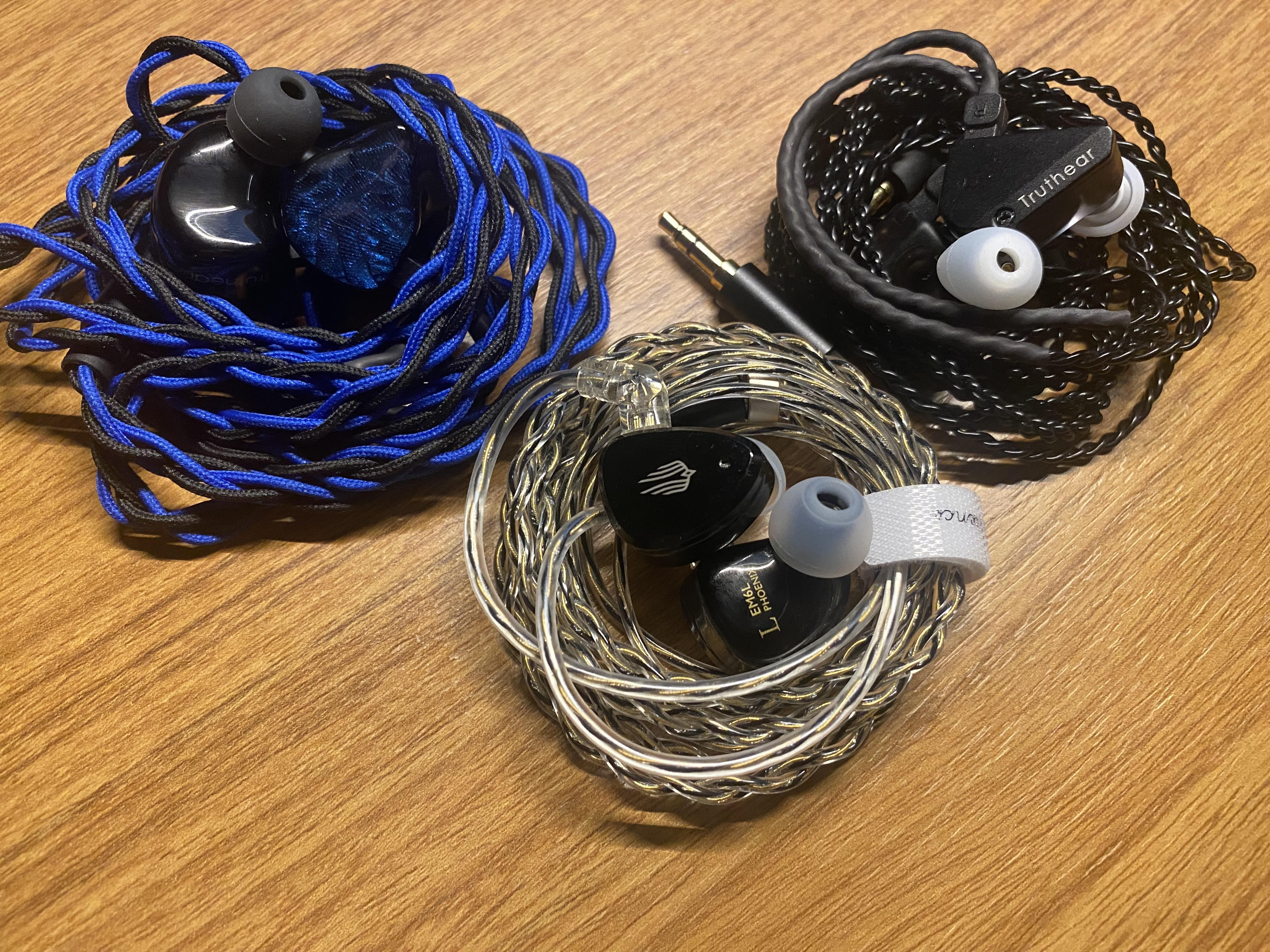
The resale value of the EM6L makes it upset both headphones under 100 USD, such as the Truthear Hexa (80 USD) like earphones above this level, like the Truthear Nova (149 USD) or the Celest PhoenixCall (129 USD), some of my favorite earphones not only in this region, but also from the entire range of IEMs I've heard to date. How does the EM6L handle this pressure? Let's see.



In terms of unboxing, it is very reminiscent of the EA500, including the same size and box shape. It's a shiny black box, rigid, very well built. On the front there is a phoenix and the name of the phone, on one side there is an x-ray view of the EM6L's interior and, on the back, the graphic demonstrating adherence to the 2019 Harman curve and an explosion of the components of the IEM, as well as technical details about it.


The box opens on the side, and reveals another rigid box, with a stylized phoenix on the lid that covers the headphones in their foam cradle and a smaller box that says “Accessories ”. And by removing the headphone cradle, we have access to a smaller box marked “Eartips”, which holds a simple but competent kit of three pairs of silicone tips in small (S), medium (M) and large (L) sizes.


And back to the accessories box, inside we find a brief instruction manual, as well as the synthetic leather case, also identical to that of the EA500, with plenty of space inside and good rigidity, but at least the brand logo was missing somewhere in it.

Inside the case is the cable, a beautiful piece combining gold and black, completely covered in transparent plastic. Its material is silver-plated oxygen-free copper (OFC). It has a connector for the source, splitter and chin slider in metal. Its connections are 3.5 mm for the source and QDC 0.78 mm for the phone.

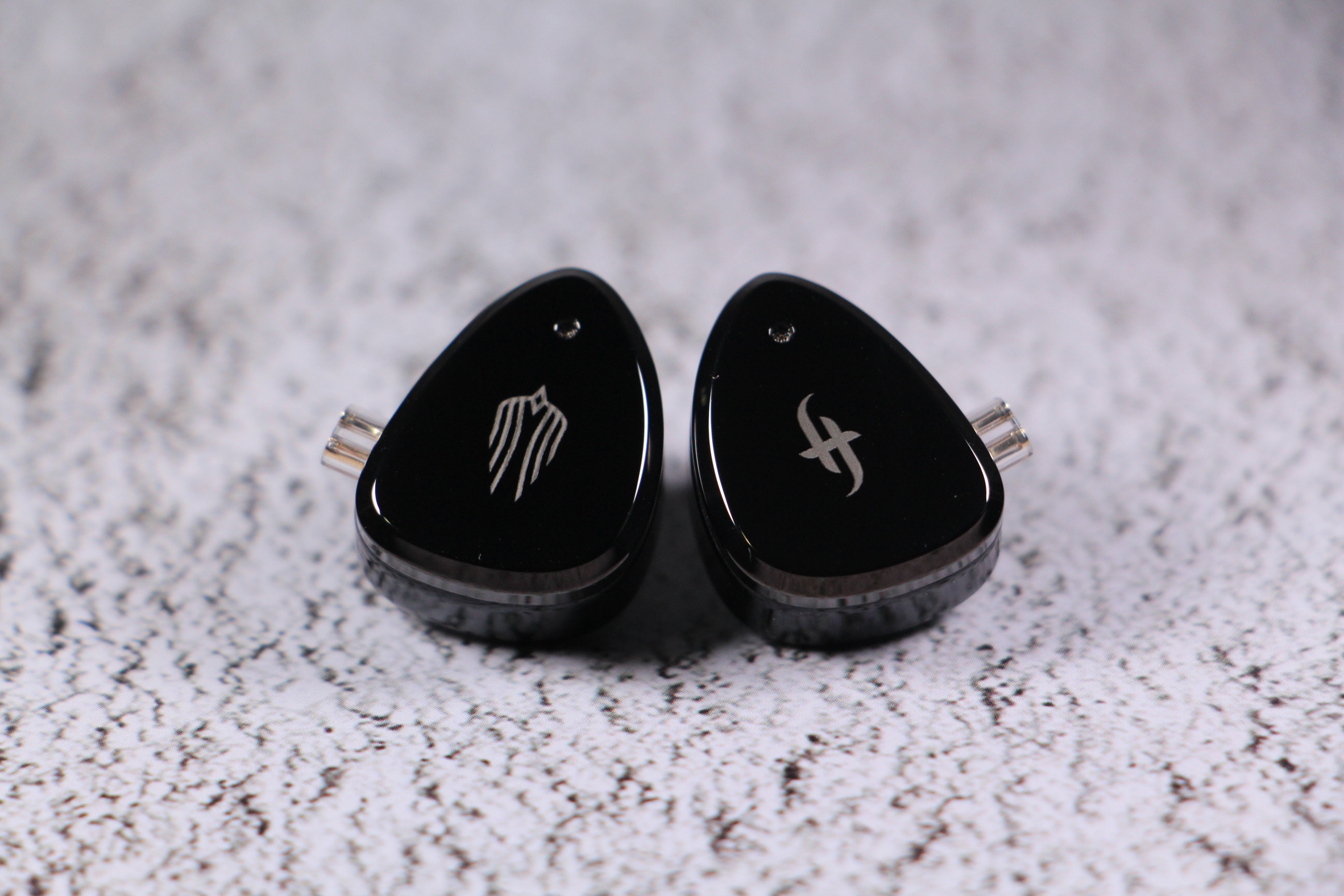
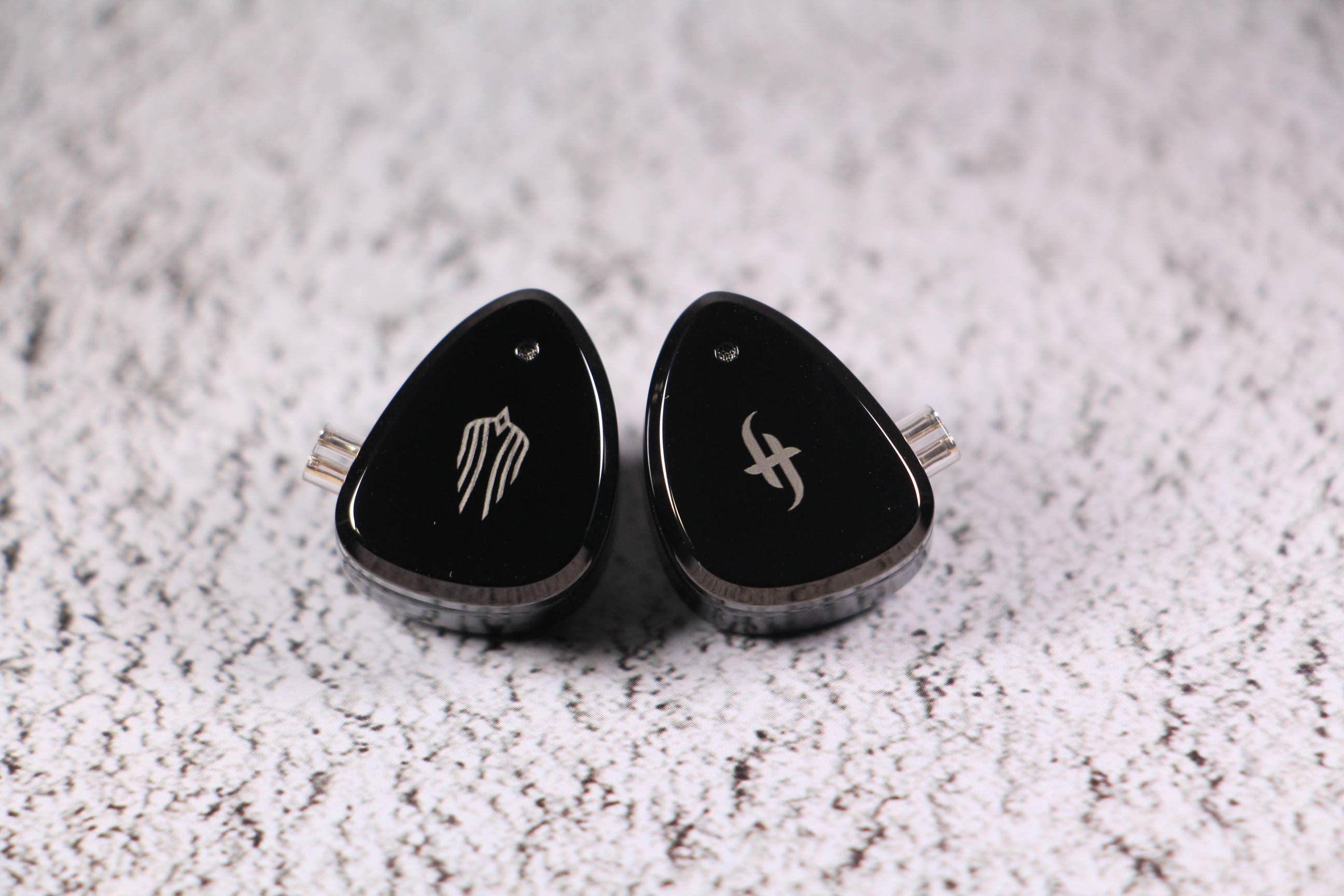


Moving on to the IEM, here we have a piece entirely in mirrored black, with a 3D printed resin body, which bears the name of the earphone and the indication of left (L) or right (R) side. Its faceplate is made of metal (processed by CNC), with the Simgot logo on one side and the stylized phoenix that we saw on the box on the other, as well as a small ventilation outlet. Its nozzle is made of metal, with a metal filter, which is very restrictive. The phone has a 0.78 mm jack jack. Overall, the construction is excellent.
The EM6L's sound comes from a hybrid set consisting of one 8 mm dynamic driver (DD) with a diaphragm made of material defined by Simgot as “high-polymer”, which takes care of the bass and mid-bass, and two pairs of balanced armatures (BA), whose manufacturer is not informed, which in turn take care of the mid and high frequencies. Everything is orchestrated by a 3-way crossover.
Comfort

The EM6L has an ergonomic body and no sharp corners, meaning it fits over the ears very comfortably. Its nozzle has a discreet diameter (0.6 mm) and allowed me to use M tips for the best compromise between sealing and comfort. The insertion is average, the seal is very good and there is no pressure generated in the ear canal. Finally, the cable hook does not bother you and is barely noticeable, even when wearing glasses.
Musical Sound
I tried the IEM on different sources, which are: iPhone SE (my “DAP”), Dell Laptop, Apple Dongle, Truthear Shio, iFi Uno, Cayin RU6 and Topping DX3 Pro+.
Note that I always listen to the earphones at low volume levels, around 55 to 65 dB according to the measurement made by the Apple AirPods Pro 2 in the “Health” App on the iPhone, so my impressions may differ from those who listen at higher volumes.
By the way, I invite you to check out my headphone test playlist on Spotify. This is a dynamic playlist, and the songs can change at any time, but they will always follow the purpose of presenting all the points I mention in my musical evaluation of the headphones.
Regarding sources, the Simgot EM6L plays easily on any source, and scales according to the particularities of each one. Just for reference, I used volume 31 on the Cayin RU6 (low gain) to hear the EM6L properly.
NOTE: The following notes serve as a comparison parameter only in the price range in which the phone falls.
Such viscerality comes in the voice of Geoff Castelluci, which the EM6L delivers in a decisive way, with a beautiful sense of depth of the tones in the spectrum. And another highlight is the bass line of a “Paranoid”, always very present and intense, with an excellent texture.
In terms of speed, the EM6L DD does not waver in the face of a “Intra Venus”, proving almost ideal for this type of music, without any perception of notes being run over.
I say the same about Steven Tyler's voice in “This I Love”, including in the most intense vocal moments of the track (1:06 for example). The intensity and clarity that this headphone delivers in voices is remarkable, just like in instruments that use the midrange. Taking the same track as an example, the piano sounds beautiful, very organic, while the guitar comes tearing up at 2:10, and the weight of the notes in the solo is something to be applauded.
Perhaps male voices like Rodrigo Costa Félix may sound thin to some, but to me they sound perfect, and listening to Portuguese Fado with the EM6L it is a truly remarkable experience. From Portuguese guitars, to mandolins, to strumming an acoustic guitar, all of this sounds exceptional on this headphone, with a lot of presence and exemplary transparency.
This means that listening to “September in Montreal” with the EM6L is the guarantee of having a cymbal extension that suits every treblehead. By the way, I really appreciate the treble tone here, but I understand that some more sensitive people may consider the treble to have a “BA tone” or sound too harsh. For me, it's ideal.
Listening to the violin entering “Nothing Else Matters” played by Golden Salt, it is inevitable not to go delirious with the escalation of notes, and during the chorus, the only thing to do is close your eyes and enjoy the contrast between the violin and the guitar. What a show!
And the EM6L's soundstage is deliciously holographic, more lateral than deep, but with a good sense of height. The image formed in a “Las Perlas de Tu Boca” is fascinating, with great perception of the location of each instrument in this imaginary spectrum. Only when it comes to layering, the EM6L doesn't get full marks, but it still provides a beautiful layered presentation.
Another area where the EM6L falls short of nirvana is in the level of detail, which even delivers some microdetails, but doesn't go much further than that. On the other hand, the instrument separation is worthy of awe, while the resolution is excellent, and owes nothing to any other headphone I've heard under 200 USD.
Sound in Games
In battle royale games, such as Warzone 2.0, the EM6L is extremely accurate in pinpointing the location of opponents on any axis of the spectrum. It even gives a good perception of the position of UAVs, including their distance. Rate 5/5.
In FPS games like CS2 (without changing the sound settings), the EM6L's tuning is excellent for delivering enemy movement across the map, even in more intense exchange situations. Rate 5/5.
In casual games, like Genshin Impact, it delivers excellent immersion, with the feeling of a living, three-dimensional world. However, some sounds (such as a very close waterfall) may exceed the limit in rare situations. Rate 4/5.
And finally, in simulation games, like F1 2023, the sound of the engines lacks a little more power, however the EM6L gave me an interesting immersive experience, both due to the good perception of the sound of other cars , as well as the notion that the engine sound is coming from behind the head. Rate 4/5.
Sound in Films, Series and Productivity
The sound of the EM6L for films and series is good, with a good reverberation from the subs in the intense scenes of a 1917, for example, but it goes better with films that feature a good amount of dialogue, like Donnie Darko.
The EM6L goes well with those looking for a good headphone for studying or listening to podcasts, as its voice sound is excellent, even when the recording is not the best. And it still proves to be a good headset for work, pairing well with a Kinera Gramr microphone for example.
Conclusion
If you take a look at My Recommendation List, the Truthear Hexa is my favorite under 100 USD, and the Nova is my favorite up to 200 USD. I thought about creating a category to fit the Simgot EM6L, maybe a “up to 125 USD” category, for example. But it would just be a way of masking the reality: at least for me, the EM6L is as good as the Truthear Nova, but costs much less.
And with that, the Simgot EM6L is the best buy under 200 USD for me. But does the fact that it's best for me mean that it's best for you? Well, if you're looking for an analytical earphone, with a passionate feel on the subs and a treble extension that deserves a medal, don't look away, the EM6L is your number.
I remember that when I tested the EA500, I put it on the same level as Hexa, but with coexistence I ended up leaving Simgot aside, while Hexa remained as my reset earphone. Well, retirement has arrived, because now this role will be fullfilled by the Simgot EM6L Phoenix.
Big hug!
Presentation

Hello, friends of AvaliaSom, I'm Marcelo Dosec, and this one I bring you is the Simgot EM6L Phoenix, a unit that I was kindly sent by Simgot. Xiè xiè, Simgot. As usual, I will only give my personal opinions about the IEM, without any obligation to say good or bad.
It's not new to anyone that Simgot is one of the brands that stood out the most in 2023. Considering the quality of the brand's IEMs that I've heard (EW100P, EW200, EA500 and now EM6L), at least for me it was the great sensation of this year, which by the way was a year of delight for audiophiles, given the almost weekly launches of new products .

“Salute to Art and Science”, is the phrase that Simgot uses in practically all of its IEMs, and in fact it is well suited to high definition pieces. After all, they bring art to their formats and the sound generated, as well as bringing a beautiful dose of science by transforming electrical impulses and air displacement into music for our ears.
According to Simgot, the EM6L is the successor to the EM5, an IEM launched in 2019 that also featured a hybrid 1 dynamic driver (DD) and 4 balanced armatures (BA), but which was nowhere near as publicized and accepted as the brand's most recent models.

The resale value of the EM6L makes it upset both headphones under 100 USD, such as the Truthear Hexa (80 USD) like earphones above this level, like the Truthear Nova (149 USD) or the Celest PhoenixCall (129 USD), some of my favorite earphones not only in this region, but also from the entire range of IEMs I've heard to date. How does the EM6L handle this pressure? Let's see.



In terms of unboxing, it is very reminiscent of the EA500, including the same size and box shape. It's a shiny black box, rigid, very well built. On the front there is a phoenix and the name of the phone, on one side there is an x-ray view of the EM6L's interior and, on the back, the graphic demonstrating adherence to the 2019 Harman curve and an explosion of the components of the IEM, as well as technical details about it.


The box opens on the side, and reveals another rigid box, with a stylized phoenix on the lid that covers the headphones in their foam cradle and a smaller box that says “Accessories ”. And by removing the headphone cradle, we have access to a smaller box marked “Eartips”, which holds a simple but competent kit of three pairs of silicone tips in small (S), medium (M) and large (L) sizes.


And back to the accessories box, inside we find a brief instruction manual, as well as the synthetic leather case, also identical to that of the EA500, with plenty of space inside and good rigidity, but at least the brand logo was missing somewhere in it.

Inside the case is the cable, a beautiful piece combining gold and black, completely covered in transparent plastic. Its material is silver-plated oxygen-free copper (OFC). It has a connector for the source, splitter and chin slider in metal. Its connections are 3.5 mm for the source and QDC 0.78 mm for the phone.





Moving on to the IEM, here we have a piece entirely in mirrored black, with a 3D printed resin body, which bears the name of the earphone and the indication of left (L) or right (R) side. Its faceplate is made of metal (processed by CNC), with the Simgot logo on one side and the stylized phoenix that we saw on the box on the other, as well as a small ventilation outlet. Its nozzle is made of metal, with a metal filter, which is very restrictive. The phone has a 0.78 mm jack jack. Overall, the construction is excellent.
The EM6L's sound comes from a hybrid set consisting of one 8 mm dynamic driver (DD) with a diaphragm made of material defined by Simgot as “high-polymer”, which takes care of the bass and mid-bass, and two pairs of balanced armatures (BA), whose manufacturer is not informed, which in turn take care of the mid and high frequencies. Everything is orchestrated by a 3-way crossover.
Comfort

The EM6L has an ergonomic body and no sharp corners, meaning it fits over the ears very comfortably. Its nozzle has a discreet diameter (0.6 mm) and allowed me to use M tips for the best compromise between sealing and comfort. The insertion is average, the seal is very good and there is no pressure generated in the ear canal. Finally, the cable hook does not bother you and is barely noticeable, even when wearing glasses.
Musical Sound
I tried the IEM on different sources, which are: iPhone SE (my “DAP”), Dell Laptop, Apple Dongle, Truthear Shio, iFi Uno, Cayin RU6 and Topping DX3 Pro+.
Note that I always listen to the earphones at low volume levels, around 55 to 65 dB according to the measurement made by the Apple AirPods Pro 2 in the “Health” App on the iPhone, so my impressions may differ from those who listen at higher volumes.
By the way, I invite you to check out my headphone test playlist on Spotify. This is a dynamic playlist, and the songs can change at any time, but they will always follow the purpose of presenting all the points I mention in my musical evaluation of the headphones.
Regarding sources, the Simgot EM6L plays easily on any source, and scales according to the particularities of each one. Just for reference, I used volume 31 on the Cayin RU6 (low gain) to hear the EM6L properly.
- Tone
NOTE: The following notes serve as a comparison parameter only in the price range in which the phone falls.
- Bass: Level 3.5/5, Length 5/5, Depth 5/5, Speed 4.5/5, Texture 5/5
Such viscerality comes in the voice of Geoff Castelluci, which the EM6L delivers in a decisive way, with a beautiful sense of depth of the tones in the spectrum. And another highlight is the bass line of a “Paranoid”, always very present and intense, with an excellent texture.
In terms of speed, the EM6L DD does not waver in the face of a “Intra Venus”, proving almost ideal for this type of music, without any perception of notes being run over.
- Midrange: Level 3/5, Presence 5/5, Clarity 5/5, Voices 5/5, Transparency 5/5
I say the same about Steven Tyler's voice in “This I Love”, including in the most intense vocal moments of the track (1:06 for example). The intensity and clarity that this headphone delivers in voices is remarkable, just like in instruments that use the midrange. Taking the same track as an example, the piano sounds beautiful, very organic, while the guitar comes tearing up at 2:10, and the weight of the notes in the solo is something to be applauded.
Perhaps male voices like Rodrigo Costa Félix may sound thin to some, but to me they sound perfect, and listening to Portuguese Fado with the EM6L it is a truly remarkable experience. From Portuguese guitars, to mandolins, to strumming an acoustic guitar, all of this sounds exceptional on this headphone, with a lot of presence and exemplary transparency.
- Treble: Level 5/5, Brightness 5/5, Airiness 5/5, Extension 5/5, Timbre 5/5
This means that listening to “September in Montreal” with the EM6L is the guarantee of having a cymbal extension that suits every treblehead. By the way, I really appreciate the treble tone here, but I understand that some more sensitive people may consider the treble to have a “BA tone” or sound too harsh. For me, it's ideal.
Listening to the violin entering “Nothing Else Matters” played by Golden Salt, it is inevitable not to go delirious with the escalation of notes, and during the chorus, the only thing to do is close your eyes and enjoy the contrast between the violin and the guitar. What a show!
- Technicalities: Sound Stage 5/5, Image 5/5, Layering 4/5, Separation 5/5, Details 4/5, Resolution 5/5
And the EM6L's soundstage is deliciously holographic, more lateral than deep, but with a good sense of height. The image formed in a “Las Perlas de Tu Boca” is fascinating, with great perception of the location of each instrument in this imaginary spectrum. Only when it comes to layering, the EM6L doesn't get full marks, but it still provides a beautiful layered presentation.
Another area where the EM6L falls short of nirvana is in the level of detail, which even delivers some microdetails, but doesn't go much further than that. On the other hand, the instrument separation is worthy of awe, while the resolution is excellent, and owes nothing to any other headphone I've heard under 200 USD.
Sound in Games
In battle royale games, such as Warzone 2.0, the EM6L is extremely accurate in pinpointing the location of opponents on any axis of the spectrum. It even gives a good perception of the position of UAVs, including their distance. Rate 5/5.
In FPS games like CS2 (without changing the sound settings), the EM6L's tuning is excellent for delivering enemy movement across the map, even in more intense exchange situations. Rate 5/5.
In casual games, like Genshin Impact, it delivers excellent immersion, with the feeling of a living, three-dimensional world. However, some sounds (such as a very close waterfall) may exceed the limit in rare situations. Rate 4/5.
And finally, in simulation games, like F1 2023, the sound of the engines lacks a little more power, however the EM6L gave me an interesting immersive experience, both due to the good perception of the sound of other cars , as well as the notion that the engine sound is coming from behind the head. Rate 4/5.
Sound in Films, Series and Productivity
The sound of the EM6L for films and series is good, with a good reverberation from the subs in the intense scenes of a 1917, for example, but it goes better with films that feature a good amount of dialogue, like Donnie Darko.
The EM6L goes well with those looking for a good headphone for studying or listening to podcasts, as its voice sound is excellent, even when the recording is not the best. And it still proves to be a good headset for work, pairing well with a Kinera Gramr microphone for example.
Conclusion
If you take a look at My Recommendation List, the Truthear Hexa is my favorite under 100 USD, and the Nova is my favorite up to 200 USD. I thought about creating a category to fit the Simgot EM6L, maybe a “up to 125 USD” category, for example. But it would just be a way of masking the reality: at least for me, the EM6L is as good as the Truthear Nova, but costs much less.
And with that, the Simgot EM6L is the best buy under 200 USD for me. But does the fact that it's best for me mean that it's best for you? Well, if you're looking for an analytical earphone, with a passionate feel on the subs and a treble extension that deserves a medal, don't look away, the EM6L is your number.
I remember that when I tested the EA500, I put it on the same level as Hexa, but with coexistence I ended up leaving Simgot aside, while Hexa remained as my reset earphone. Well, retirement has arrived, because now this role will be fullfilled by the Simgot EM6L Phoenix.
Big hug!
dosec
Sorry, I confused Axl Rose with Steven Tyler. There was an Aerosmith song planned for this review and I changed for Guns' "This I Love" and forgot to change the vocalist's name.
dosec
New Head-Fier
Pros: - This bass is amazing!
- The mids are outstanding!
- It's darkish but the treble is great!
- Correct in every technical aspect.
- Great unboxing experience, nice bag, nice cable, nice tips.
- The mids are outstanding!
- It's darkish but the treble is great!
- Correct in every technical aspect.
- Great unboxing experience, nice bag, nice cable, nice tips.
Cons: - Bass with the switches on could be more than necessary.
Yanyin Canon II (originally posted at avaliasom.com)
Presentation

Hello, friends of AvaliaSom. I'm Marcelo Dosec, and the one I bring you is the Yanyin Canon II, a unit that was kindly sent by Yanyin herself for review here, on Fabrício's channel and on Antenor's channel . We have no obligation to speak highly of the earphone, just provide our independent opinions about it. Xiè xiè, Yanyin.
This IEM costs 379 USD (or around 730 USD applying the 92% Brazilian taxes in current legislation).
The Canon II is the successor to the Yanyin Canon, an earphone that I tested on video and was impressed with its competence and versatility, as it had three tuning keys and each one took care of a frequency range. It was like having a little three-band equalizer in each ear, a feature that endeared the Canon to Greeks and Trojans alike.
Unlike its predecessor, the Canon II only has two switches, and they only take care of the bass. The two switches activated bring a considerable boost in the subs and medium-bass, while by activating switch 1 or 2 only, there is only a discreet increase and, in practice, I already find the bass sufficient with the switches deactivated, especially as it brings more weight on the subs.


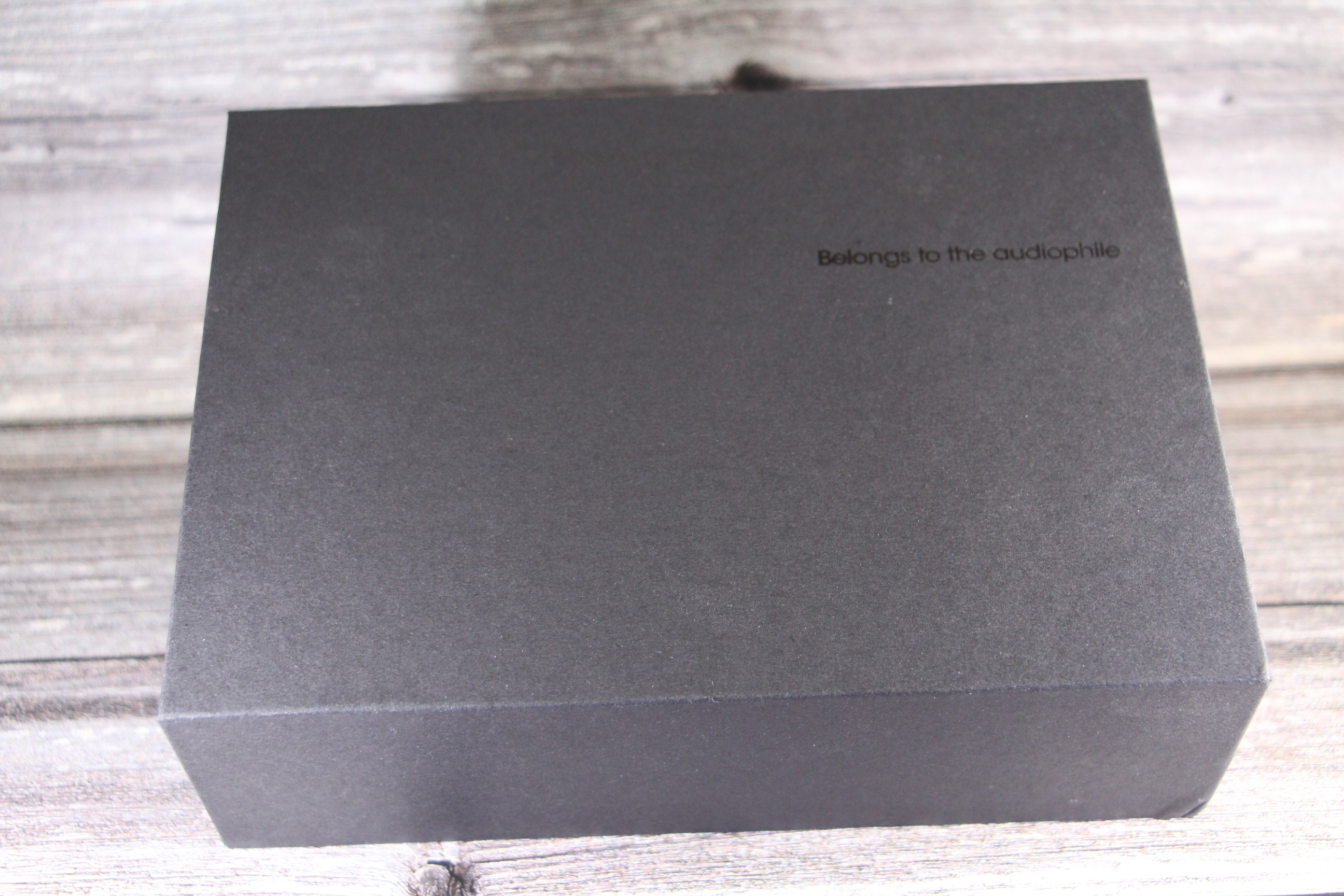
The unboxing of the Canon II is very luxurious, with an all-black glove-shaped box that features the name of the IEM in bright green and details about the earphone (in Chinese) on the back. The interior box is rigid and all black, with the phrase “Belongs to the audiophile” highlighted. I believe that the brand needs to have a lot of confidence in the quality of its product to include this phrase in the box, therefore already giving a spoiler about what I thought of the IEM, congratulations Yanyin.
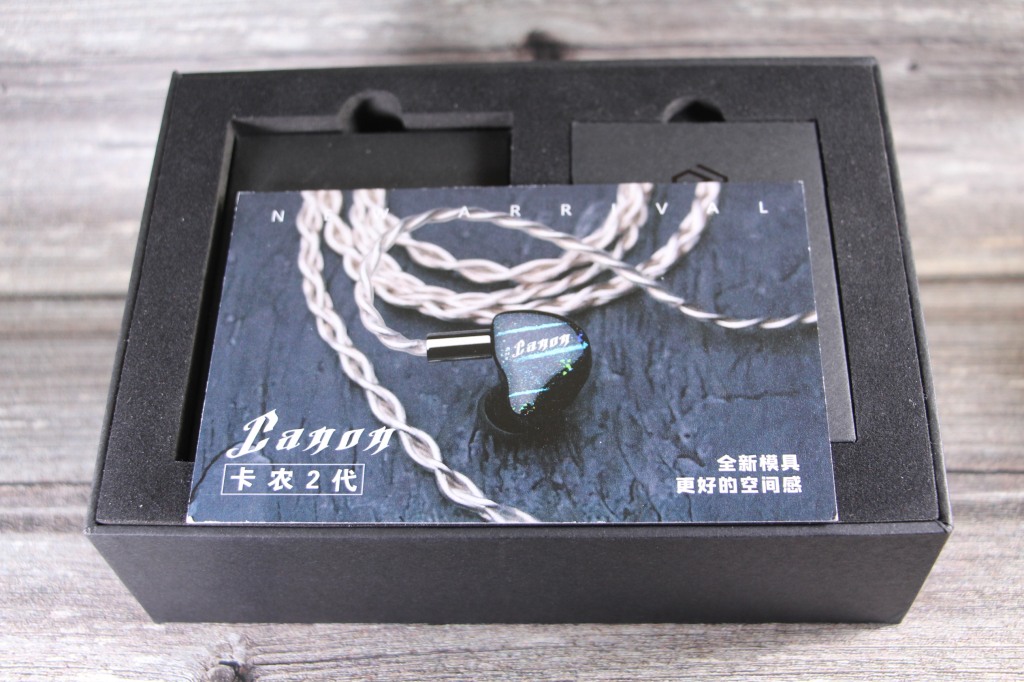

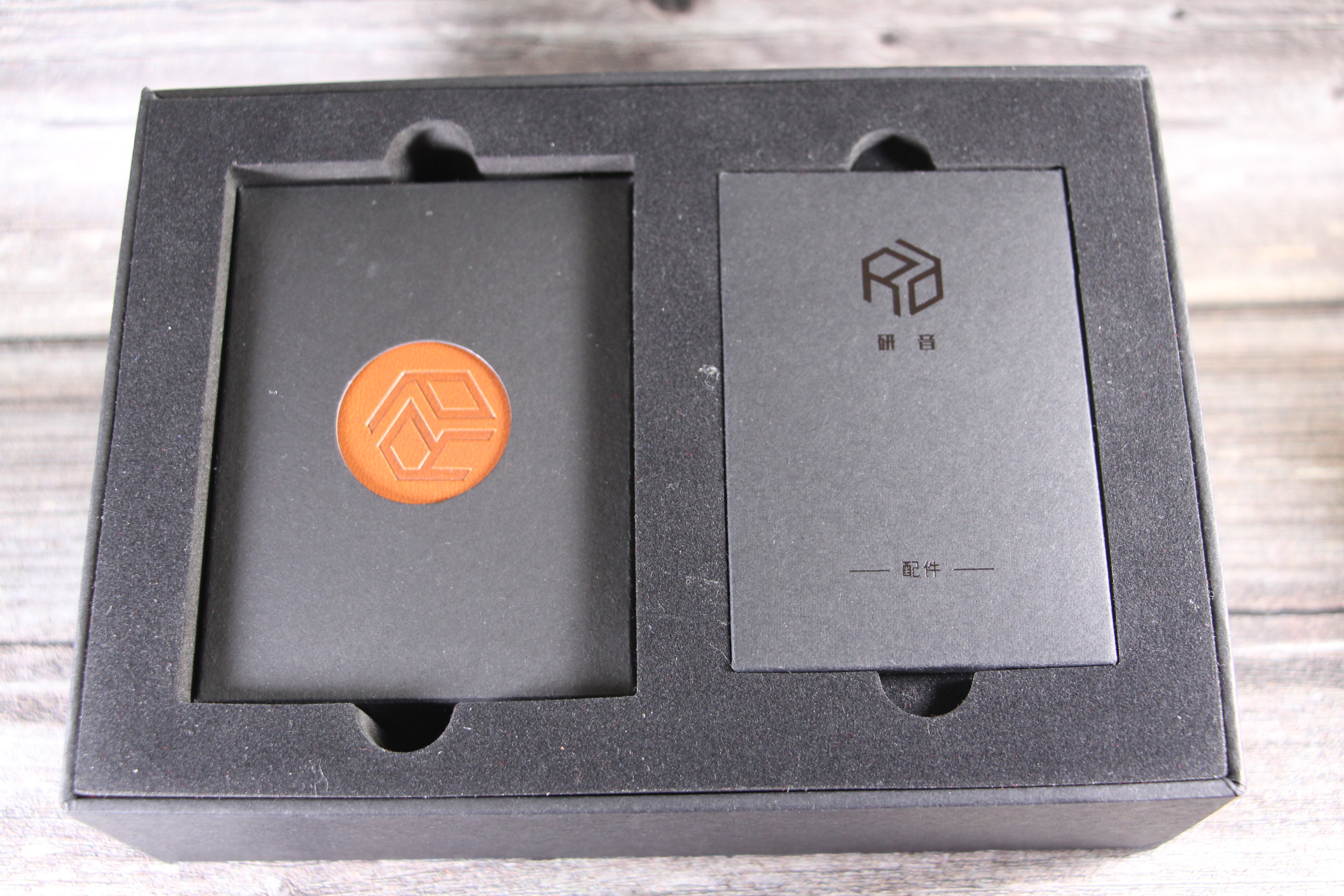

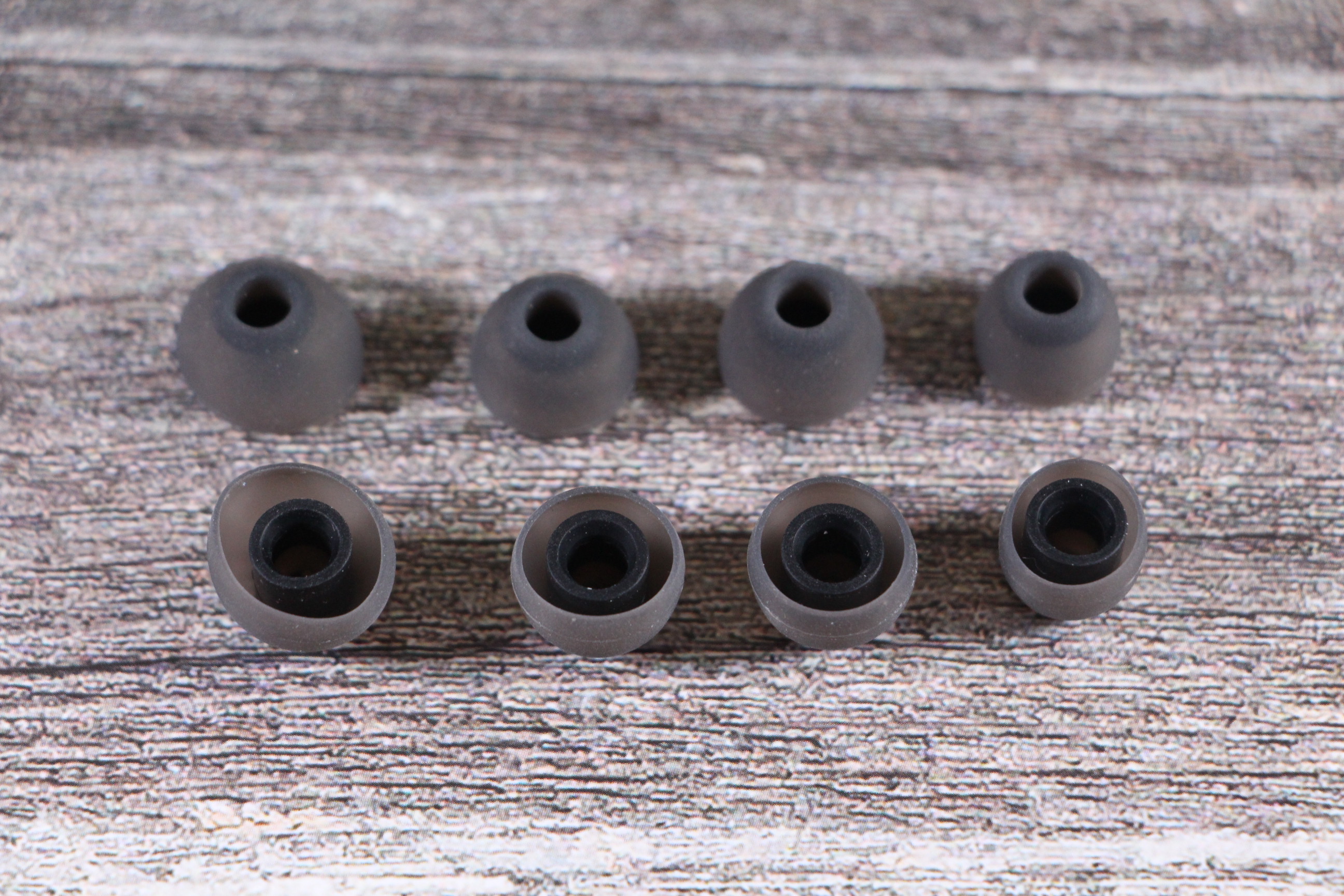
Inside the rigid box we immediately come across a card that shows a rendering of the earphone and details in Chinese about how to activate the keys. Just below, there are two smaller boxes. The one on the left has the warranty cards, and by removing it, we have access to the small tip case. These are good quality silicone tips, which are very similar to the Truthear Nova tips .
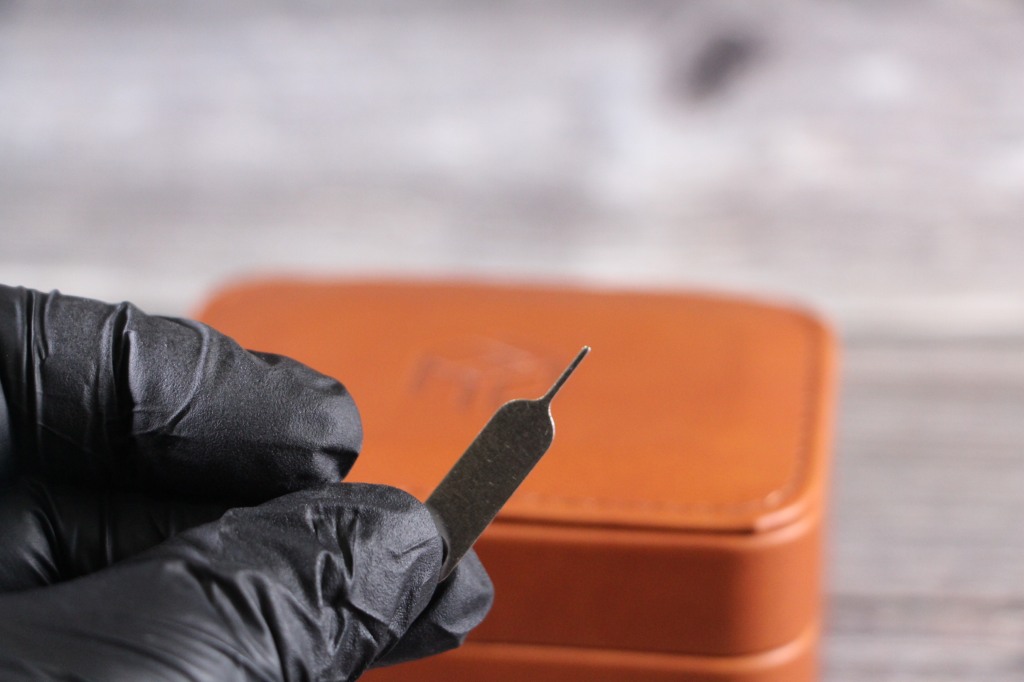
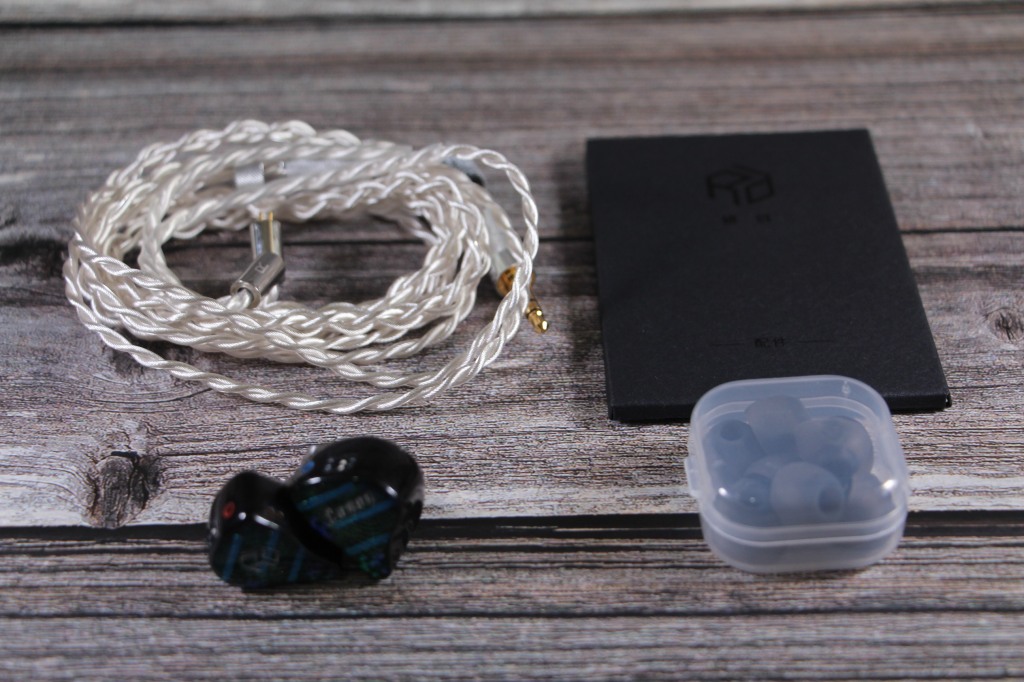

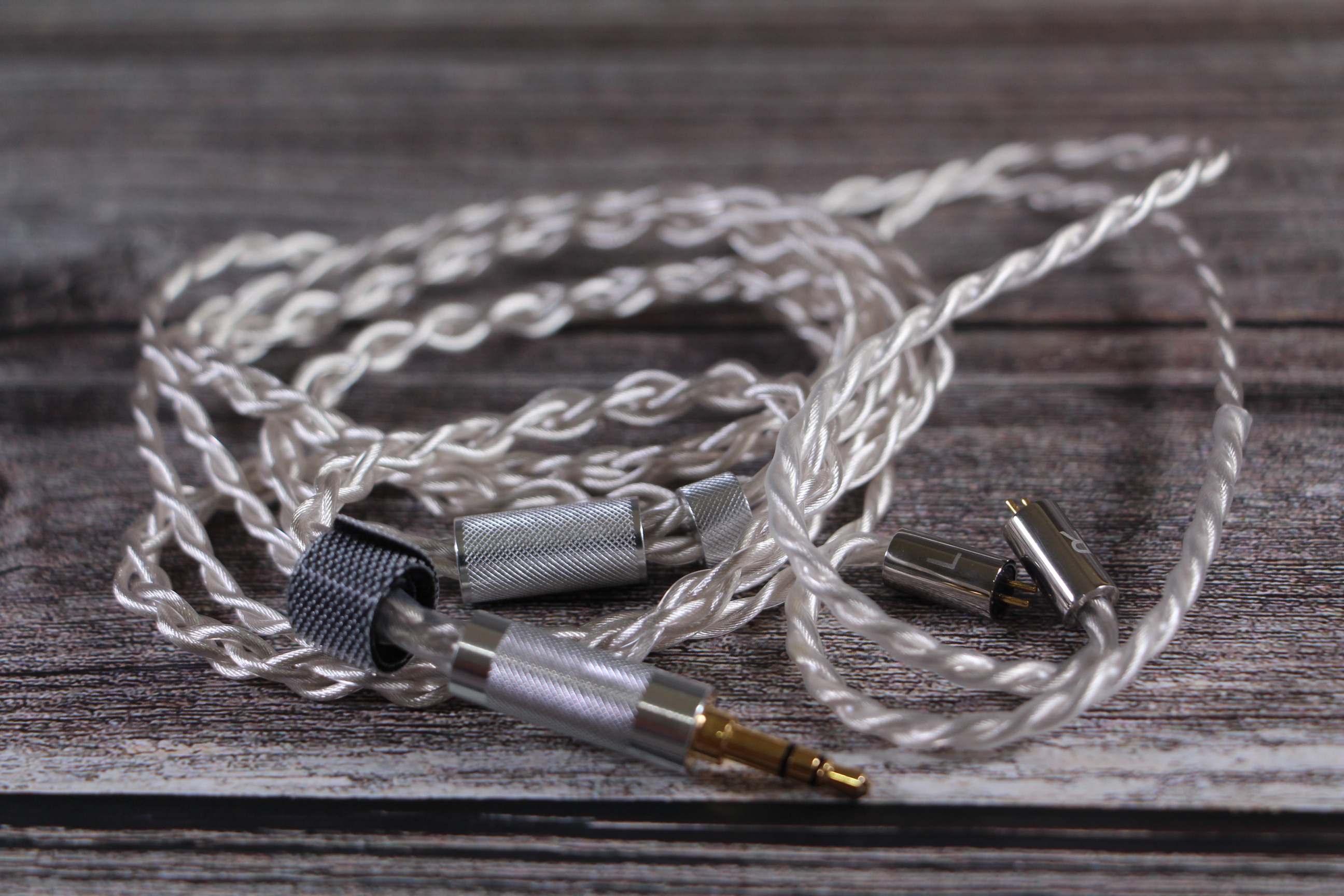
In the other small box we have the leather case, which contains the IEM already plugged into the cable. And speaking of the cable, it is a beautiful example with 4 cores of silver-plated graphene and copper wires. It has a beautiful metal connector, the same material as the splitter and chin slider. When purchasing, you can choose a 2.5 mm, 4.4 mm or 3.5 mm cable like the one in the test. For the headset, the connection is 2-pin 0.78 mm.
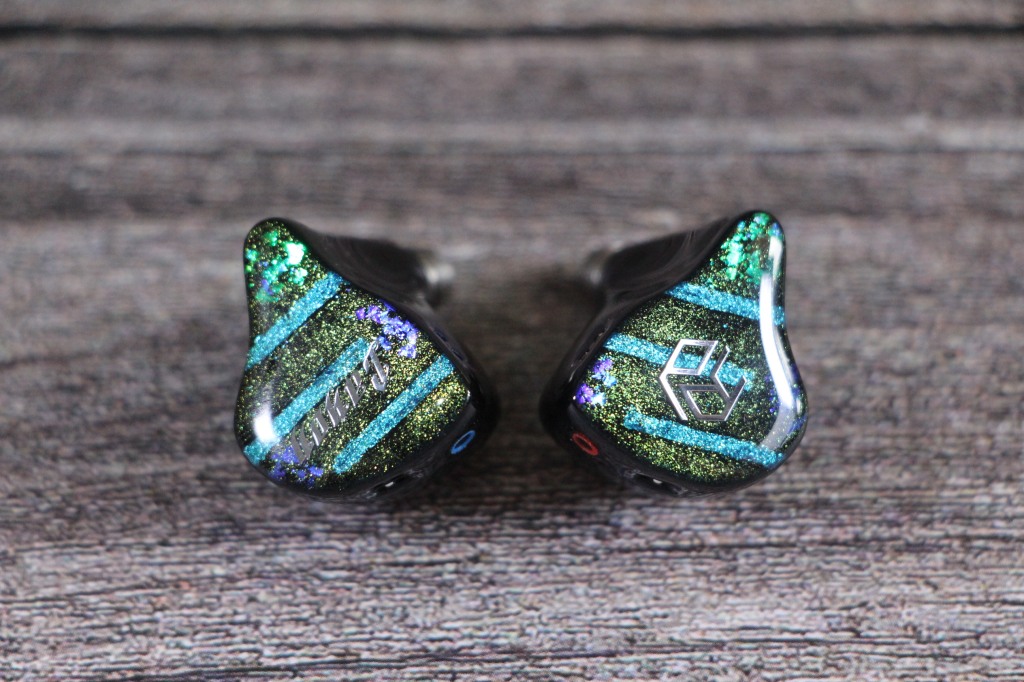


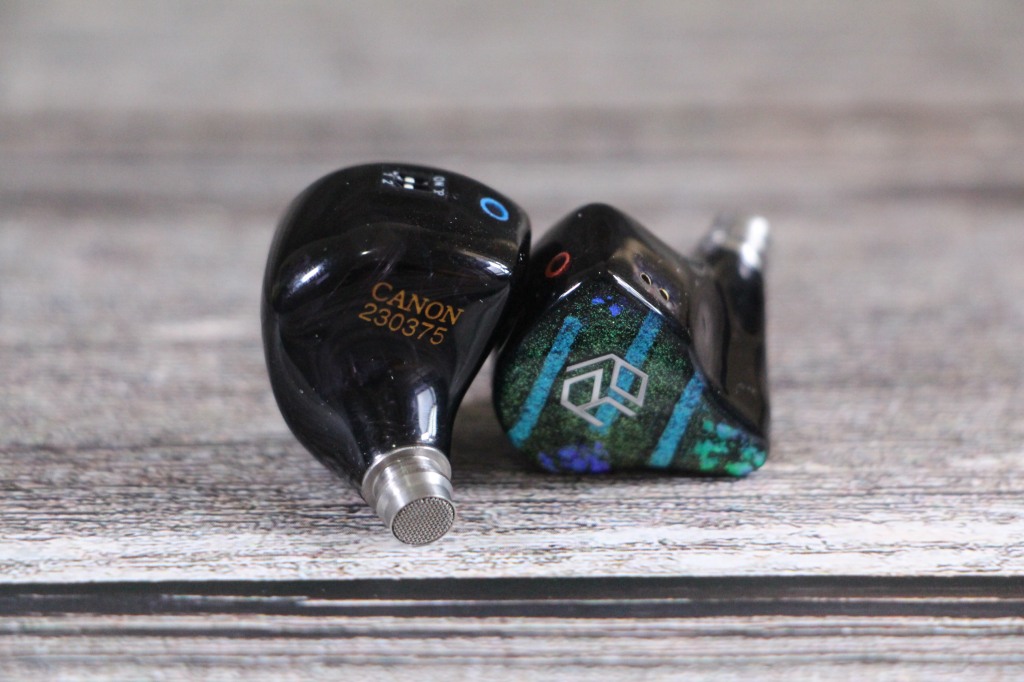

As for the IEM itself, it is a beautiful piece made entirely of resin, with holographic art that combines shades of green and blue on the faceplate, also featuring the brand's logo on the right earpiece and its name on the left earpiece. The shell is opaque, bearing the unit's serial number, and features a metal nozzle with a very restrictive grille at the tip. The 2-pin connector is flush with the IEM.
Its sound is generated by a 10 mm dynamic driver with a biological material diaphragm, which takes care of the bass. The mids and mid-highs are handled by a pair of BAs (balanced armatures), while another pair of BAs is responsible for the highs and highs. There is no information about the BA model or the use of crossovers.
Comfort
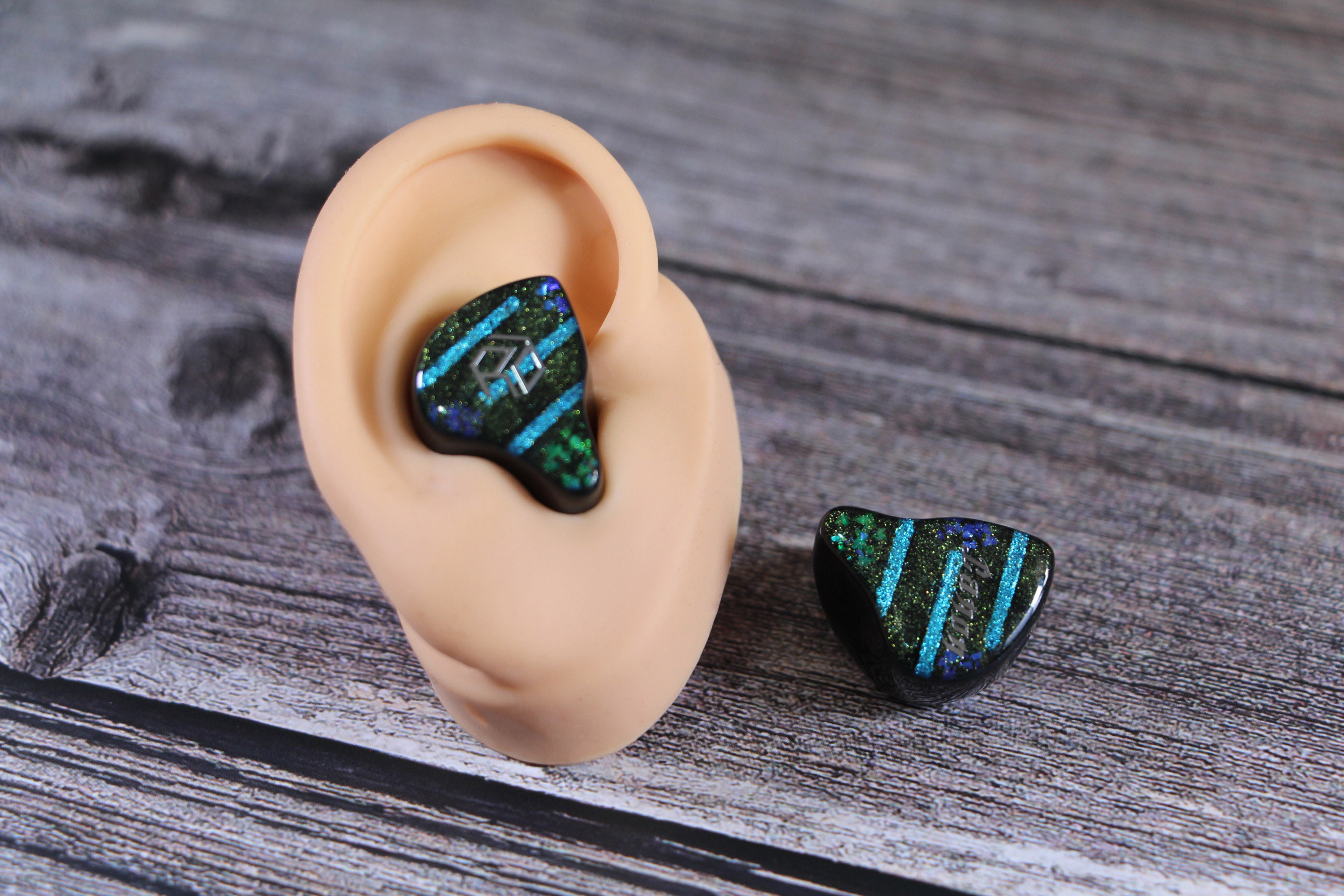
The Canon II has a very anatomical body, and to my ears the comfort was excellent. Although it is bulky, it is a very light IEM and has a long nozzle that allowed me to use the S tips for deeper insertion. As a result, the seal is excellent, as is the passive isolation of external sounds, and the pressure generated in the ear canal is reasonable, but not annoying.
Musical Sound
I tried it on different sources, which are: iPhone SE (my “DAP”), Dell Laptop, Apple Dongle, Truthear Shio, iFi Uno, Cayin RU6 and Topping DX3 Pro+.
By the way, I invite you to check out my headphone test playlist on Spotify . This is a dynamic playlist, and the songs can change at any time, but they will always follow the purpose of presenting all the points I mention in my musical evaluation of the headphones.
Regarding sources, the Canon II is very democratic, and plays well from any source. However, it scales very positively with more refined sources, and matches even better with more analytical ESS chips, given its darker tone.
NOTE: The following notes serve as a comparison parameter only in the price range in which the IEM falls.
With the switches off, the earphone already delivers a delicious sub impact in a “Gangsta's Paradise” or any similar genre, but it's in the bass drums and bass that this guy impresses. Listening to a Gojira “Drum Solo” with the Canon II is a memorable experience, and the same can be said for the bass line in any Charlie Brown Jr song .
The texture is also captivating, with the cellos of “Nothing Else Matters” by Apocalyptica so natural and holographic that they seemed to be playing in my house. If you have questions about what “audiophile bass” is, a Canon II answers that exactly.
And when it comes to speed, this driver with a biological diaphragm can handle any track, no matter how intense the kick drums are. I don't even need to say that he plays “Intra Venus” in the best possible way, right?
Hearing the contrast between Mariana Aydar's voice and Lecy Brandão's voice in this version of “Zé do Caroço” is a delight, whether due to the naturalness of the voices or the wonderful transparency of the instruments that play in the spectrum. The midrange sounds with a lot of presence, but doesn't overpower the other frequencies. It is correct, and nothing more.
The highest notes that Louane hits sound very controlled and at the same time expand in a tasty way. Both the piano and the voice in “Je vais t'aimer” share the stage democratically on Canon II, and I had to listen to this track more than once to appreciate all the beauty that this earphone can demonstrate.
I always listen to “Hello” by Evanescence to check the sibilance, and the Canon II doesn't even dream of sibilance, and in parallel it makes Amy Lee 's voice stand out as it should. And speaking of highlights, listening to “This I Love” with the Canon II is a heavenly experience.
The splash of the dishes in a “September in Montreal” is very correct, very natural, enchanting in just the right way, as is the case with their extension. I also made a point of listening to “Espera” , a track whose cymbal input is remarkable, and the Canon II exceeds it. Too good!
And the violins? Boy, it was like closing my eyes and imagining Lindsey Stirling performing “Carol of The Bells” in my room, a remarkable experience. The timbre is very correct, with a very correct, impeccable range.
And the Canon II is yet another representative of these ideal technicalities. The soundstage is very wide, very holographic, with excellent layering. The image formed in “Las Perlas de Tu Boca” is wonderful, at the same time as the level of detail is very high, and although it does not deliver all possible microdetails, it delivers enough.
I give my honorable mention to the separation of instruments in this IEM, very coherent and precise, and the resolution also deserves a standing ovation. It's among the best I've ever heard, even if compared to earphones whose numbers are much higher.
Sound in Games
In battle royale games like PUBG , the Canon II performs optimally. It presents the location of sound emitters in any direction of the 360-degree spectrum, including excellent distance perception. On maps where there is enemy movement above or below your position, the Canon II also presents these sounds with good accuracy. Rating 5/5.
In FPS games like Valorant , the Canon II accurately transmits the movement of opponents across the map, even in intense exchange situations. And thanks to good midrange tuning, teammates' voices via VOIP are heard very well during matches. Rating 5/5.
In casual games, like Genshin Impact , the immersion provided by Canon II is wonderful. There is a delicious feeling of a large and living world, with excellent naturalness in the sounds of nature, for example. Rating 5/5.
And finally, in simulation games like F1 2023 , the intensity with which the Canon II delivers engine sounds, the sound of the zebra attack and other surrounding sounds is remarkable, creating a fantastic immersive environment. Rating 5/5.
Sound in Films, Series and Productivity
With a deliciously engaging and immersive tuning, I loved enjoying any movie with it, especially action movies like “John Wick 4” or even “Fast and Furious 10” . But he also performs pleasantly in films more focused on dialogue.
And speaking of the quality of dialogues, the Canon II serves perfectly as a study or work companion, because even though it has bass present, the IEM excels even in bad recordings or in those meetings where the audio quality is terrible.
Conclusion
I've already tested more than 200 audio gears, ranging from 15 USD KZs to the very refined 64 Audio Tia Fourtè or the Brazilian AudioDream Somnium EST ER . And even with so much experience accumulated in a short time, I still manage to surprise myself. And I must confess that my expectations were low, given that the Canon OG for me was just a good earphone and nothing more.
However, from the first song, Yanyin Canon II was pure surprise and passion, feelings that grew every minute I spent with it. Do you know the “wow effect”? I had it with the Canon II, and I still have it. Track after track, minute after minute, this IEMengages and captivates without ceremony, and it becomes difficult to put it aside.
Its name makes perfect sense: canonical. It is perfectly in accordance with the dogmas of audiophilia, and deserves to bear the phrase “Belongs to the audiophile” on its box. With so many qualities, it surpasses the Aful P8 at 400 USD on my list of recommendations . Barely, but it beats it.
Big hug!
Presentation

Hello, friends of AvaliaSom. I'm Marcelo Dosec, and the one I bring you is the Yanyin Canon II, a unit that was kindly sent by Yanyin herself for review here, on Fabrício's channel and on Antenor's channel . We have no obligation to speak highly of the earphone, just provide our independent opinions about it. Xiè xiè, Yanyin.
This IEM costs 379 USD (or around 730 USD applying the 92% Brazilian taxes in current legislation).
The Canon II is the successor to the Yanyin Canon, an earphone that I tested on video and was impressed with its competence and versatility, as it had three tuning keys and each one took care of a frequency range. It was like having a little three-band equalizer in each ear, a feature that endeared the Canon to Greeks and Trojans alike.
Unlike its predecessor, the Canon II only has two switches, and they only take care of the bass. The two switches activated bring a considerable boost in the subs and medium-bass, while by activating switch 1 or 2 only, there is only a discreet increase and, in practice, I already find the bass sufficient with the switches deactivated, especially as it brings more weight on the subs.



The unboxing of the Canon II is very luxurious, with an all-black glove-shaped box that features the name of the IEM in bright green and details about the earphone (in Chinese) on the back. The interior box is rigid and all black, with the phrase “Belongs to the audiophile” highlighted. I believe that the brand needs to have a lot of confidence in the quality of its product to include this phrase in the box, therefore already giving a spoiler about what I thought of the IEM, congratulations Yanyin.





Inside the rigid box we immediately come across a card that shows a rendering of the earphone and details in Chinese about how to activate the keys. Just below, there are two smaller boxes. The one on the left has the warranty cards, and by removing it, we have access to the small tip case. These are good quality silicone tips, which are very similar to the Truthear Nova tips .




In the other small box we have the leather case, which contains the IEM already plugged into the cable. And speaking of the cable, it is a beautiful example with 4 cores of silver-plated graphene and copper wires. It has a beautiful metal connector, the same material as the splitter and chin slider. When purchasing, you can choose a 2.5 mm, 4.4 mm or 3.5 mm cable like the one in the test. For the headset, the connection is 2-pin 0.78 mm.





As for the IEM itself, it is a beautiful piece made entirely of resin, with holographic art that combines shades of green and blue on the faceplate, also featuring the brand's logo on the right earpiece and its name on the left earpiece. The shell is opaque, bearing the unit's serial number, and features a metal nozzle with a very restrictive grille at the tip. The 2-pin connector is flush with the IEM.
Its sound is generated by a 10 mm dynamic driver with a biological material diaphragm, which takes care of the bass. The mids and mid-highs are handled by a pair of BAs (balanced armatures), while another pair of BAs is responsible for the highs and highs. There is no information about the BA model or the use of crossovers.
Comfort

The Canon II has a very anatomical body, and to my ears the comfort was excellent. Although it is bulky, it is a very light IEM and has a long nozzle that allowed me to use the S tips for deeper insertion. As a result, the seal is excellent, as is the passive isolation of external sounds, and the pressure generated in the ear canal is reasonable, but not annoying.
Musical Sound
I tried it on different sources, which are: iPhone SE (my “DAP”), Dell Laptop, Apple Dongle, Truthear Shio, iFi Uno, Cayin RU6 and Topping DX3 Pro+.
By the way, I invite you to check out my headphone test playlist on Spotify . This is a dynamic playlist, and the songs can change at any time, but they will always follow the purpose of presenting all the points I mention in my musical evaluation of the headphones.
Regarding sources, the Canon II is very democratic, and plays well from any source. However, it scales very positively with more refined sources, and matches even better with more analytical ESS chips, given its darker tone.
NOTE: The following notes serve as a comparison parameter only in the price range in which the IEM falls.
- Bass: Level 5/5, Extension 5/5, Speed 5/5, Texture 5/5
With the switches off, the earphone already delivers a delicious sub impact in a “Gangsta's Paradise” or any similar genre, but it's in the bass drums and bass that this guy impresses. Listening to a Gojira “Drum Solo” with the Canon II is a memorable experience, and the same can be said for the bass line in any Charlie Brown Jr song .
The texture is also captivating, with the cellos of “Nothing Else Matters” by Apocalyptica so natural and holographic that they seemed to be playing in my house. If you have questions about what “audiophile bass” is, a Canon II answers that exactly.
And when it comes to speed, this driver with a biological diaphragm can handle any track, no matter how intense the kick drums are. I don't even need to say that he plays “Intra Venus” in the best possible way, right?
- Midrange: Level 4/5, Presence 5/5, Clarity 5/5, Voices 5/5, Transparency 5/5
Hearing the contrast between Mariana Aydar's voice and Lecy Brandão's voice in this version of “Zé do Caroço” is a delight, whether due to the naturalness of the voices or the wonderful transparency of the instruments that play in the spectrum. The midrange sounds with a lot of presence, but doesn't overpower the other frequencies. It is correct, and nothing more.
The highest notes that Louane hits sound very controlled and at the same time expand in a tasty way. Both the piano and the voice in “Je vais t'aimer” share the stage democratically on Canon II, and I had to listen to this track more than once to appreciate all the beauty that this earphone can demonstrate.
I always listen to “Hello” by Evanescence to check the sibilance, and the Canon II doesn't even dream of sibilance, and in parallel it makes Amy Lee 's voice stand out as it should. And speaking of highlights, listening to “This I Love” with the Canon II is a heavenly experience.
- Treble: Level 3/5, Brightness 4/5, Airiness 4/5, Extension 5/5, Timbre 5/5
The splash of the dishes in a “September in Montreal” is very correct, very natural, enchanting in just the right way, as is the case with their extension. I also made a point of listening to “Espera” , a track whose cymbal input is remarkable, and the Canon II exceeds it. Too good!
And the violins? Boy, it was like closing my eyes and imagining Lindsey Stirling performing “Carol of The Bells” in my room, a remarkable experience. The timbre is very correct, with a very correct, impeccable range.
- Technicalities: Sound Stage 5/5, Image 5/5, Layering 5/5, Separation 5/5, Details 4/5, Resolution 5/5
And the Canon II is yet another representative of these ideal technicalities. The soundstage is very wide, very holographic, with excellent layering. The image formed in “Las Perlas de Tu Boca” is wonderful, at the same time as the level of detail is very high, and although it does not deliver all possible microdetails, it delivers enough.
I give my honorable mention to the separation of instruments in this IEM, very coherent and precise, and the resolution also deserves a standing ovation. It's among the best I've ever heard, even if compared to earphones whose numbers are much higher.
Sound in Games
In battle royale games like PUBG , the Canon II performs optimally. It presents the location of sound emitters in any direction of the 360-degree spectrum, including excellent distance perception. On maps where there is enemy movement above or below your position, the Canon II also presents these sounds with good accuracy. Rating 5/5.
In FPS games like Valorant , the Canon II accurately transmits the movement of opponents across the map, even in intense exchange situations. And thanks to good midrange tuning, teammates' voices via VOIP are heard very well during matches. Rating 5/5.
In casual games, like Genshin Impact , the immersion provided by Canon II is wonderful. There is a delicious feeling of a large and living world, with excellent naturalness in the sounds of nature, for example. Rating 5/5.
And finally, in simulation games like F1 2023 , the intensity with which the Canon II delivers engine sounds, the sound of the zebra attack and other surrounding sounds is remarkable, creating a fantastic immersive environment. Rating 5/5.
Sound in Films, Series and Productivity
With a deliciously engaging and immersive tuning, I loved enjoying any movie with it, especially action movies like “John Wick 4” or even “Fast and Furious 10” . But he also performs pleasantly in films more focused on dialogue.
And speaking of the quality of dialogues, the Canon II serves perfectly as a study or work companion, because even though it has bass present, the IEM excels even in bad recordings or in those meetings where the audio quality is terrible.
Conclusion
I've already tested more than 200 audio gears, ranging from 15 USD KZs to the very refined 64 Audio Tia Fourtè or the Brazilian AudioDream Somnium EST ER . And even with so much experience accumulated in a short time, I still manage to surprise myself. And I must confess that my expectations were low, given that the Canon OG for me was just a good earphone and nothing more.
However, from the first song, Yanyin Canon II was pure surprise and passion, feelings that grew every minute I spent with it. Do you know the “wow effect”? I had it with the Canon II, and I still have it. Track after track, minute after minute, this IEMengages and captivates without ceremony, and it becomes difficult to put it aside.
Its name makes perfect sense: canonical. It is perfectly in accordance with the dogmas of audiophilia, and deserves to bear the phrase “Belongs to the audiophile” on its box. With so many qualities, it surpasses the Aful P8 at 400 USD on my list of recommendations . Barely, but it beats it.
Big hug!
marcos antônio
great analysis, I ordered mine last week and it should arrive at the beginning of next week and I'm looking forward to listening to it, I was in doubt between it and the Hype 2 but reading several different reviews led me to believe that it has the most similar sound With what I'm looking for, I'm subscribed to your channel, you do a great job. Parabens e otima explicação 
dosec
Thank you very much Marcos, I'm sure you will love Canon II. Thanks for your feedback, fico honrado! Grande abraço!
dosec
New Head-Fier
Pros: - Sweetness
- Nice treble extension
- Great bass texture
- Nice body and box
- Makes me think why should I pay more than 25 USD on an IEM
- Nice treble extension
- Great bass texture
- Nice body and box
- Makes me think why should I pay more than 25 USD on an IEM
Cons: - Nothing on this price range
Kiwi Ears Dolce (originally posted at avaliasom.com)
Presentation

Hello, friends of AvaliaSom. The one I bring you is the Kiwi Ears Dolce, an earphone that was kindly sent to me by Linsoul , without any obligation to speak highly about it, just provide my opinions. Xiè xiè, Linsoul!
This IEM costs from 25 USD (or around 30 USD applying the 20% Brazilian taxes in current legislation).
I've already tried some Kiwi Ears products: Cadenza , Quartet , Orchestra Lite and now it's Dolce's turn. The list of recent releases from Kiwi Ears is quite extensive, and I admire the work this brand has done, delivering IEMs for different tastes and budgets. And at this time when import tax burdens in Brazil are at prohibitive levels, the cheap Dolce fits like a glove for those who want to get to know Kiwi Ears' work without spending a lot.

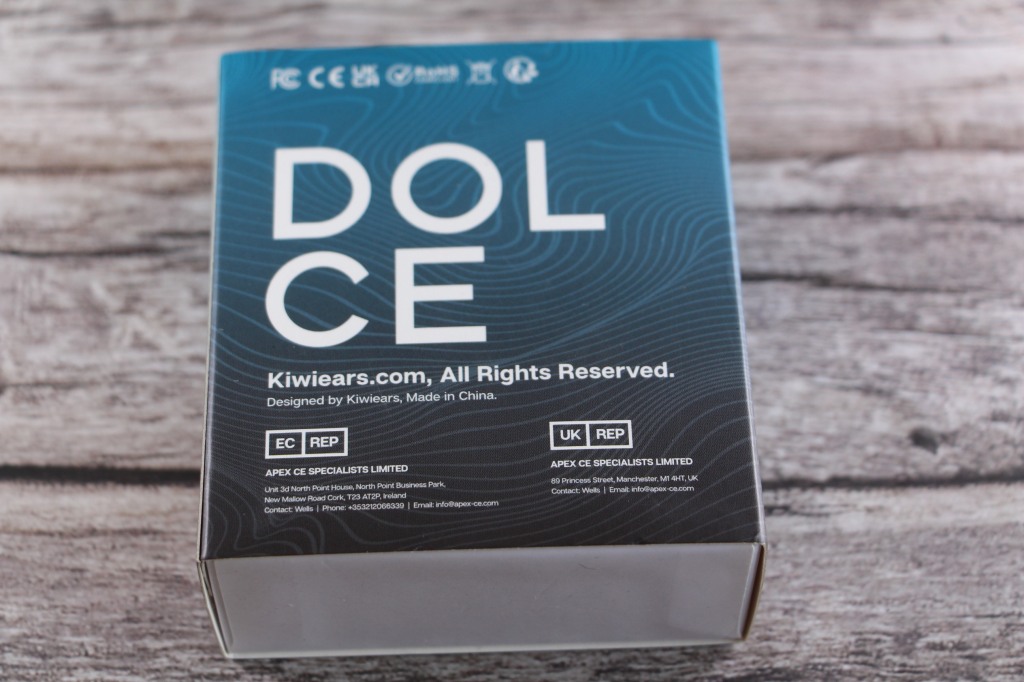

The IEM comes with a simple but careful unboxing. What appears to be one of those cigarette box packaging is actually a small rigid box with another glove box on the outside. And this one features the render of the IEM on the front and the Dolce name highlighted on both the back and the side. The internal rigid box is white and features the Kiwi Ears logo.
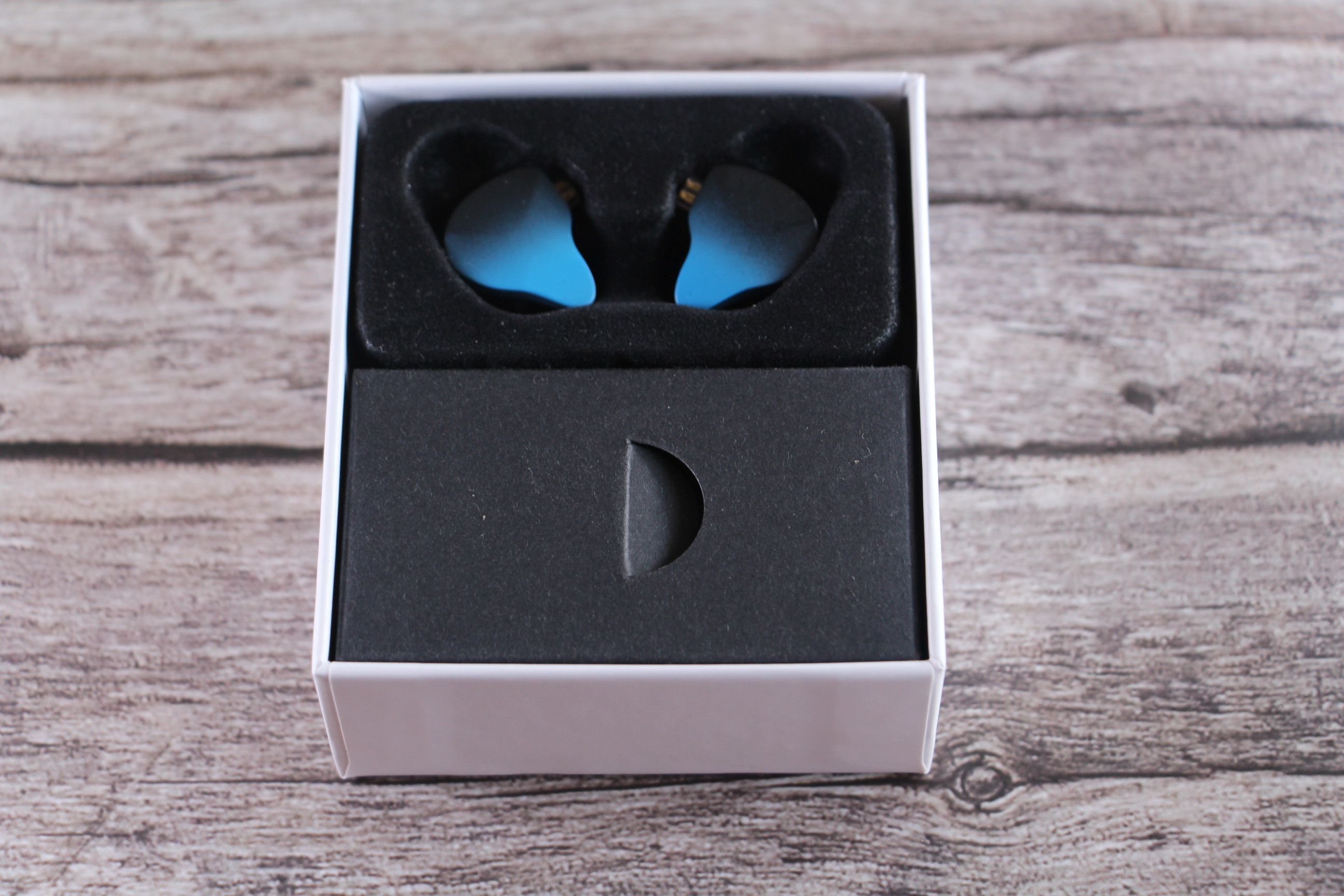
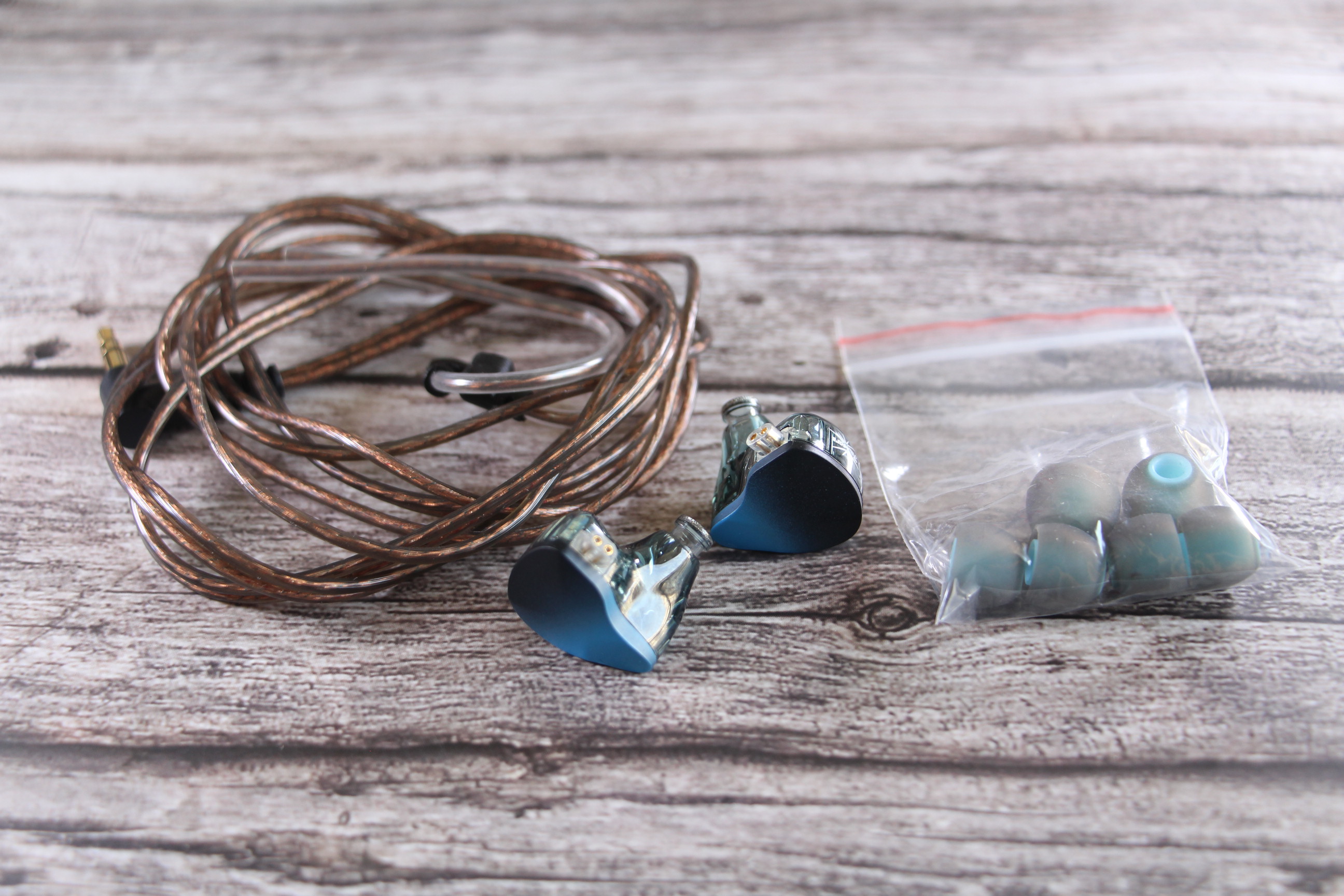

Inside the rigid box, we have the plastic cradle for the IEMs with a velvety coating, and there is also another smaller box that stores the cable and a spartan kit of good silicone tips in a small bag. The cable is very simple, but well made, made of OCC (oxygen-free copper). The connections are 3.5 mm for the source and 2-pin 0.78 mm for the earphone. There is no case or bag, unfortunately.

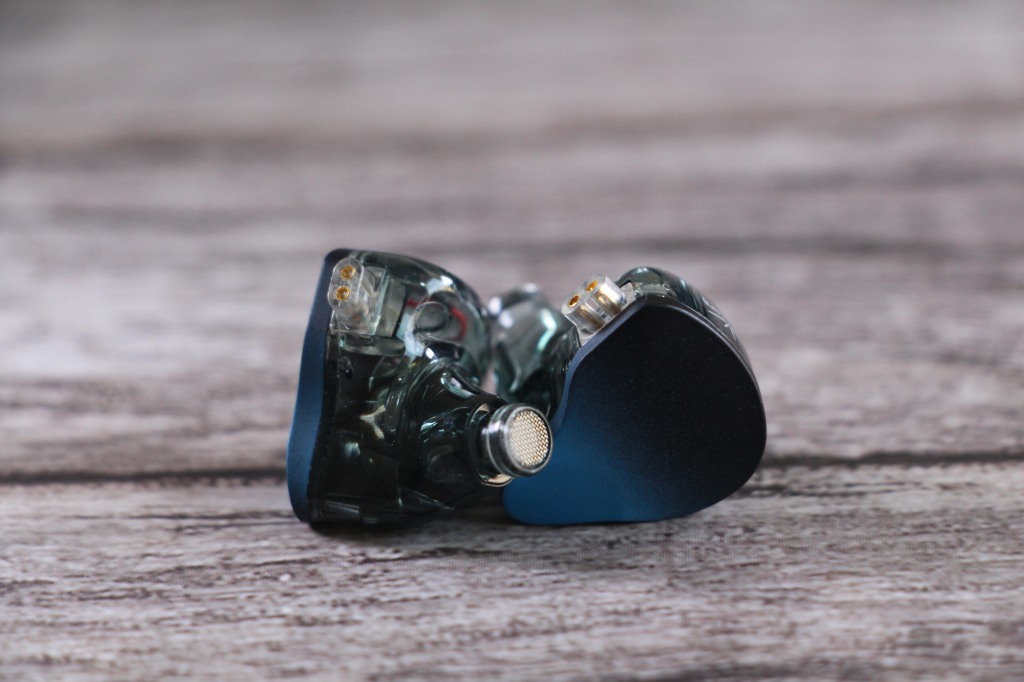

The IEM itself is another example of simplicity well done: the plastic faceplate combines blue and black in a gradient, while the shell is entirely made of slightly smoked transparent plastic, with a nozzle made of the same material, allowing you to see the driver and cables on the inside. interior. There is a metal grid with a filter at the tip of the nozzle, in addition to the brand name printed on the shell and the 2-pin connector is popped out.
The sound is generated by a 10 mm dynamic driver with an LDP diaphragm, a combination of LCP (liquid crystal polymer) and LDPE (low density polyethylene).
Comfort

To my ears, the comfort of the Kiwi Ears Dolce was ideal. The phone is very light, has a rounded body and a good length nozzle. I used the size L tips that came with the package and had a great seal, without any discomfort. As it is a ventilated earphone, it does not generate any pressure in the ear canal.
Musical Sound
I tried the IEM on different sources, which are: iPhone SE (my “DAP”), Dell Laptop, Apple Dongle, Truthear Shio, iFi Uno, Cayin RU6 and Topping DX3 Pro+.
By the way, I invite you to check out my headphone test playlist on Spotify . This is a dynamic playlist, and the songs can change at any time, but they will always follow the purpose of presenting all the points I mention in my musical evaluation of the headphones.
Regarding sources, the Kiwi Ears Dolce plays smoothly in any of them, and assimilates the coloring characteristics of each sourcewell. I didn't notice considerable differences in sound in more refined sources when compared to cell phones or laptops, for example.
NOTE: The following notes serve as a comparison parameter only in the price range in which the IEM falls.
In terms of texture, I really like it, and I consider it superior even to the Cadenza, which brings drier and faster bass, without the body that the Dolce gives to the cellos of an Apocalyptica, for example. There is also a beautiful presentation of drums in a rock song, and the bass line on tracks like “Paranoid” appears well, but not prominently.
And just like in most modern drivers, even in cheap IEMs, there is good speed in the kick drums of Ne Obliviscaris and similar bands. I didn't notice a rush of notes, not even in the most insane moments.
The clarity and transparency of a Portuguese guitar or a mandolin is also notable, just as the IEM also presents Andrea Grauzas' soft voice in a very sweet way. Did the idea to call the phone Dolce come from that?
Jokes aside, this is the best way to define the midrange of this guy: sweetness. Not even in more analytical sources do Helloween's voice and guitar pass the point, but they don't give you goosebumps either. And when it comes to the more intense female voices, Dolce also appears controlled, and I noticed a discreet sibilance beyond what was expected in Evanescence's “Hello”, but it didn't bother me.
However, I really like the splash of cymbals, which stand out on any track, including a beautiful extension noted in “September in Montreal”. Compared to the Truthear Hola, it's as if the Dolce had an extra driver to take care of the high treble.
Listening to a forró (brazilian folk genre), the presence of the triangles among other instruments is very noticeable, while the highest notes of Lindsey Stirling's violin sound very interesting.
The separation of instruments is average for this price range, as is the level of detail and resolution presented. In other words, although it is not a technical exponent, the Dolce is a very capable phone in this aspect.
Sound in Games
For battle royale games, like CoD Warzone 2.0 , Dolce is very competent in presenting what happens on the sides, including a good sense of distance, but it lacks precision when the sound emitters are on the diagonals, just in front or right behind. And there is practically no accuracy in different sounds on the vertical axis. Rating 2.5/5 .
In FPS games like Valorant , Dolce changes from water to wine. The tuning is ideal for highlighting the sound of opponents' footsteps, and its stereo image matches the game very well. This makes it very easy to identify the location and movement of opponents, even in the most chaotic moments. Rating 5/5 .
In casual games, like GTA V , Dolce delivers a good lateral image, but its three-dimensionality is very discreet, which ends up damaging the immersion a little. On the other hand, there is an excellent naturalness to the surrounding sounds. Rating 3/5.
Finally, in simulation games like Assetto Corsa , there is a beautiful texture to the sound of the engines, but the Dolce lacks a little in strength. The immersion is good, but there is always the feeling that something is missing. Rating 4/5.
Sound in Films, Series and Productivity
Dolce's tuning is very interesting for films that feature a lot of dialogue, like “Scarface”, and proves to be a good companion for documentaries and the like.
I also recommend the Dolce for anyone who needs an earphone for work or study, as it provides a good sound for voices, even lower-pitched or poorly recorded voices, and because it is comfortable, it can be used for hours without any discomfort.
Conclusion
Kiwi is a fruit that brings an ideal proportion of sweetness and acidity to my palate, it's a balance almost like Ying and Yang. And just like the fruit, this cheap representative of Kiwi Ears balances the sonorous flavors, with an exemplary capacity in this price range.
For 25 USD, Dolce enchants, and the longer you keep it in your ears, the more you question why we spend so much on this hobby, if often a little jewel like this can deliver everything we're looking for in our music. preferred.
The Truthear Hola was, for a long time, my favorite IEM in this input range. Even when the KZ D-Fi arrived and enchanted me with its resolution, I was in doubt about which of the two was better. But with Dolce, that doubt is over. Today, it is the best cheap option for me, and I recommend it with my eyes closed, and it becomes part of my list of recommendations.
Big hug!
Presentation

Hello, friends of AvaliaSom. The one I bring you is the Kiwi Ears Dolce, an earphone that was kindly sent to me by Linsoul , without any obligation to speak highly about it, just provide my opinions. Xiè xiè, Linsoul!
This IEM costs from 25 USD (or around 30 USD applying the 20% Brazilian taxes in current legislation).
I've already tried some Kiwi Ears products: Cadenza , Quartet , Orchestra Lite and now it's Dolce's turn. The list of recent releases from Kiwi Ears is quite extensive, and I admire the work this brand has done, delivering IEMs for different tastes and budgets. And at this time when import tax burdens in Brazil are at prohibitive levels, the cheap Dolce fits like a glove for those who want to get to know Kiwi Ears' work without spending a lot.



The IEM comes with a simple but careful unboxing. What appears to be one of those cigarette box packaging is actually a small rigid box with another glove box on the outside. And this one features the render of the IEM on the front and the Dolce name highlighted on both the back and the side. The internal rigid box is white and features the Kiwi Ears logo.



Inside the rigid box, we have the plastic cradle for the IEMs with a velvety coating, and there is also another smaller box that stores the cable and a spartan kit of good silicone tips in a small bag. The cable is very simple, but well made, made of OCC (oxygen-free copper). The connections are 3.5 mm for the source and 2-pin 0.78 mm for the earphone. There is no case or bag, unfortunately.



The IEM itself is another example of simplicity well done: the plastic faceplate combines blue and black in a gradient, while the shell is entirely made of slightly smoked transparent plastic, with a nozzle made of the same material, allowing you to see the driver and cables on the inside. interior. There is a metal grid with a filter at the tip of the nozzle, in addition to the brand name printed on the shell and the 2-pin connector is popped out.
The sound is generated by a 10 mm dynamic driver with an LDP diaphragm, a combination of LCP (liquid crystal polymer) and LDPE (low density polyethylene).
Comfort

To my ears, the comfort of the Kiwi Ears Dolce was ideal. The phone is very light, has a rounded body and a good length nozzle. I used the size L tips that came with the package and had a great seal, without any discomfort. As it is a ventilated earphone, it does not generate any pressure in the ear canal.
Musical Sound
I tried the IEM on different sources, which are: iPhone SE (my “DAP”), Dell Laptop, Apple Dongle, Truthear Shio, iFi Uno, Cayin RU6 and Topping DX3 Pro+.
By the way, I invite you to check out my headphone test playlist on Spotify . This is a dynamic playlist, and the songs can change at any time, but they will always follow the purpose of presenting all the points I mention in my musical evaluation of the headphones.
Regarding sources, the Kiwi Ears Dolce plays smoothly in any of them, and assimilates the coloring characteristics of each sourcewell. I didn't notice considerable differences in sound in more refined sources when compared to cell phones or laptops, for example.
NOTE: The following notes serve as a comparison parameter only in the price range in which the IEM falls.
- Bass: Level 3/5, Extension 5/5, Speed 4/5, Texture 4/5
In terms of texture, I really like it, and I consider it superior even to the Cadenza, which brings drier and faster bass, without the body that the Dolce gives to the cellos of an Apocalyptica, for example. There is also a beautiful presentation of drums in a rock song, and the bass line on tracks like “Paranoid” appears well, but not prominently.
And just like in most modern drivers, even in cheap IEMs, there is good speed in the kick drums of Ne Obliviscaris and similar bands. I didn't notice a rush of notes, not even in the most insane moments.
- Midrange: Level 3/5, Presence 4/5, Clarity 4/5, Voices 4/5, Transparency 4/5
The clarity and transparency of a Portuguese guitar or a mandolin is also notable, just as the IEM also presents Andrea Grauzas' soft voice in a very sweet way. Did the idea to call the phone Dolce come from that?
Jokes aside, this is the best way to define the midrange of this guy: sweetness. Not even in more analytical sources do Helloween's voice and guitar pass the point, but they don't give you goosebumps either. And when it comes to the more intense female voices, Dolce also appears controlled, and I noticed a discreet sibilance beyond what was expected in Evanescence's “Hello”, but it didn't bother me.
- Treble: Level 4/5, Brightness 4/5, Airiness 5/5, Extension 5/5, Timbre 3/5
However, I really like the splash of cymbals, which stand out on any track, including a beautiful extension noted in “September in Montreal”. Compared to the Truthear Hola, it's as if the Dolce had an extra driver to take care of the high treble.
Listening to a forró (brazilian folk genre), the presence of the triangles among other instruments is very noticeable, while the highest notes of Lindsey Stirling's violin sound very interesting.
- Technicalities: Sound Stage 4/5, Image 4/5, Layering 2/5, Separation 3/5, Details 3/5, Resolution 3/5
The separation of instruments is average for this price range, as is the level of detail and resolution presented. In other words, although it is not a technical exponent, the Dolce is a very capable phone in this aspect.
Sound in Games
For battle royale games, like CoD Warzone 2.0 , Dolce is very competent in presenting what happens on the sides, including a good sense of distance, but it lacks precision when the sound emitters are on the diagonals, just in front or right behind. And there is practically no accuracy in different sounds on the vertical axis. Rating 2.5/5 .
In FPS games like Valorant , Dolce changes from water to wine. The tuning is ideal for highlighting the sound of opponents' footsteps, and its stereo image matches the game very well. This makes it very easy to identify the location and movement of opponents, even in the most chaotic moments. Rating 5/5 .
In casual games, like GTA V , Dolce delivers a good lateral image, but its three-dimensionality is very discreet, which ends up damaging the immersion a little. On the other hand, there is an excellent naturalness to the surrounding sounds. Rating 3/5.
Finally, in simulation games like Assetto Corsa , there is a beautiful texture to the sound of the engines, but the Dolce lacks a little in strength. The immersion is good, but there is always the feeling that something is missing. Rating 4/5.
Sound in Films, Series and Productivity
Dolce's tuning is very interesting for films that feature a lot of dialogue, like “Scarface”, and proves to be a good companion for documentaries and the like.
I also recommend the Dolce for anyone who needs an earphone for work or study, as it provides a good sound for voices, even lower-pitched or poorly recorded voices, and because it is comfortable, it can be used for hours without any discomfort.
Conclusion
Kiwi is a fruit that brings an ideal proportion of sweetness and acidity to my palate, it's a balance almost like Ying and Yang. And just like the fruit, this cheap representative of Kiwi Ears balances the sonorous flavors, with an exemplary capacity in this price range.
For 25 USD, Dolce enchants, and the longer you keep it in your ears, the more you question why we spend so much on this hobby, if often a little jewel like this can deliver everything we're looking for in our music. preferred.
The Truthear Hola was, for a long time, my favorite IEM in this input range. Even when the KZ D-Fi arrived and enchanted me with its resolution, I was in doubt about which of the two was better. But with Dolce, that doubt is over. Today, it is the best cheap option for me, and I recommend it with my eyes closed, and it becomes part of my list of recommendations.
Big hug!
dosec
New Head-Fier
Pros: - Comfortable sound
- Bold and meaty bass
- Nice sound on guitar riffs
- Amazing cable
- Z Reviews tuning
- Bold and meaty bass
- Nice sound on guitar riffs
- Amazing cable
- Z Reviews tuning
Cons: - Chaotic treble
- Stock tips are terrible for the IEM shape
- Suffers among main competitors below 50 USD
- Stock tips are terrible for the IEM shape
- Suffers among main competitors below 50 USD
Blon x Z Reviews Jojo (this was originally posted at avaliasom.com)
Presentation
Hello, friends of AvaliaSom. The one I bring you is the Blon x Z Reviews Jojo, a phone that was kindly sent to me by Linsoul, without any commitment or obligation to speak highly of the phone, just providing my opinions about it. Xiè xiè, Linsoul.
This phone costs 49 USD (or around 60 USD applying 20% Brazilian taxes for purchases below 50 USD).
Zeos Pantera ( Z Reviews and In-Ear Fetish channel ) is my favorite foreign reviewer,
The name Jojo, contrary to what may be mistakenly interpreted, has nothing to do with the manga/anime Jojo's Bizarre Adventure

In terms of unboxing, I'm uncomfortable with an earphone of this price with this cigarette box, and the art on the front is a bit meaningless, with the headphones in 2D rendering jumping over the brand's name. On the back of the box there is a paragraph about Z Reviews and another about BLON, this brand that lives in the hearts of chi-fi root consumers.



Inside, the unboxing reminds me of the Z300: the headphones in the cradle in the foreground, including the fact that they manage to store so much stuff in such a small box. Starting with the tips, which are three pairs that didn't work at all with my ears. There is also the typical BLON bag that resembles a bag of rice, a classic.
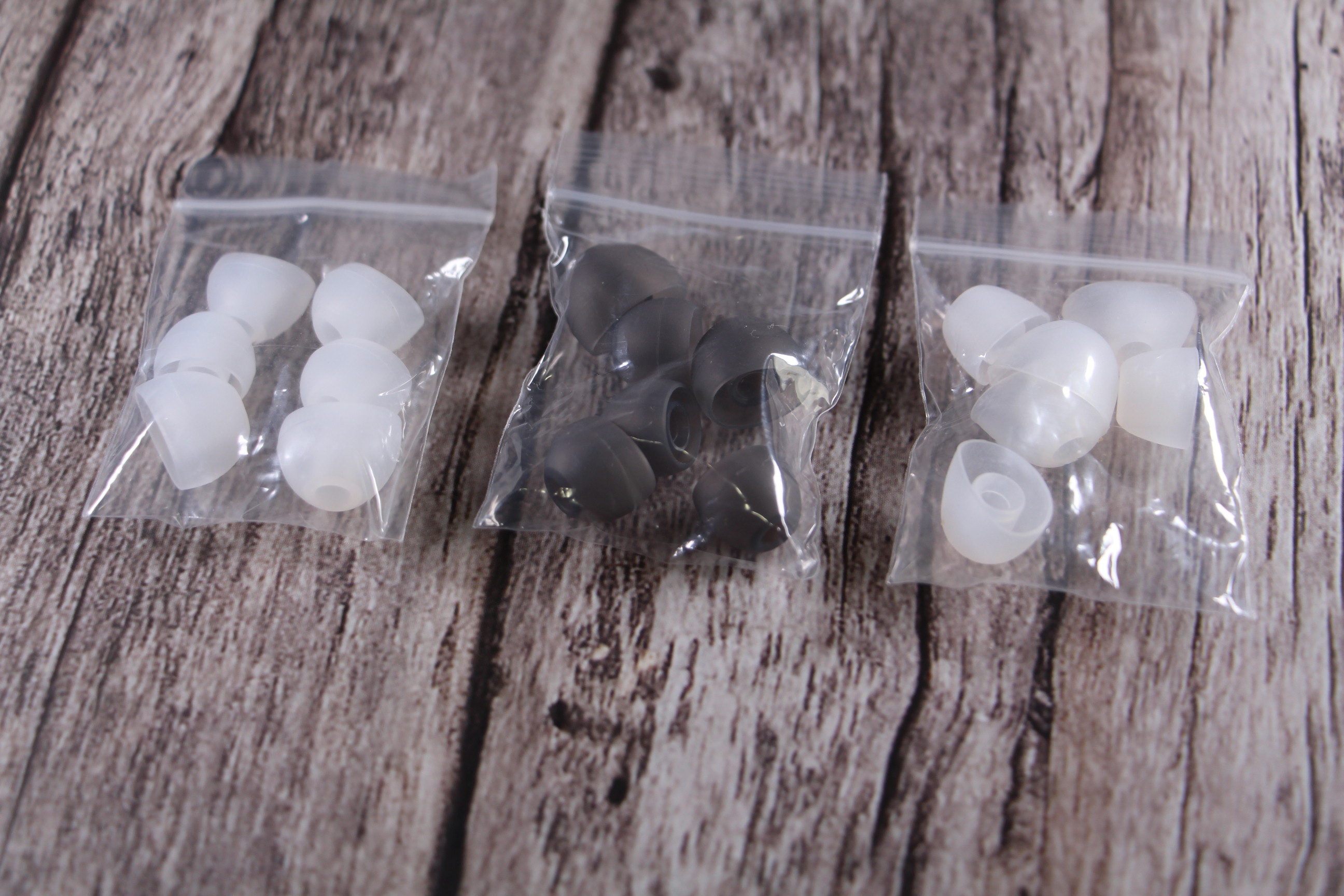
The cable deserves a separate paragraph, as it is a beautiful piece in pink (or purple, or lilac, I don't know, I'm not good with colors) and silver, which creates a great contrast. It is a thick cable, made of oxygen-free aluminum foil, and features a chrome-plated connector, splitter and chin slider. The connections are 3.5 mm for the source and QDC 0.78 mm for the phone. By the way, the QDC connector made of low quality plastic ends up clashing with the set.


Back to the IEMs, it has the same body as the BL-05, that is, it is a very small piece, with a shape that resembles Shure ones. It has a predominant lilac (or purple) color, with gold details on the faceplate. There is also the Z Reviews logo and the name of the phone written on both sides. The nozzle is short and narrow, with a metal grid at the tip.



Its sound is generated by a 10 mm dynamic driver, whose diaphragm material is not detailed by BLON.
Comfort
Here's the point that almost made me apologize to Linsoul and skip Jojo's review altogether: the fit. And I must say that it's the fault of the tips offered by the brand, which are totally incompatible with big ears like mine.
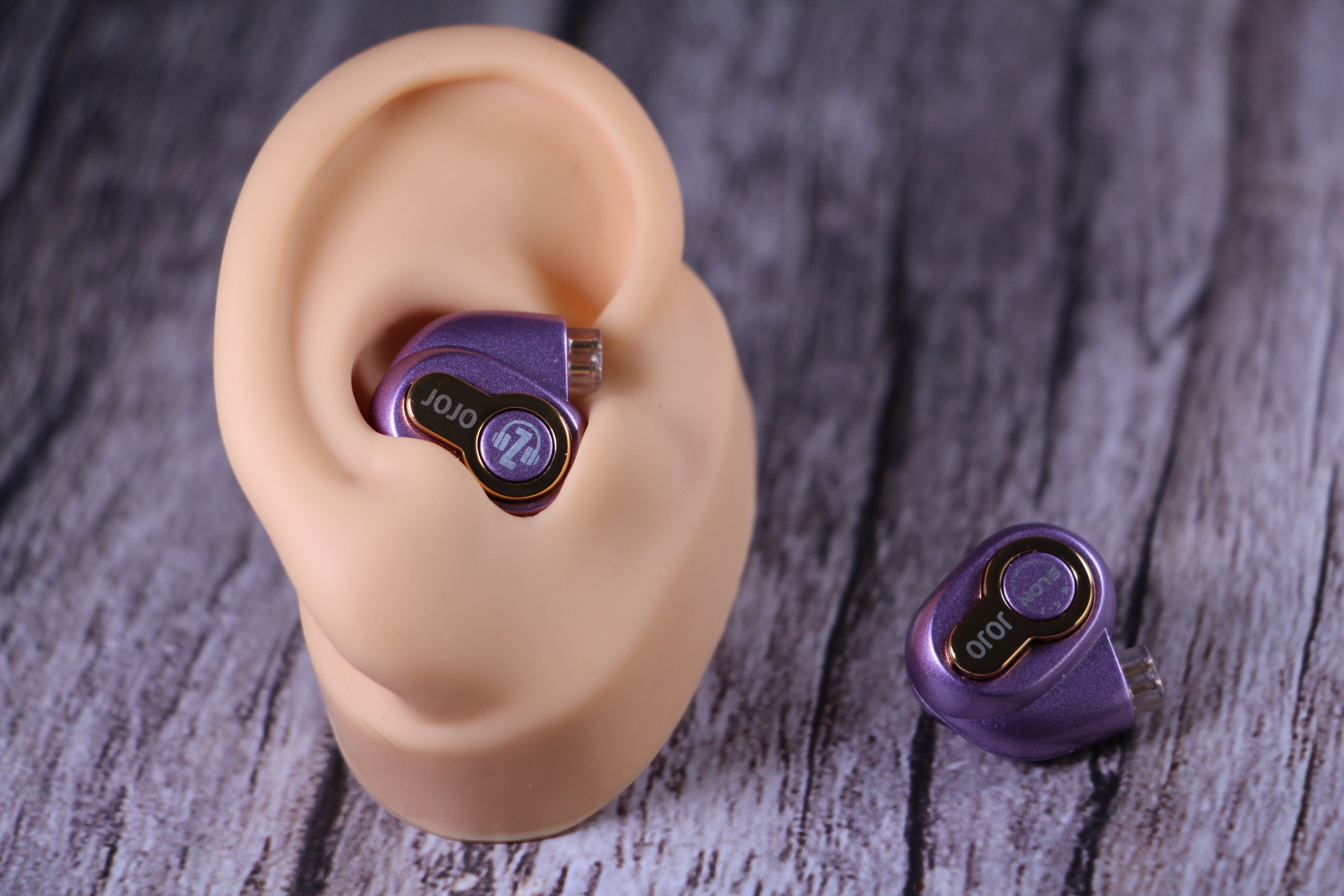
The short nozzle and curvature of the cable fitting exacerbate the problem, and none of my tips worked with it, and I tried with Xelastec, Softears UC Tips, Tanchjim T-EAR Tips and Moondrop Spring Tips, without any success. With either of them, the sound was thin and the fit in the ears was painful.
In the Zeos video , he also complained about the fit, and said he used the Dunu S&S Tips, tips that I hate and vice versa, so I didn't even get to test them. He also mentioned the Spinfit CP100, and I tried those, but my skin doesn't like the Spinfit material, and as a result Jojo was left on the sidelines, until salvation arrived.


My Project SKY #001 (Feliphe Espíldora's phone) came with the magnificent Spinfit W1, and when using the W1 size L with Jojo, the fit was perfect! They have the ideal length and width to provide a good seal, without forcing the cable to press against the ear cartilage. In other words, with the right tips, the Jojo is a comfortable headset, which does not generate any pressure on the ear canal and provides an excellent seal.
Musical Sound
I tried the phone on different sources, which are: iPhone SE (my “DAP”), Dell Laptop, Apple Dongle, Truthear Shio, iFi Uno, Cayin RU6, Topping G5 and Topping DX3 Pro+.
By the way, I invite you to check out my headphone test playlist on Spotify . This is a dynamic playlist, and the songs can change at any time, but they will always follow the purpose of presenting all the points I mention in my musical evaluation of the headphones.
Regarding sources, Jojo plays well on any device, and takes on the characteristics of each source well (like the heat of the RU6, for example), but does not scale significantly with more refined sources.
- Bass: Level 4.5/5, Extension 5/5, Speed 3/5, Texture 4/5
Speaking first about the sub-bass, the Jojo is cavernous! He brings the most earthly beats of “What It Is” and throws them in your face, and you don't even need to listen to them at high volumes to do so. There are punches and more sub-bass punches, but these are only felt when there is a correct seal. With the wrong tips, the subs disappear.
In terms of texture, Jojo is almost ideal in most scenarios, from the bass line of “Como Tudo Deve Ser - CBJR” to a “Drum Solo” by Gojira. I just didn't give full score for this aspect because I missed more present and palpable cellos. Somehow they sound slightly thinner than I would expect from them.
And I confess that I was afraid of listening to “Valhalla” with Jojo and feeling the same struggling as the Z300, but the situation is very different. Ok, these transducers may not be as fast as some LCP or Beryllium ones, but they still perform beautifully, and struggles are very rare and/or imperceptible.
- Midrange: Level 3/5, Presence 3/5, Clarity 3/5, Voices 3/5, Transparency 2/5
It's natural for a V tuning to bring less emphasis to the midrange, and this occurs on the Jojo. However, this does not mean that the mids are obfuscated, after all there is presence and clarity in the mids, both of voices and instruments in general, and I just missed a little more transparency in tracks like “Cafe 1930”, even though the experience is good overall.
The male voices bring a good dose of warmth and intensity, and more velvety female voices like Buika also sound very pleasant. On the other hand, I noticed sweeter voices like Ariana Grande's, slightly shrill, a little less soft and more burning than they should be.
Sopranos like Louane don't go over the top on the highest notes, and I didn't notice more sibilance than expected on tracks like Evanescence's “Hello”. And a point that deserves to be highlighted is the intensity of the guitar solo of “This I Love” on this phone. It was really unexpected, and very pleasant!
- Treble: Level 3/5, Brightness 2/5, Airiness 3/5, Extension 3/5, Timbre 3/5
In terms of treble, the Jojo delivers a little less than I expected. The brightness does not stand out, and the splash of the dishes of a “September in Montreal” is timid, lacking life, lacking intensity. The same lack of prominence is found in the triangles on Lucy Alves' tracks.
In contrast, the highest notes of Golden Salt's violin in “Nothing Else Matters” sound with a lot of air between the notes, and the extension surprised me, as I thought the IEM would die sooner. The tone of the violins is very beautiful, at the same time that the timbre of the cymbals disappointed me a little.
Jojo's treble sound is very curious, not to say chaotic. And I must say that I like this unpredictability, because when you combine these elements in “Barbados”, for example, the end result is very interesting.
- Technicalities: Sound Stage 4/5, Image 3/5, Layering 2/5, Separation 2/5, Details 3/5, Resolution 3/5
Zeos' intention with the Jojo tuning was to create a headphone with a “huge” sound, in his words. If what he wanted was a wide stage, he got it. There is a considerable amplitude of stage on this phone, although it is a more laterally extended stage than exactly a three-dimensional stage.
On the other hand, it is a huge stage whose image is somewhat chaotic, with the feeling that there are elements overlapping all the time, like in “Ella Baila Sola”, for example. And the layering is slightly weak, without a well-defined layered presentation. Thus, equally weak is the instrument separation, where tracks like BABYMETAL's “Brand New Day” can make Jojo sweat to keep from messing everything up.
The level of detail is good, and some microdetails can be noticed here or there. Finally, its resolution is generally adequate for the price range, without honorable mention, but without demerit.
Sound in Games
For battle royale games, Jojo performed well in PUBG. It delivers the location and distance of emitters in the horizontal spectrum well, even when they are diagonal, but fails to deliver a good perception of opponents on the vertical axis. Rating 3/5.
In FPS games, such as CS2 (without changing the sound settings), Jojo delivers a less than ideal experience, as its bass tends to be very prominent, and in more intense exchanges, it is difficult to accurately distinguish the steps. of opponents. Furthermore, bass impairs the interpretation of what is said by companions on VOIP. Rating 1.5/5.
In casual games, such as Genshin Impact , there is a considerable level of immersion, with a high level of naturalness in the sounds in the world, although there may be some excesses in the sound of waterfalls, or birdsong, for example. However, it is a pleasant headset for games of this type. Rating 4.5/5.
And for simulation games, Jojo delivers excellent engine sound in Forza Horizon 5 , for example. The intensity of the sounds is powerful, very natural, and there is no other note than a 5/5 for it.
Sound in Films/Series, Podcasts and Productivity
Jojo's tuning is intense, and matches well with films or series that follow the same characteristic, like “Django Unchained”, for example. However, in science fiction films like any “Star Wars”, some sounds can sound too much and be a bit annoying.
For those who need an earphone to focus on voices, the Jojo tends to highlight lower voices, and when the recording quality is poor, the voices can sound a little muddy or even incomprehensible in some situations.
Conclusion
After the period I spent testing the BLON x Z Reviews Jojo, the best adjective I have for it's sound is “comfortable”. And, not by chance, I can use this adjective for all the BLON that I have tested to date: BL-03 , BL-07 , Z300 and now the Jojo.
In fact, the Jojo is a nice headphone to listen to, and works very well playing background music. I worked almost a whole day with it in my ears and I didn't even remember that they were there, for two reasons: the first is that they are small and extremely comfortable IEMs (with the right tips), and the second reason is that their sound seems to be coming from speakers in my office, and not exactly the headphones.
The big problem is that this Jojo comfort may not be achieved when taking the headset out of the box. As I mentioned in the review, if the Spinfit W1 hadn't arrived to save the day, the Jojo would still be abandoned on my shelf, because the way the fit was before, it was impossible to listen to it for more than ten minutes.
Ok, once the fit is good, is the Jojo worth buying? The answer is a resounding “no”. “What do you mean, Dosec?”, you might ask me, after all, Jojo is a cool, different, beautiful earphone, and besides, Zeos is a good person reviewer. Right? Right.
And I would tell you that this phone costs 49 USD. In this price range, the Simgot EW200 costs less and reigns supreme (at least until now), although it is always in the shadow of the Truthear Zero:Red, which with a discount of a measly 5 USD becomes the true king of this budget category.
Unless you are a big fan of BLON or Zeos, my tip is simple: save your money. Big hug!
dosec
New Head-Fier
Pros: - Bass with great texture.
- Excellent midrange.
- Correct treble.
- Nice soundstage and image.
- Excellent resolution.
- Excellent midrange.
- Correct treble.
- Nice soundstage and image.
- Excellent resolution.
Cons: - None for the price.
Presentation

Hello, friends of AvaliaSom. The one I bring you is the Simgot EW200 Maze, an IEM that was kindly sent to me by Simgot itself for review, without any commitment or obligation to speak highly of the phone, just providing my opinions about it. Xiè xiè, Simgot.
This headset starts at 39.99 USD (or 46.79 USD applying the 17% ICMS tax in Brazil).
NOTE: Affiliate links do not influence my feedback on products.
The evolution of the chi-fi market in 2023 was remarkable, and among all the brands, some stood out a lot, and Simgot is one of them. Previously little known and with a small portfolio (but notable, like the EM2 Roltion which is part of my collection), it decided to take over most price ranges by storm, including the bottom of the table, with beautiful headphones like the EW100P or the EA500 hype master.


And the EW200 Maze, which from now on will just be called EW200, occupies the gap between the two aforementioned headphones. Its unboxing is honest, with a box of compact dimensions but not quite a cigarette box like the one seen on other headphones. On the front of the box, the name of the IEM and, on the back, details about the said product, including a graph showing its adherence to the 2016 Harman curve.
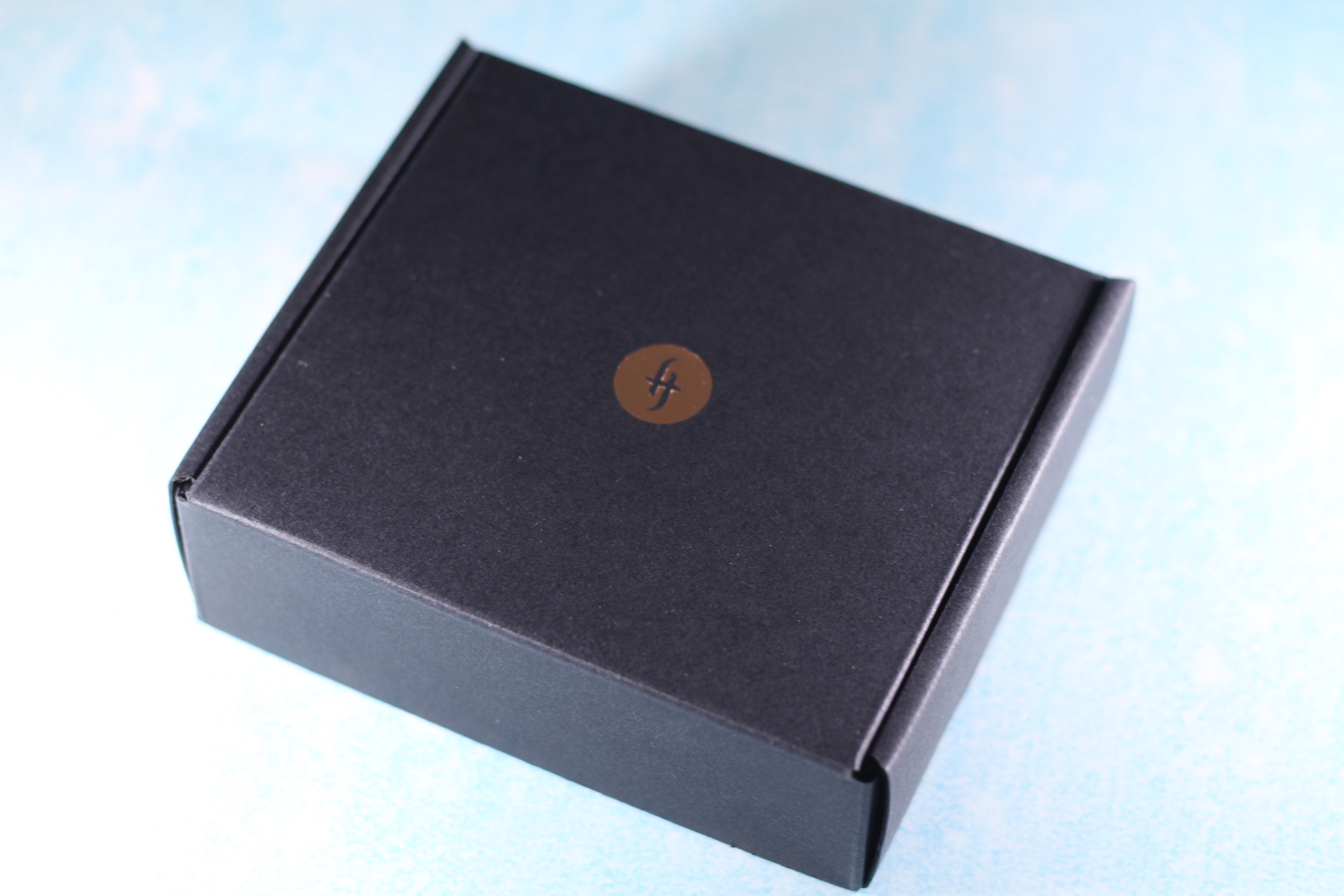

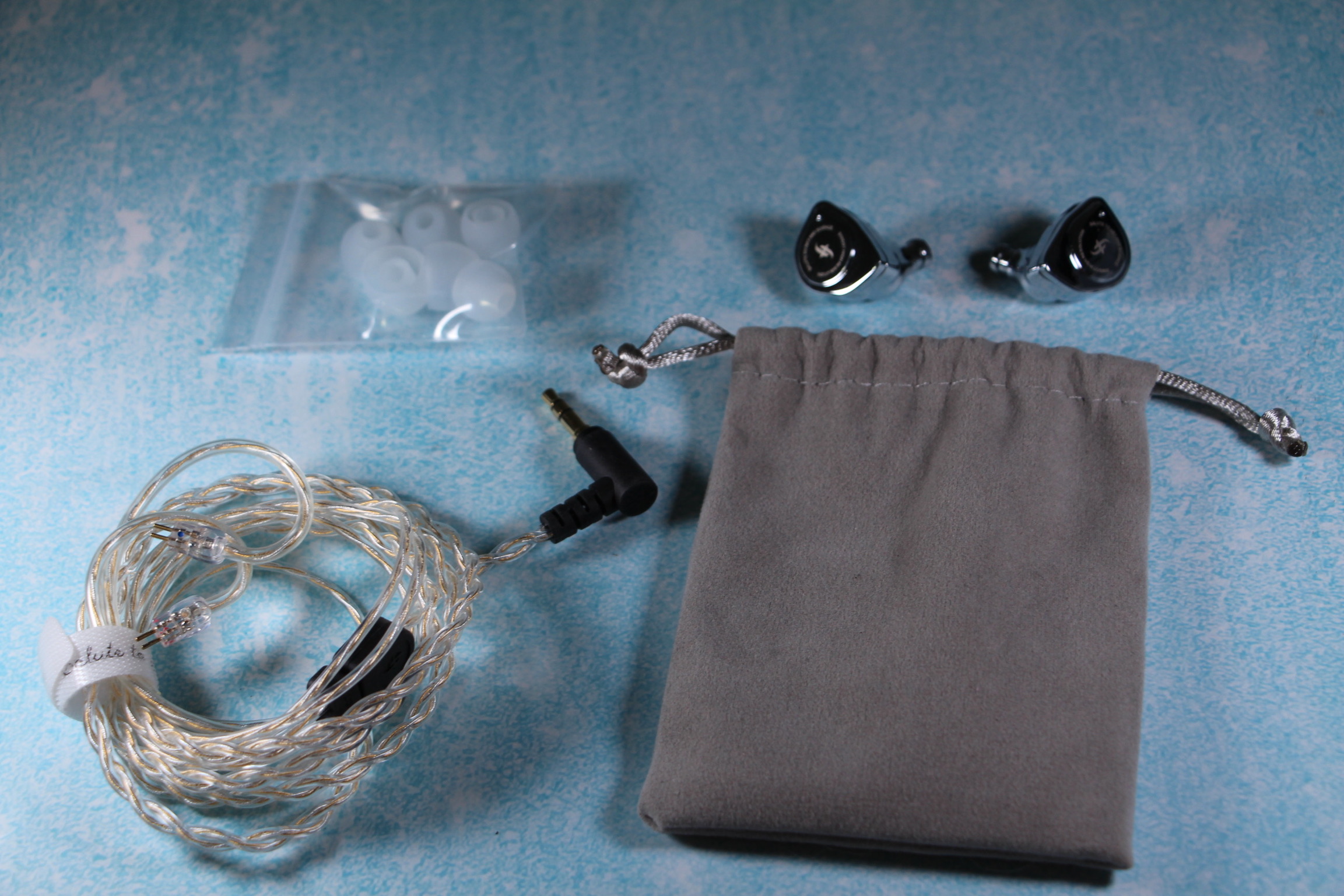
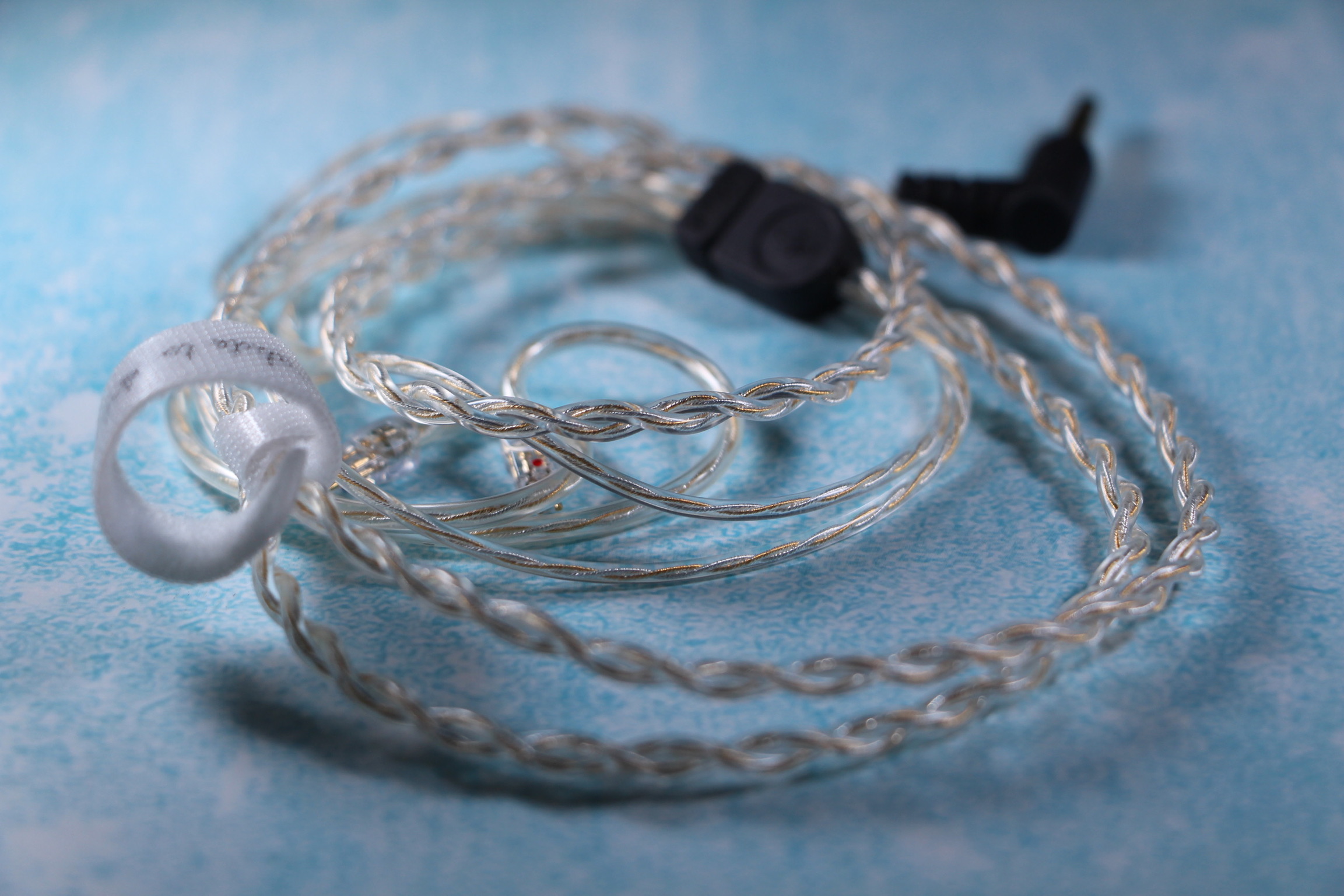
The inner box is simpler, and only features the brand logo. Once opened, it reveals the earphone cradle and a small box for the tips that says “Accessory”. The tips are generic silicone, made up of just one kit. And there is also a larger box, which houses the fabric bag and the cable, which in turn is a beautiful discreet cable, made of silver-plated OFC (oxygen-free copper), with chin slider and plastic splitter, connector in Plastic L with 3.5 mm pin for the source and 0.78 mm pins for the headphones. A velcro strip with the words “Salute to Art and Science” accompanies the handle, and this phrase is also seen on other Simgot models.
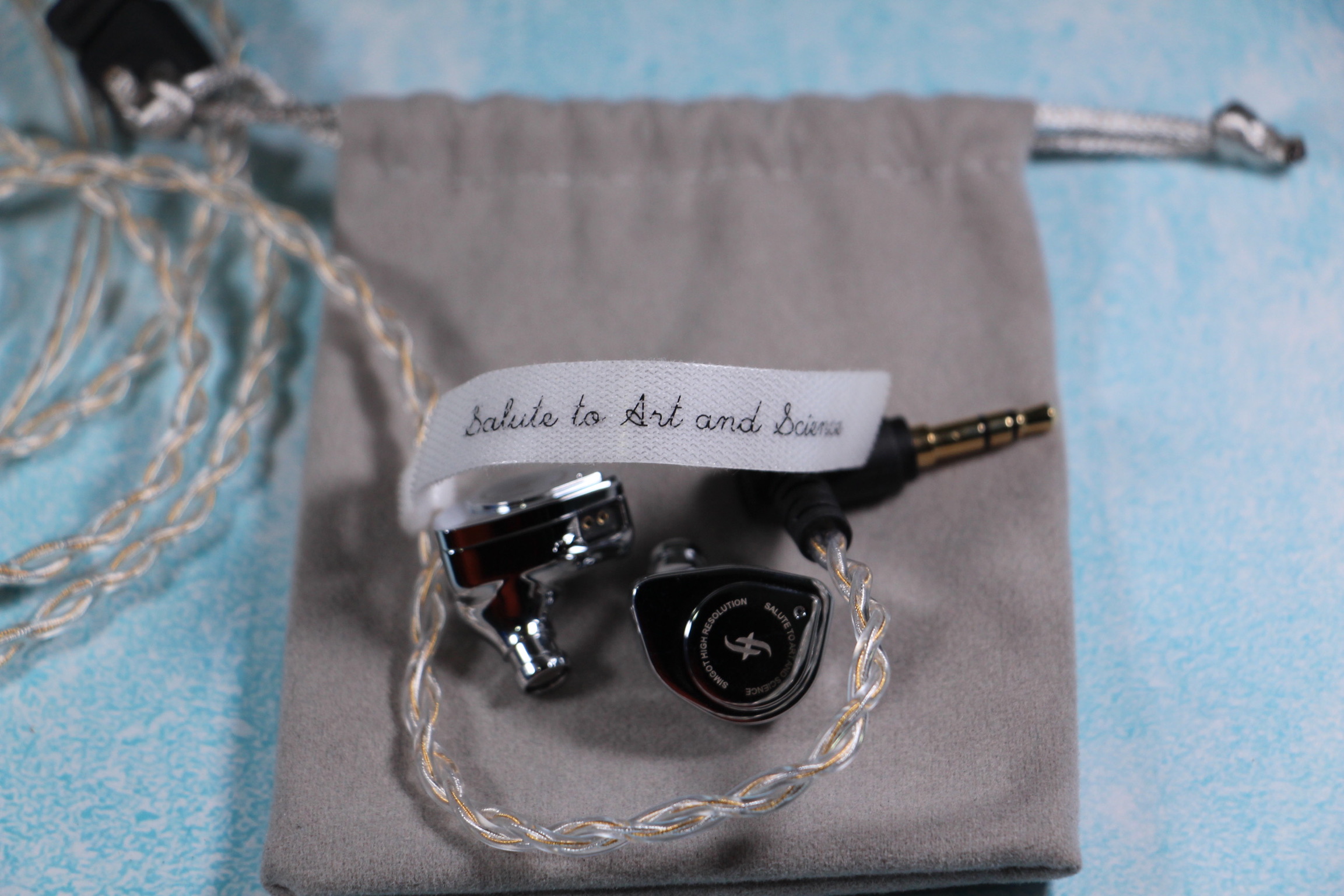
The earphone has a body identical to the body of the EW100P, but is made entirely of metal and mirrored like the EA500. On the faceplate there is the brand logo, with the words “Simgot High Resolution” and the previously mentioned greeting. The metal nozzle is inserted into the shell, and features a very restrictive filter, also made of metal. Overall, it's a beautiful phone, and its mirrored look, despite being a fingerprint magnet, brings a very refined look to the EW200.
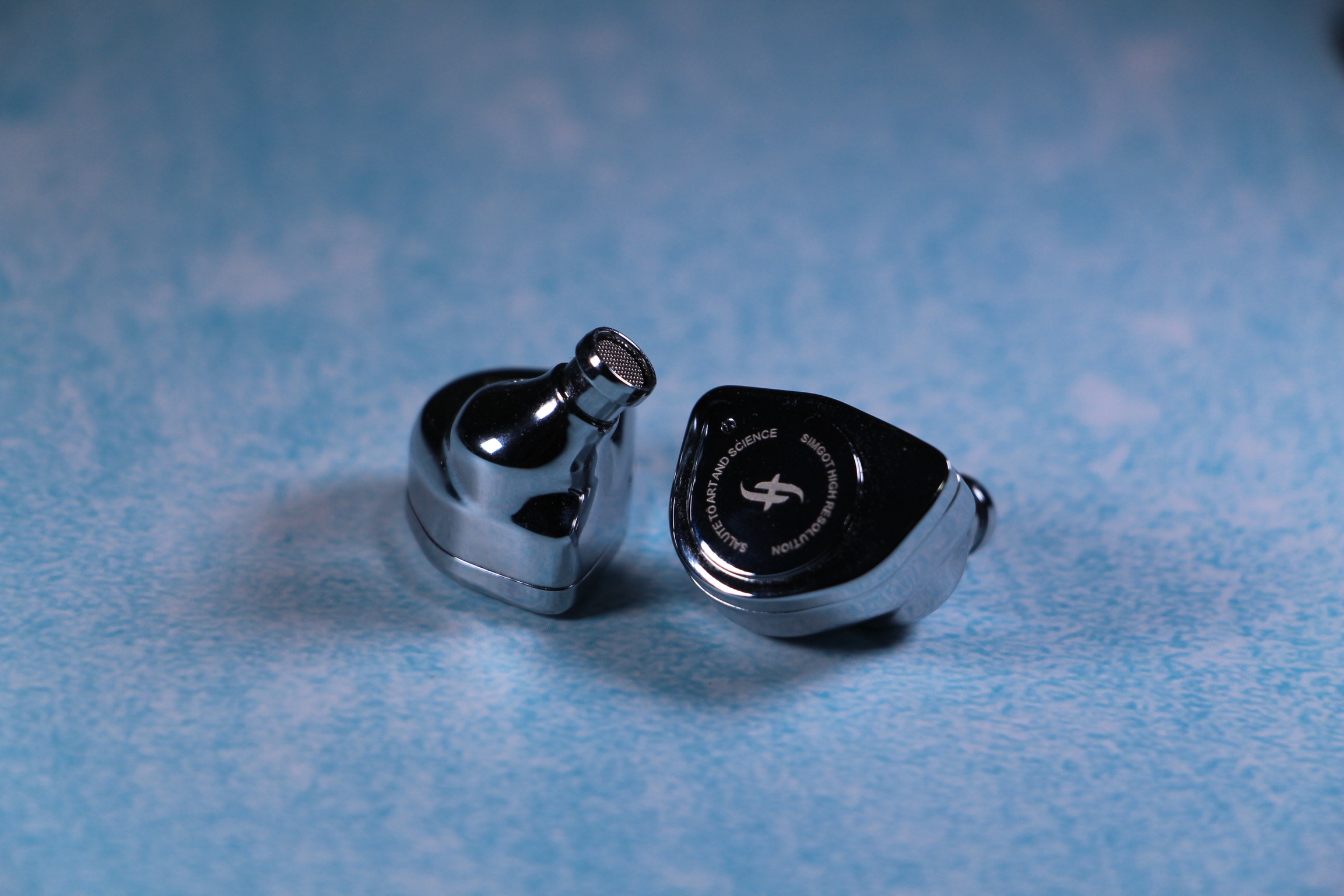


Its sound is generated by a 10 mm dynamic driver with an SCP diaphragm, a special composite polymer, which Simgot claims combines the best qualities of DLC (diamond-like carbon) and LCP (liquid-crystal polymer) diaphragms.
Comfort
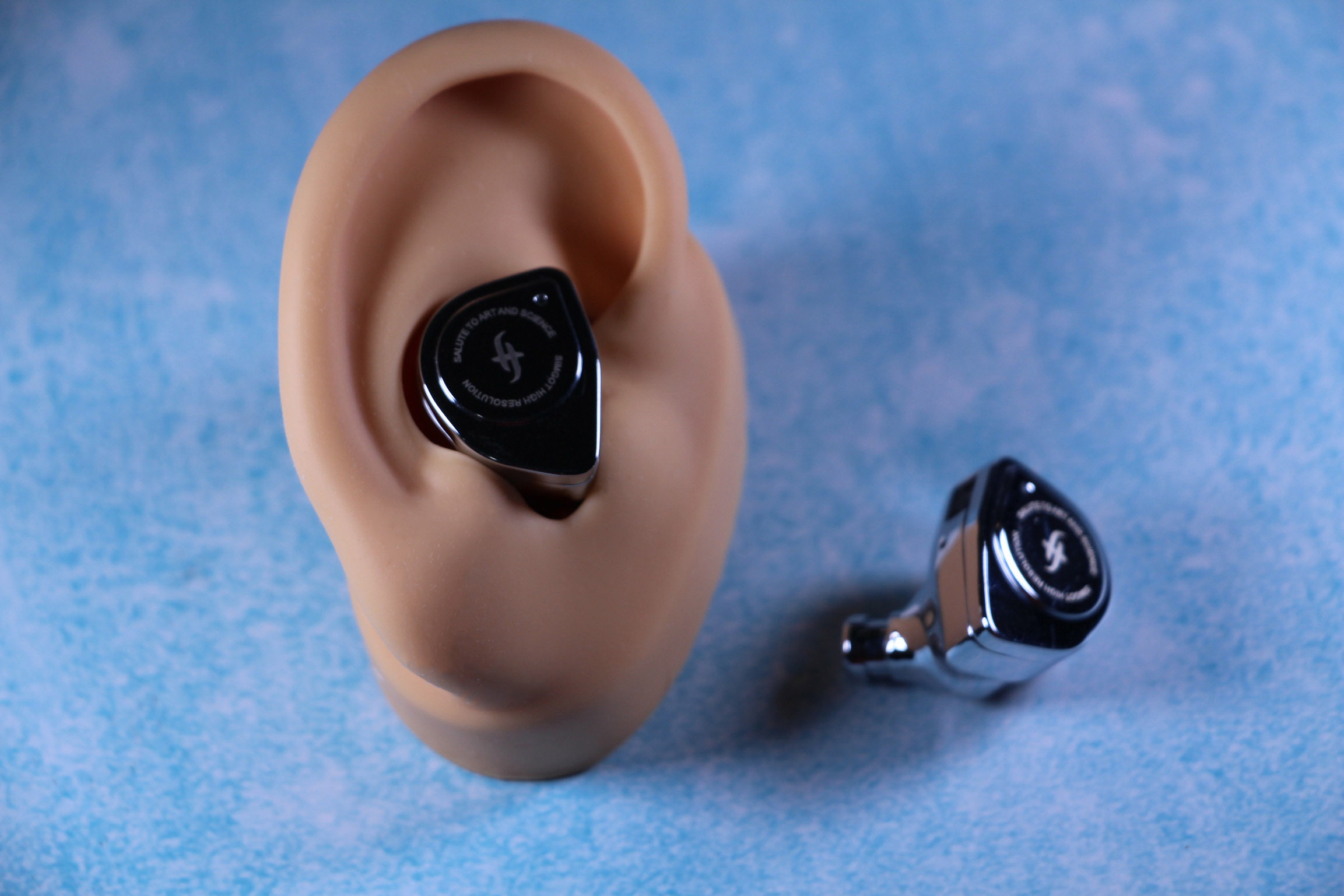
To my ears, the EW200 was extremely comfortable. Its body has some sharp corners, which didn't bother me at all, and even with the relatively short nozzle that provides a shallow insertion, the seal with the L tips was excellent for me, and without any pressure on the ear canal.
Musical Sound
I tried the phone on different sources, which are: iPhone SE (my “DAP”), Dell Laptop, Apple Dongle, Truthear Shio, iFi Uno, Cayin RU6, Topping G5 and ToppingDX3 Pro+.
By the way, I invite you to check out my headphone test playlist on Spotify. This is a dynamic playlist, and the songs can change at any time, but they will always follow the purpose of presenting all the points I mention in my musical evaluation of the headphones.
Regarding sources, the EW200 plays easily on any source, and scales according to the particularities of each one.
By the way, they are also great bass for the bass line or the drums of a rock song, and the track “When a Blind Man Cries” demonstrates this well, allowing us to feel the bass drum in a very pleasant way. Paraphrasing my friend Alphaloud, I wouldn't say they're sirloin bass, but perhaps wagyu entrecôte bass, intense but refined.
Furthermore, the EW200 further demonstrates the quality of its project in intense songs, without any hassle when listening to “Steel Meets Steel” or similar, as well as having enough speed to play “Through The Fire And Flames” in the best possible way. Very good indeed!
The presence of voices is very good, whether male or female voices, and duets like “Meu Fado Meu” sound passionate on this earphone. And speaking of passionate, this is the best adjective to describe the sound of mandolins, Portuguese guitars or similar in this headphone, which sound with a beautiful timbre and a lot of clarity. Flutes are also enchanting, by the way.
I confess that I was afraid that some sibilance would appear listening to Jill Barber tracks, but the EW200 was far from that, and not even “Wuthering Heights” is capable of going over the top, denoting how careful Simgot was when tuning this earphone. And before talking about the treble, just one more honorable mention to the way this headphone plays the guitar solo in “Mal Necessário”. What a show!
Violin tonality is another fantastic quality of the EW200, and every Lindsey Stirling track translated into a goofy smile on my face. The airness is remarkable, and the extension is also very good, even without relying on a BA to do this work.
The treble tone is also very pleasant, and even a treblehead like me can be enchanted by the earphone's competence in the higher frequencies of the spectrum.
The image formed is quite charming in “In Love With You” , allowing you to identify very well the location of the sounds in the spectrum. Instrument separation is also good, and the resolution of this earphone easily fits in with the resolution seen at the $100 range. He is an exponent, without a doubt.
As there are no miracles, there are two points where the EW200 is just average: in layering and in the level of details. I make it clear that it's not bad, it's just the layering you'd expect from a headset in this price range, while the level of detail is restricted to macro details, most of the time.
Sound in Games
For battle royale games, the EW200 proves to be very good. In the horizontal spectrum, it is extremely accurate in delivering the position of sound emitters, and reminded me of the excellent Jade Audio EA1 in this regard. However, Simgot misses the 10/10 by not being as accurate in locating opponents on the vertical axis. Still, he's still great.
In FPS games, like CS2 ( without changing the sound settings ), the EW200 is perfect! Its tuning really brings out the sound of footsteps, and mapping the sound of opponents moving around the map appears very natural from the first match. Here he takes the 10/10 without a shadow of a doubt.
In casual games, such as Honkai Star Rail, the EW200 delivers a very natural sound, in addition to excellent three-dimensionality, which conveys a great feeling of immersion in a large and living world.
In the simulation games, I missed a little more punch in the bass, although the texture is excellent for hearing the sound of engines in a Forza Motorsport. The sound of what happens around the car is perfectly appreciable.
Sound in Films, Series and Podcasts
The EW200's tuning offers an interesting ability to pair well with any film genre. Lots of dialogue? He does well. Passionate soundtrack? It's the EW200 beach. Shot, beating and bomb? It is the home of the EW200. With that in mind, I recommend anything from a “Donnie Darko” to a “John Wick 4” with this IEM.
And I also recommend the EW200 for anyone looking for an earphone for studying or working, given that its tuning makes voices always evident, even in the case of poor recordings or when the interlocutor's voice is very low.
Conclusion
What a spectacle the EW200 is! I have rarely experienced a relatively cheap headset that was so competent in practically everything. In times of complicated imports in Brazil, finding such a good headset under 50 USD is practically a gift from heaven.
And, by the way, it became the best headphone under 50 USD for me, displacing the Truthear Zero, which has reigned supreme in this position since forever. And I'll go further, maybe it's closer to the Truthear Hexa (my favorite up to 100 USD) than my heart would be able to bear.
With the potential to be an allrounder, the EW200 works well in any musical style, never overdoing itself and always delivering plenty of tonal and technical quality. In addition to these details, it is a beautiful and comfortable headset, with an honest kit of tips, cable and case.
One thing is certain: Simgot knows what it's doing. I hope to have the opportunity to listen to their more expensive headphones in the near future, but from everything I've heard from them so far, they've been just hits. And I definitely recomment this IEM to practically everyone, except bassheads or those who prefer thinner bass. Long live the Simgot EW200!
Big hug!

Hello, friends of AvaliaSom. The one I bring you is the Simgot EW200 Maze, an IEM that was kindly sent to me by Simgot itself for review, without any commitment or obligation to speak highly of the phone, just providing my opinions about it. Xiè xiè, Simgot.
This headset starts at 39.99 USD (or 46.79 USD applying the 17% ICMS tax in Brazil).
NOTE: Affiliate links do not influence my feedback on products.
The evolution of the chi-fi market in 2023 was remarkable, and among all the brands, some stood out a lot, and Simgot is one of them. Previously little known and with a small portfolio (but notable, like the EM2 Roltion which is part of my collection), it decided to take over most price ranges by storm, including the bottom of the table, with beautiful headphones like the EW100P or the EA500 hype master.


And the EW200 Maze, which from now on will just be called EW200, occupies the gap between the two aforementioned headphones. Its unboxing is honest, with a box of compact dimensions but not quite a cigarette box like the one seen on other headphones. On the front of the box, the name of the IEM and, on the back, details about the said product, including a graph showing its adherence to the 2016 Harman curve.




The inner box is simpler, and only features the brand logo. Once opened, it reveals the earphone cradle and a small box for the tips that says “Accessory”. The tips are generic silicone, made up of just one kit. And there is also a larger box, which houses the fabric bag and the cable, which in turn is a beautiful discreet cable, made of silver-plated OFC (oxygen-free copper), with chin slider and plastic splitter, connector in Plastic L with 3.5 mm pin for the source and 0.78 mm pins for the headphones. A velcro strip with the words “Salute to Art and Science” accompanies the handle, and this phrase is also seen on other Simgot models.

The earphone has a body identical to the body of the EW100P, but is made entirely of metal and mirrored like the EA500. On the faceplate there is the brand logo, with the words “Simgot High Resolution” and the previously mentioned greeting. The metal nozzle is inserted into the shell, and features a very restrictive filter, also made of metal. Overall, it's a beautiful phone, and its mirrored look, despite being a fingerprint magnet, brings a very refined look to the EW200.



Its sound is generated by a 10 mm dynamic driver with an SCP diaphragm, a special composite polymer, which Simgot claims combines the best qualities of DLC (diamond-like carbon) and LCP (liquid-crystal polymer) diaphragms.
Comfort

To my ears, the EW200 was extremely comfortable. Its body has some sharp corners, which didn't bother me at all, and even with the relatively short nozzle that provides a shallow insertion, the seal with the L tips was excellent for me, and without any pressure on the ear canal.
Musical Sound
I tried the phone on different sources, which are: iPhone SE (my “DAP”), Dell Laptop, Apple Dongle, Truthear Shio, iFi Uno, Cayin RU6, Topping G5 and ToppingDX3 Pro+.
By the way, I invite you to check out my headphone test playlist on Spotify. This is a dynamic playlist, and the songs can change at any time, but they will always follow the purpose of presenting all the points I mention in my musical evaluation of the headphones.
Regarding sources, the EW200 plays easily on any source, and scales according to the particularities of each one.
- Bass: Level 4/5, Extension 4/5, Speed 5/5, Texture 5/5
By the way, they are also great bass for the bass line or the drums of a rock song, and the track “When a Blind Man Cries” demonstrates this well, allowing us to feel the bass drum in a very pleasant way. Paraphrasing my friend Alphaloud, I wouldn't say they're sirloin bass, but perhaps wagyu entrecôte bass, intense but refined.
Furthermore, the EW200 further demonstrates the quality of its project in intense songs, without any hassle when listening to “Steel Meets Steel” or similar, as well as having enough speed to play “Through The Fire And Flames” in the best possible way. Very good indeed!
- Midrange: Level 3/5, Presence 4/5, Clarity 4/5, Voices 5/5
The presence of voices is very good, whether male or female voices, and duets like “Meu Fado Meu” sound passionate on this earphone. And speaking of passionate, this is the best adjective to describe the sound of mandolins, Portuguese guitars or similar in this headphone, which sound with a beautiful timbre and a lot of clarity. Flutes are also enchanting, by the way.
I confess that I was afraid that some sibilance would appear listening to Jill Barber tracks, but the EW200 was far from that, and not even “Wuthering Heights” is capable of going over the top, denoting how careful Simgot was when tuning this earphone. And before talking about the treble, just one more honorable mention to the way this headphone plays the guitar solo in “Mal Necessário”. What a show!
- Treble: Level 4/5, Brightness 5/5, Airiness 4/5, Extension 4/5
Violin tonality is another fantastic quality of the EW200, and every Lindsey Stirling track translated into a goofy smile on my face. The airness is remarkable, and the extension is also very good, even without relying on a BA to do this work.
The treble tone is also very pleasant, and even a treblehead like me can be enchanted by the earphone's competence in the higher frequencies of the spectrum.
- Technicalities: Sound Stage 4/5, Image 5/5, Layering 3/5, Separation 4/5, Details 3/5, Resolution 5/5
The image formed is quite charming in “In Love With You” , allowing you to identify very well the location of the sounds in the spectrum. Instrument separation is also good, and the resolution of this earphone easily fits in with the resolution seen at the $100 range. He is an exponent, without a doubt.
As there are no miracles, there are two points where the EW200 is just average: in layering and in the level of details. I make it clear that it's not bad, it's just the layering you'd expect from a headset in this price range, while the level of detail is restricted to macro details, most of the time.
Sound in Games
For battle royale games, the EW200 proves to be very good. In the horizontal spectrum, it is extremely accurate in delivering the position of sound emitters, and reminded me of the excellent Jade Audio EA1 in this regard. However, Simgot misses the 10/10 by not being as accurate in locating opponents on the vertical axis. Still, he's still great.
In FPS games, like CS2 ( without changing the sound settings ), the EW200 is perfect! Its tuning really brings out the sound of footsteps, and mapping the sound of opponents moving around the map appears very natural from the first match. Here he takes the 10/10 without a shadow of a doubt.
In casual games, such as Honkai Star Rail, the EW200 delivers a very natural sound, in addition to excellent three-dimensionality, which conveys a great feeling of immersion in a large and living world.
In the simulation games, I missed a little more punch in the bass, although the texture is excellent for hearing the sound of engines in a Forza Motorsport. The sound of what happens around the car is perfectly appreciable.
Sound in Films, Series and Podcasts
The EW200's tuning offers an interesting ability to pair well with any film genre. Lots of dialogue? He does well. Passionate soundtrack? It's the EW200 beach. Shot, beating and bomb? It is the home of the EW200. With that in mind, I recommend anything from a “Donnie Darko” to a “John Wick 4” with this IEM.
And I also recommend the EW200 for anyone looking for an earphone for studying or working, given that its tuning makes voices always evident, even in the case of poor recordings or when the interlocutor's voice is very low.
Conclusion
What a spectacle the EW200 is! I have rarely experienced a relatively cheap headset that was so competent in practically everything. In times of complicated imports in Brazil, finding such a good headset under 50 USD is practically a gift from heaven.
And, by the way, it became the best headphone under 50 USD for me, displacing the Truthear Zero, which has reigned supreme in this position since forever. And I'll go further, maybe it's closer to the Truthear Hexa (my favorite up to 100 USD) than my heart would be able to bear.
With the potential to be an allrounder, the EW200 works well in any musical style, never overdoing itself and always delivering plenty of tonal and technical quality. In addition to these details, it is a beautiful and comfortable headset, with an honest kit of tips, cable and case.
One thing is certain: Simgot knows what it's doing. I hope to have the opportunity to listen to their more expensive headphones in the near future, but from everything I've heard from them so far, they've been just hits. And I definitely recomment this IEM to practically everyone, except bassheads or those who prefer thinner bass. Long live the Simgot EW200!
Big hug!
dosec
New Head-Fier
Pros: - Perfect for background music.
- Bass, BASS, B A S S!
- Nice fit and nice body.
- Warm mids.
- Bass, BASS, B A S S!
- Nice fit and nice body.
- Warm mids.
Cons: - Dark and/or muddy most of the times.
- Not good on technicalities.
- Not good for most of the games.
- Not good on technicalities.
- Not good for most of the games.
Presentation
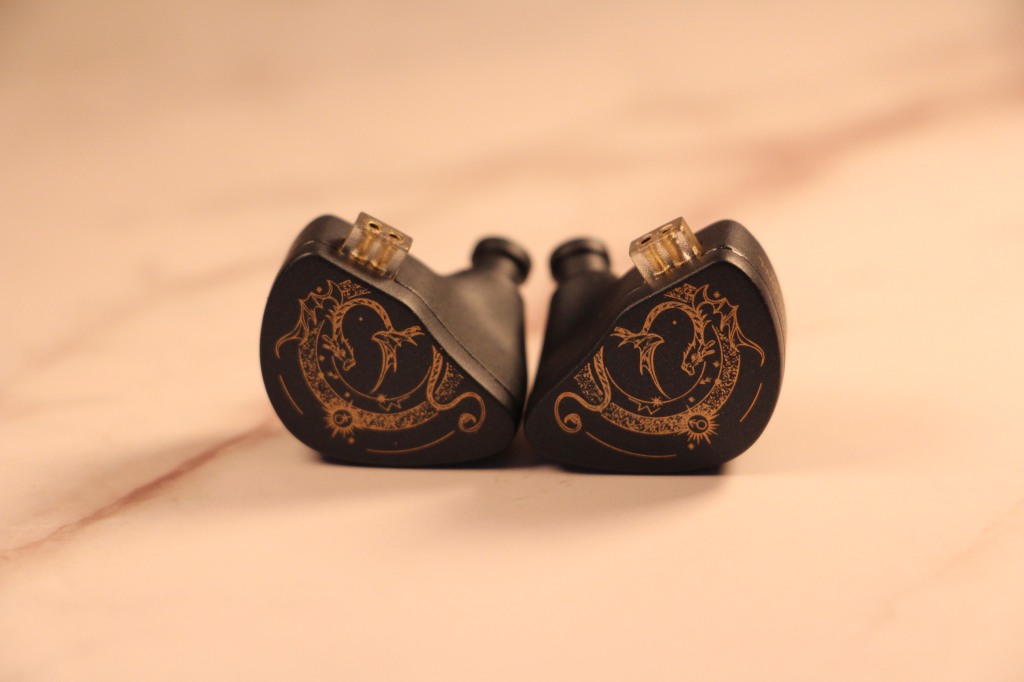
Hello, friends. The one I bring you is the BLON Z300, a phone that was kindly sent to me by Linsoul for review, without any commitment or obligation to speak highly of the phone, just providing my opinions about it. Xiè xiè, Linsoul.
Note: This review was originally posted at avaliasom.com, my website.
Belief, Let Music Burn, Oppoty PT2, Never Give UP. Oppoty & Driams Pt 2. The errors in the BL03 box , which would have had everything to become a laughing stock, ended up becoming the hallmark of BLON's return to the market. By the way, BLON is the acronym formed by the phrase at the beginning of this paragraph.


The BLON Z300 was tuned by HBB , and as is inherent to Hawaiian tuning , this is a headphone with a lot of bass weight, but we'll talk about that later. First let's focus on the unboxing, which although it comes in a discreet cigarette box, it features a very interesting dragon on the front, and details about the phone on the back.


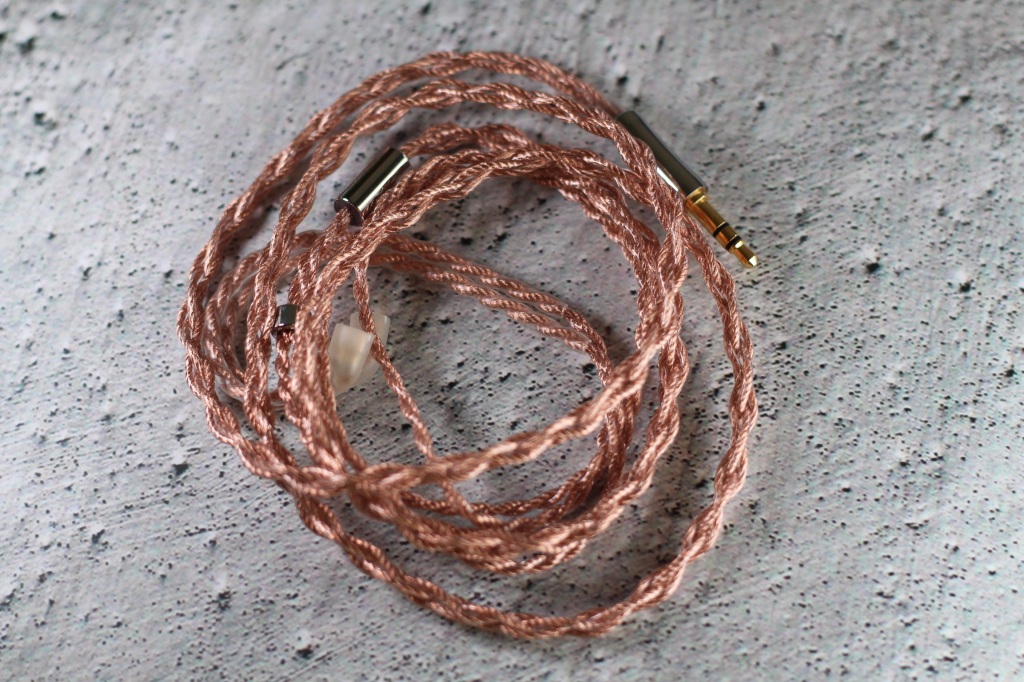
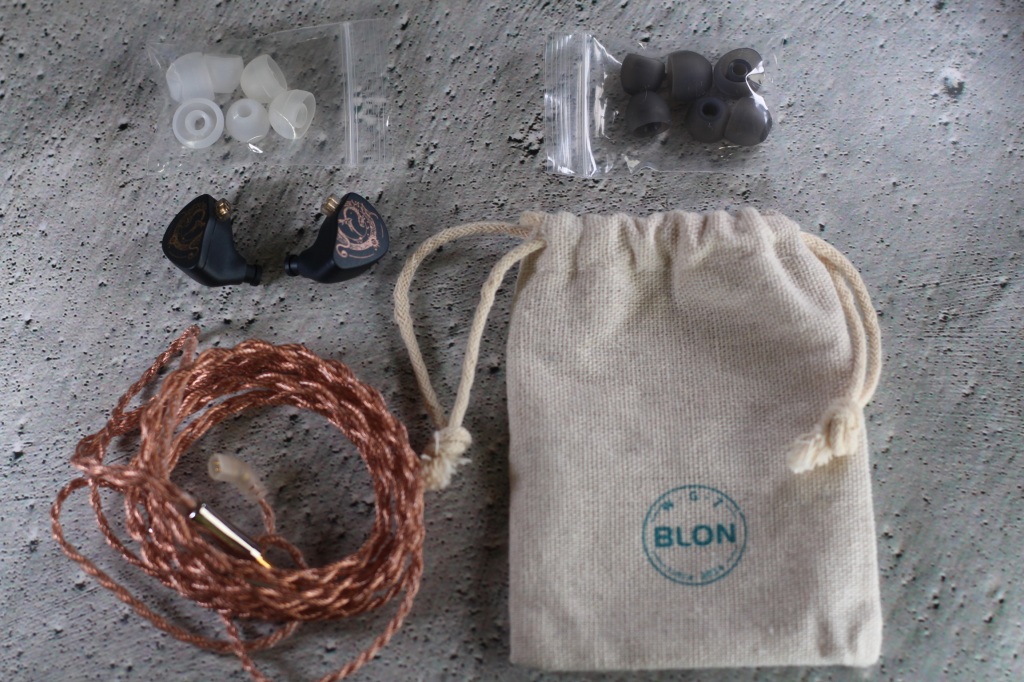
On the inside, a discreet cradle for the headphones, and just below BLON managed to store a fabric bag (the brand's good old corn bag), which contains two silicone tip kits, a black tips and another in white, with no difference in the mouthpiece. Furthermore, there is a beautifully constructed cable, with four cores, metal connector and splitter, and a metal chin slider. The only point that clashes is the 0.78 mm QDC connection for the headphones. As for the source, the pin is 3.5 mm. Optionally, it can be purchased with a microphone on the cable, or with a 4.4 mm termination cable.
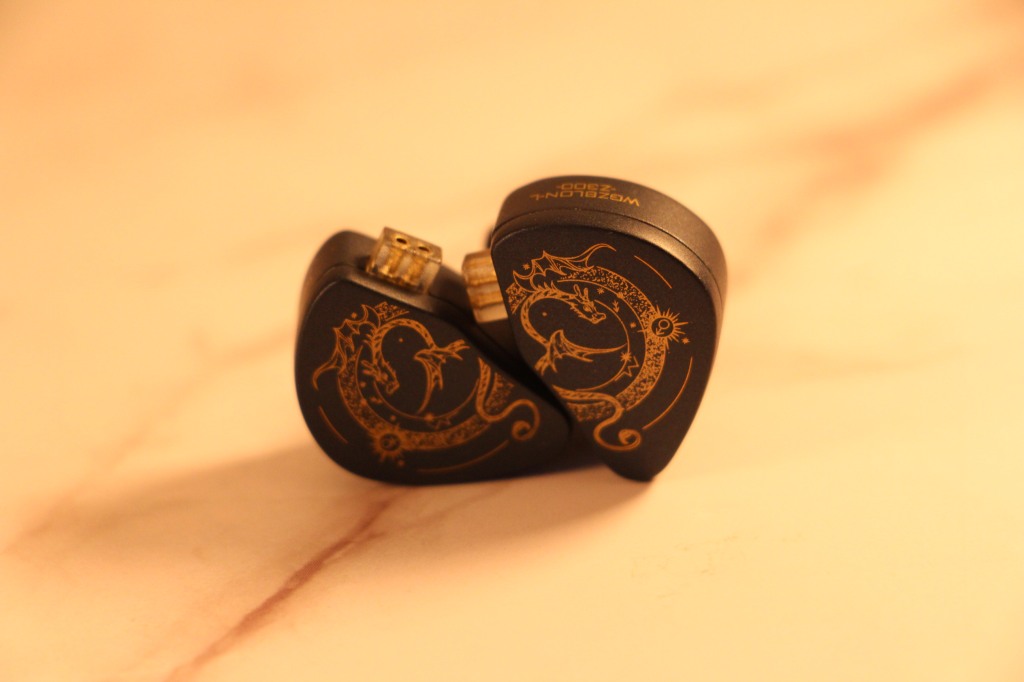
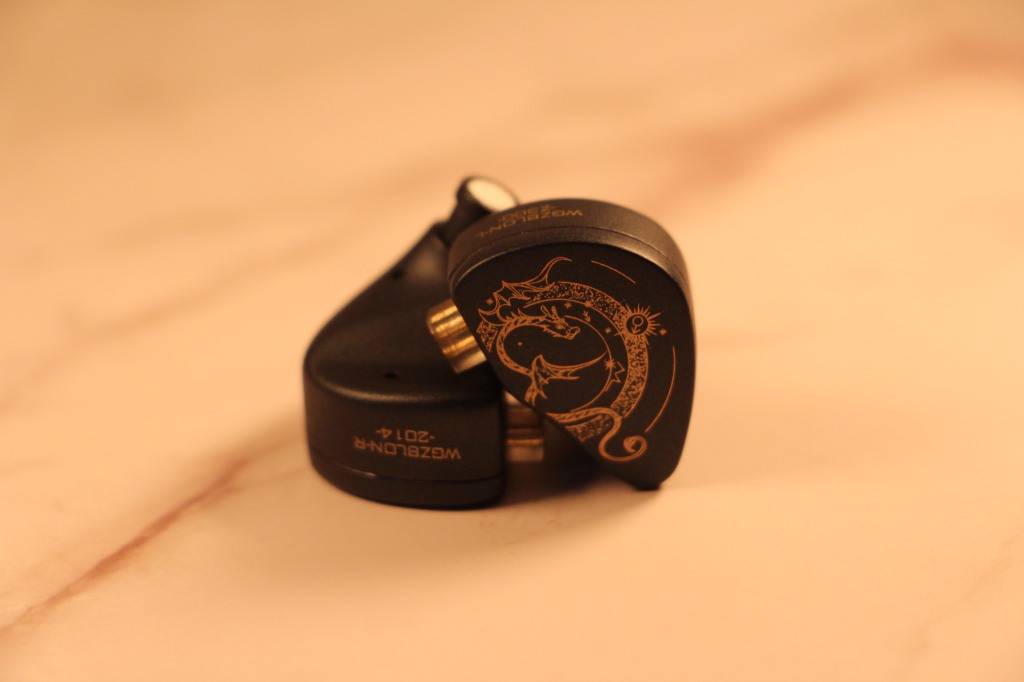

The phone can come in gold, 18K gold plated, or in the beautiful matte blue color of this test model. Its entire body is made of zinc alloy, with the dragon on the case printed on the faceplates with gold paint. Its nozzle seems to be made of resin, and it has a very restrictive metal filter at the tip.
And its sound is generated by a 10 mm dynamic driver, with a silicone diaphragm.
Comfort
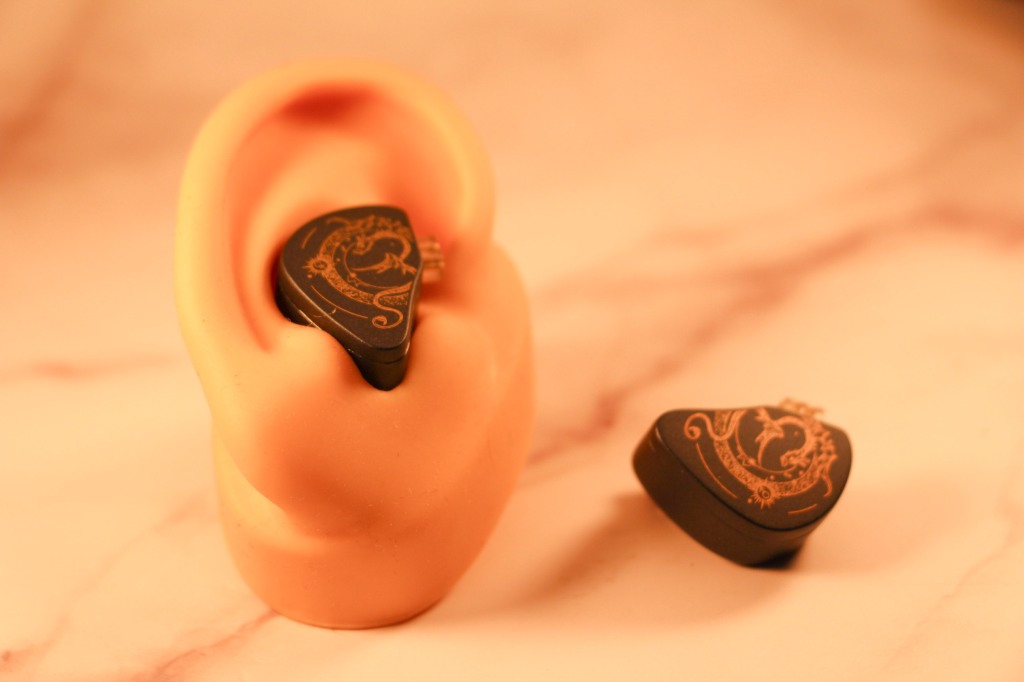
I used the BLON Z300 without any discomfort. Its body is smooth, with no sharp corners, and although the short nozzle forced me to use L-tips with a shallow insertion, I don't consider this a problem. Its seal is very good, and there is no pressure on the ear canal.
Musical Sound
I tried the phone on different sources, which are: iPhone SE (my “DAP”), Dell Laptop, Apple Dongle, Truthear Shio, Cayin RU6 , Topping G5 and Topping DX3 Pro+.
By the way, I invite you to check out my headphone test playlist on Spotify . This is a dynamic playlist, and the songs can change at any time, but they will always follow the purpose of presenting all the points I mention in my musical evaluation of the headphones.
Regarding sources, the BLON Z300 plays smoothly on any source, scaling well with better sources. It pairs better with colder sources, such as the Topping mentioned above.
There is a lot of vigor in the drums of a “Drum Solo” , at the same time that it is sublime in presenting Champignon's fantastic bass line on CBJR tracks . Cellos and double basses also sound with a lot of weight and intensity, a delight for bassheads.
However, the driver with a silicone diaphragm proved to be very slow for the kick drums of Blind Guardian's “Valhalla” , while at the same time it makes any complex track quite messy. It reminded me exactly of the BL03 in this aspect, and I recommend that fans of Capiroto's music stay away from this headphone.
However, there is a bit of mud on tracks like “La Bohéme” , where everything sounds very dragged and doesn't seem to progress. Intense voices like Amy Lee 's , while not attacking, also sound lifeless, less than expected. They're not mids that are too far back in the spectrum, they're just mids that are kind of muzzled.
Regarding the instruments, there is little clarity and a warmer tone than expected in everything. Not even the solo of “This I Love” escapes this curtain of heat, sounding less vivid and intense than we might expect. This headphone here is, without a doubt, a nightmare for midheads and the like.
Of course, he doesn't deliver infinite dishes in a “September in Montreal” , but there's an extension that I really didn't expect. By the way, he also takes care of the splash and timbre of these cymbals. Another highlight of the phone is the timbre and the presence of triangles in a forró, and when it comes to violins , once again the BLON enchants in timbre, and also delivers a good dose of airiness.
Something to keep in mind is that the Z300 is a headphone with safe, comfortable, non-fatiguing highs. However, there is a slight peak at 8 kHz that can hurt ears sensitive to this frequency region, especially at higher volumes.
The image formed on this stage is very confusing, with a noticeable overlap of instruments, which affects the performance on complex tracks. Its layering is weak, and the separation of instruments also leaves something to be desired. In terms of details, it delivers macro details and even some micro details well, while the phone's resolution is good, but nothing more.
The verdict on the technicalities is that the Z300 works best as a headphone to listen to music passively, without worrying about technical details, and ends up working better as a headphone to play music in the background, perhaps a headphone to use when driving or at the gym.
Sound in Games
For battle royale games like PUBG, the Z300's lack of three-dimensionality is evident. The perception we have is that sound emitters teleport from left to right, and vice versa, there is no gradual transition.
In FPS games, such as CS2 ( without changing the sound settings ), the Z300's bass causes problems in understanding the communication of its companions, as well as tending to mask steps in more intense exchange situations. It's possible to play well with it, but it's not the best option.
In casual games, like the Brazilian 171 , the Z300's tuning is very interesting for explosions and other chaotic situations, and is very pleasant for nature sounds in Genshin Impact. However, a more adequate sense of a three-dimensional world is missing.
In simulation games, the redemption of the Z300 occurs. From Project Cars to Forza, this headphone proved to be fascinating for bringing the sound of engines, and at around 35 USD there is no headphone that makes Mercedes AMGs sound like trumpets of the apocalypse as well as this BLON is capable of doing.
Sound in Films, Series and Podcasts
“These bass match a Suckerpunch ”, I thought, but I ended up opting for “The Fast and the Furious Tokyo Drift” , and I confess that this headphone was able to drive me crazy with the sound of engines. A “Ford vs Ferrari” was also very interesting to watch with the Z300, as long as you don't mind the somewhat muddy sound in some dialogues.
With this in mind, I do not recommend the Z300 to anyone looking for a headset to listen to podcasts or to study/work, as the heavy bass of the headset can be a problem in understanding voices well, especially when the recording/transmission is poor.
Conclusion
Music and driams, again. I have a special affection for BLON, after all the BL01 was the first hype that I got into audiophilia, spread by my friends Pombo and Caito. I believe it was my third or fourth headphone in my life, and that soft and cozy sound immediately enchanted me, so much so that I keep my BL01 with affection to this day. It is, perhaps, one of the best background headphones I have ever heard.
When I had the opportunity to listen to the BL03 and BL07, I was able to better understand the brand's idea, even though the BL07 is slightly more technical than any other BLON that has ever passed through my ears. By the way, the Z300 reminded me a lot of the BL03, although it is more comfortable and more beautiful (although this criterion is more subjective than the subjectivity already inherent to the hobby).
However, it is impressive how the chi-fi market has changed since BL03. Cheap headphones are getting better and better, and even comfortable-sounding headphones can be technical enough to please you all the time, like a Tripowin Piccolo for example . And I even understand that the Z300 wasn't created to be an exponent in the category, but compared to a Kiwi Ears Cadenza , the poor BLON is light years behind in every aspect except one: the ability to play background music on your day-to-day.
By the way, as repetitive as I'm being in saying this, this seems to have been BLON's goal with the Z300: to make a beautiful background phone. And maybe that's enough of a selling point for BLON, but it wouldn't make me buy it.
Big hug!

Hello, friends. The one I bring you is the BLON Z300, a phone that was kindly sent to me by Linsoul for review, without any commitment or obligation to speak highly of the phone, just providing my opinions about it. Xiè xiè, Linsoul.
Note: This review was originally posted at avaliasom.com, my website.
Belief, Let Music Burn, Oppoty PT2, Never Give UP. Oppoty & Driams Pt 2. The errors in the BL03 box , which would have had everything to become a laughing stock, ended up becoming the hallmark of BLON's return to the market. By the way, BLON is the acronym formed by the phrase at the beginning of this paragraph.


The BLON Z300 was tuned by HBB , and as is inherent to Hawaiian tuning , this is a headphone with a lot of bass weight, but we'll talk about that later. First let's focus on the unboxing, which although it comes in a discreet cigarette box, it features a very interesting dragon on the front, and details about the phone on the back.




On the inside, a discreet cradle for the headphones, and just below BLON managed to store a fabric bag (the brand's good old corn bag), which contains two silicone tip kits, a black tips and another in white, with no difference in the mouthpiece. Furthermore, there is a beautifully constructed cable, with four cores, metal connector and splitter, and a metal chin slider. The only point that clashes is the 0.78 mm QDC connection for the headphones. As for the source, the pin is 3.5 mm. Optionally, it can be purchased with a microphone on the cable, or with a 4.4 mm termination cable.



The phone can come in gold, 18K gold plated, or in the beautiful matte blue color of this test model. Its entire body is made of zinc alloy, with the dragon on the case printed on the faceplates with gold paint. Its nozzle seems to be made of resin, and it has a very restrictive metal filter at the tip.
And its sound is generated by a 10 mm dynamic driver, with a silicone diaphragm.
Comfort

I used the BLON Z300 without any discomfort. Its body is smooth, with no sharp corners, and although the short nozzle forced me to use L-tips with a shallow insertion, I don't consider this a problem. Its seal is very good, and there is no pressure on the ear canal.
Musical Sound
I tried the phone on different sources, which are: iPhone SE (my “DAP”), Dell Laptop, Apple Dongle, Truthear Shio, Cayin RU6 , Topping G5 and Topping DX3 Pro+.
By the way, I invite you to check out my headphone test playlist on Spotify . This is a dynamic playlist, and the songs can change at any time, but they will always follow the purpose of presenting all the points I mention in my musical evaluation of the headphones.
Regarding sources, the BLON Z300 plays smoothly on any source, scaling well with better sources. It pairs better with colder sources, such as the Topping mentioned above.
- Bass: Level 5/5, Extension 3/5, Speed 2/5, Texture 4/5
There is a lot of vigor in the drums of a “Drum Solo” , at the same time that it is sublime in presenting Champignon's fantastic bass line on CBJR tracks . Cellos and double basses also sound with a lot of weight and intensity, a delight for bassheads.
However, the driver with a silicone diaphragm proved to be very slow for the kick drums of Blind Guardian's “Valhalla” , while at the same time it makes any complex track quite messy. It reminded me exactly of the BL03 in this aspect, and I recommend that fans of Capiroto's music stay away from this headphone.
- Midrange: Level 3/5, Presence 3/5, Clarity 1/5, Voices 4/5
However, there is a bit of mud on tracks like “La Bohéme” , where everything sounds very dragged and doesn't seem to progress. Intense voices like Amy Lee 's , while not attacking, also sound lifeless, less than expected. They're not mids that are too far back in the spectrum, they're just mids that are kind of muzzled.
Regarding the instruments, there is little clarity and a warmer tone than expected in everything. Not even the solo of “This I Love” escapes this curtain of heat, sounding less vivid and intense than we might expect. This headphone here is, without a doubt, a nightmare for midheads and the like.
- Treble: Level 3/5, Brightness 3/5, Airiness 2/5, Extension 2/5
Of course, he doesn't deliver infinite dishes in a “September in Montreal” , but there's an extension that I really didn't expect. By the way, he also takes care of the splash and timbre of these cymbals. Another highlight of the phone is the timbre and the presence of triangles in a forró, and when it comes to violins , once again the BLON enchants in timbre, and also delivers a good dose of airiness.
Something to keep in mind is that the Z300 is a headphone with safe, comfortable, non-fatiguing highs. However, there is a slight peak at 8 kHz that can hurt ears sensitive to this frequency region, especially at higher volumes.
- Technicalities: Sound Stage 2/5, Image 2/5, Layering 1/5, Separation 2/5, Details 3/5, Resolution 3/5
The image formed on this stage is very confusing, with a noticeable overlap of instruments, which affects the performance on complex tracks. Its layering is weak, and the separation of instruments also leaves something to be desired. In terms of details, it delivers macro details and even some micro details well, while the phone's resolution is good, but nothing more.
The verdict on the technicalities is that the Z300 works best as a headphone to listen to music passively, without worrying about technical details, and ends up working better as a headphone to play music in the background, perhaps a headphone to use when driving or at the gym.
Sound in Games
For battle royale games like PUBG, the Z300's lack of three-dimensionality is evident. The perception we have is that sound emitters teleport from left to right, and vice versa, there is no gradual transition.
In FPS games, such as CS2 ( without changing the sound settings ), the Z300's bass causes problems in understanding the communication of its companions, as well as tending to mask steps in more intense exchange situations. It's possible to play well with it, but it's not the best option.
In casual games, like the Brazilian 171 , the Z300's tuning is very interesting for explosions and other chaotic situations, and is very pleasant for nature sounds in Genshin Impact. However, a more adequate sense of a three-dimensional world is missing.
In simulation games, the redemption of the Z300 occurs. From Project Cars to Forza, this headphone proved to be fascinating for bringing the sound of engines, and at around 35 USD there is no headphone that makes Mercedes AMGs sound like trumpets of the apocalypse as well as this BLON is capable of doing.
Sound in Films, Series and Podcasts
“These bass match a Suckerpunch ”, I thought, but I ended up opting for “The Fast and the Furious Tokyo Drift” , and I confess that this headphone was able to drive me crazy with the sound of engines. A “Ford vs Ferrari” was also very interesting to watch with the Z300, as long as you don't mind the somewhat muddy sound in some dialogues.
With this in mind, I do not recommend the Z300 to anyone looking for a headset to listen to podcasts or to study/work, as the heavy bass of the headset can be a problem in understanding voices well, especially when the recording/transmission is poor.
Conclusion
Music and driams, again. I have a special affection for BLON, after all the BL01 was the first hype that I got into audiophilia, spread by my friends Pombo and Caito. I believe it was my third or fourth headphone in my life, and that soft and cozy sound immediately enchanted me, so much so that I keep my BL01 with affection to this day. It is, perhaps, one of the best background headphones I have ever heard.
When I had the opportunity to listen to the BL03 and BL07, I was able to better understand the brand's idea, even though the BL07 is slightly more technical than any other BLON that has ever passed through my ears. By the way, the Z300 reminded me a lot of the BL03, although it is more comfortable and more beautiful (although this criterion is more subjective than the subjectivity already inherent to the hobby).
However, it is impressive how the chi-fi market has changed since BL03. Cheap headphones are getting better and better, and even comfortable-sounding headphones can be technical enough to please you all the time, like a Tripowin Piccolo for example . And I even understand that the Z300 wasn't created to be an exponent in the category, but compared to a Kiwi Ears Cadenza , the poor BLON is light years behind in every aspect except one: the ability to play background music on your day-to-day.
By the way, as repetitive as I'm being in saying this, this seems to have been BLON's goal with the Z300: to make a beautiful background phone. And maybe that's enough of a selling point for BLON, but it wouldn't make me buy it.
Big hug!










